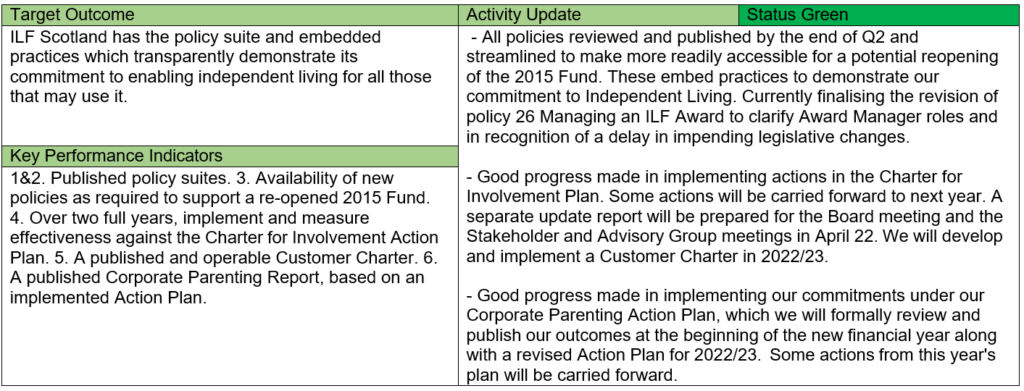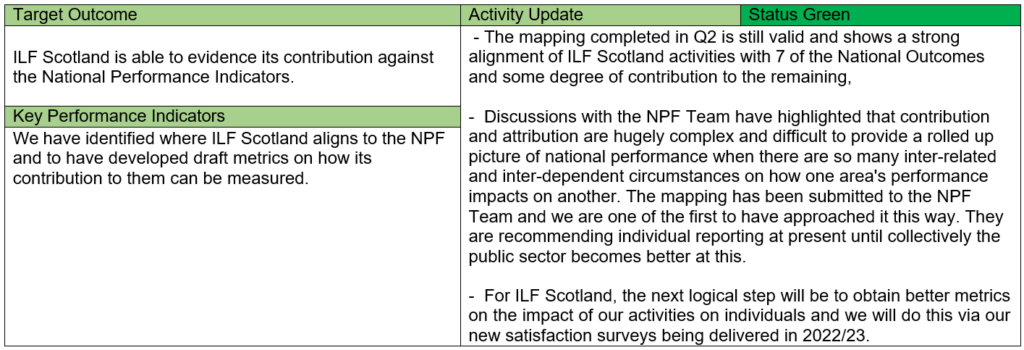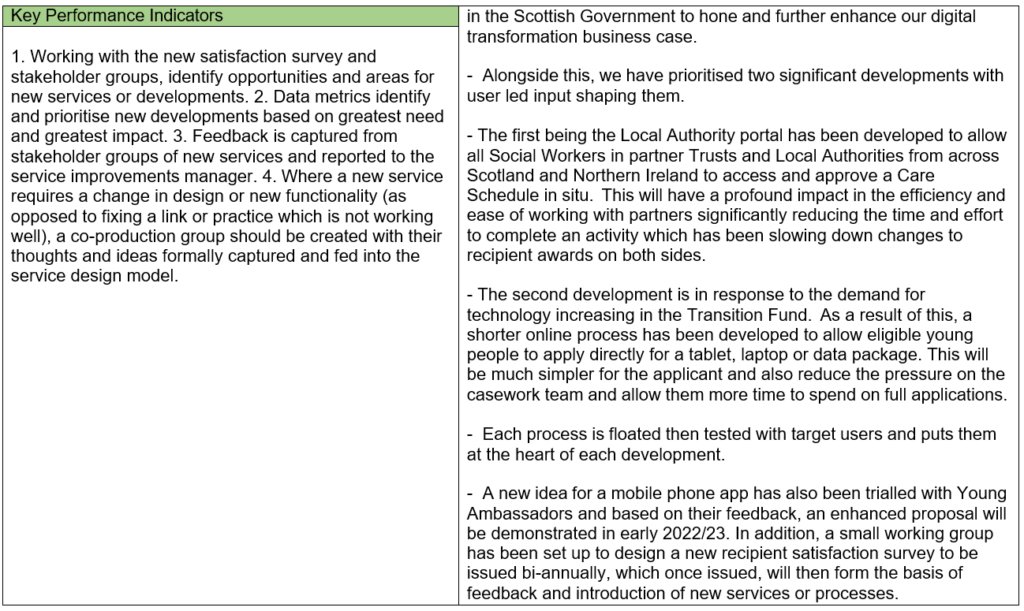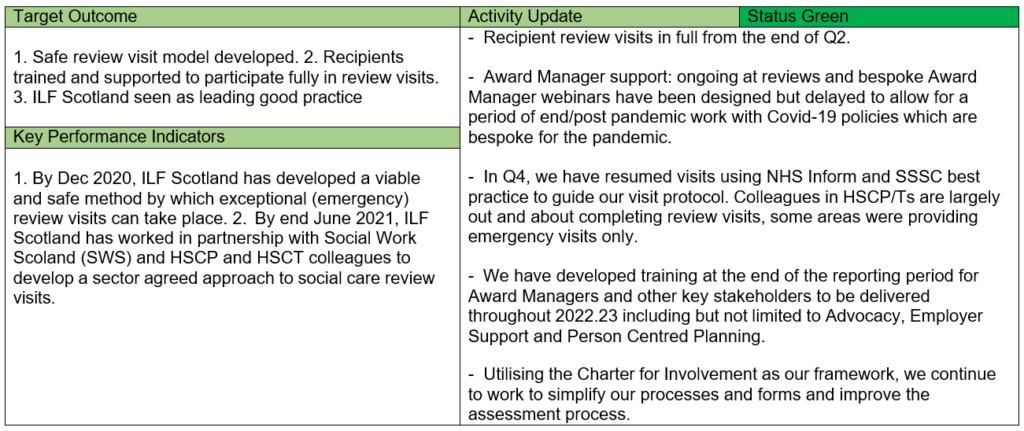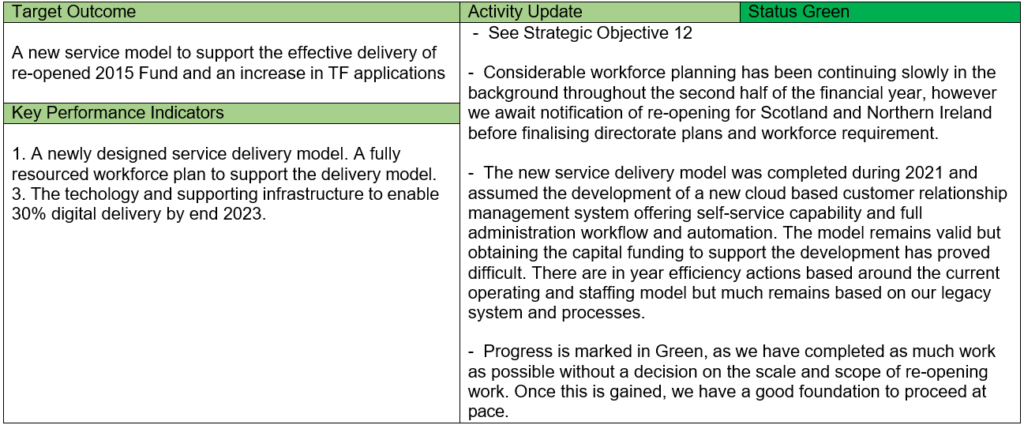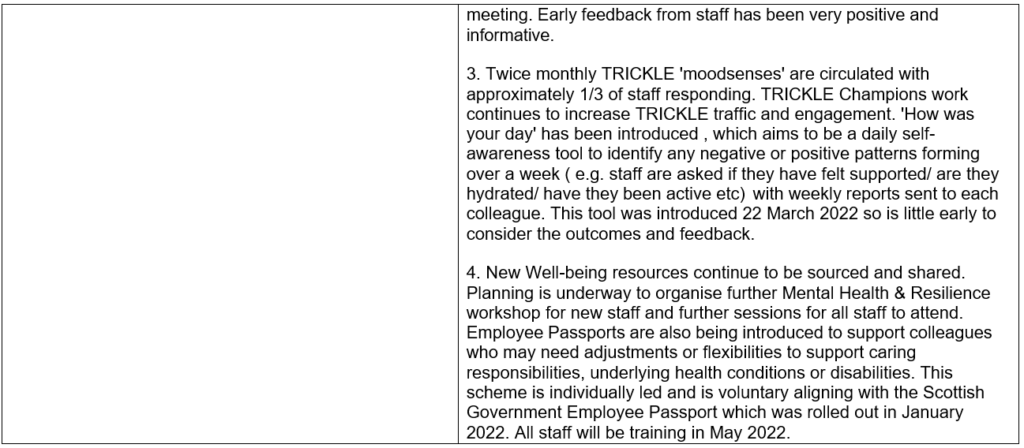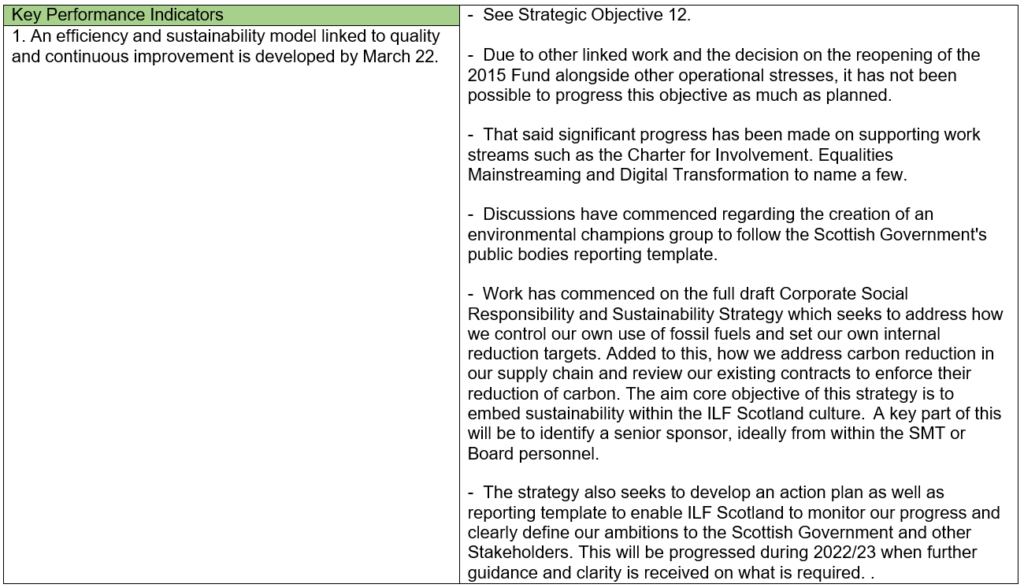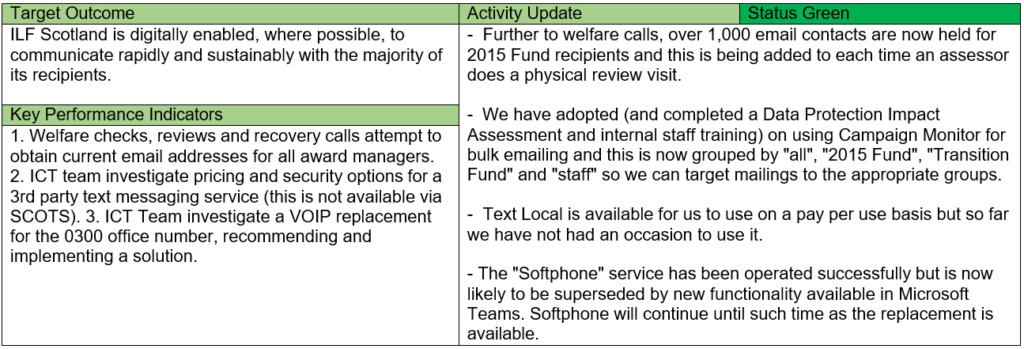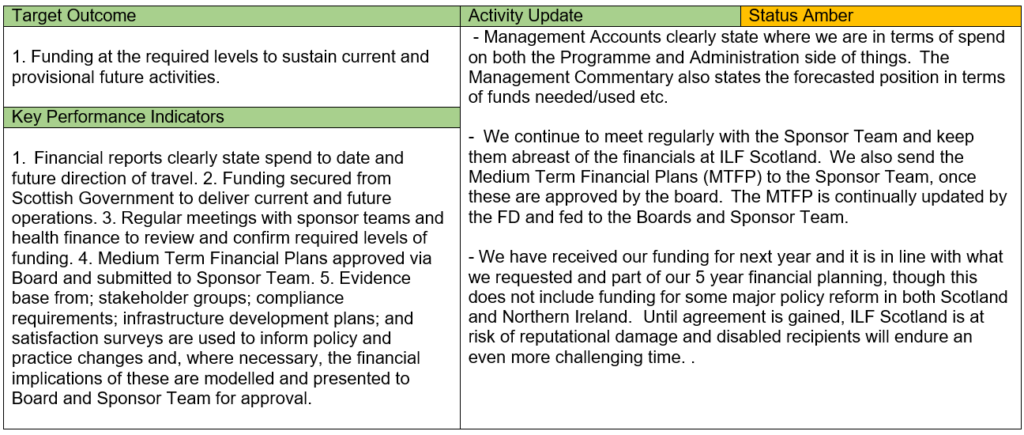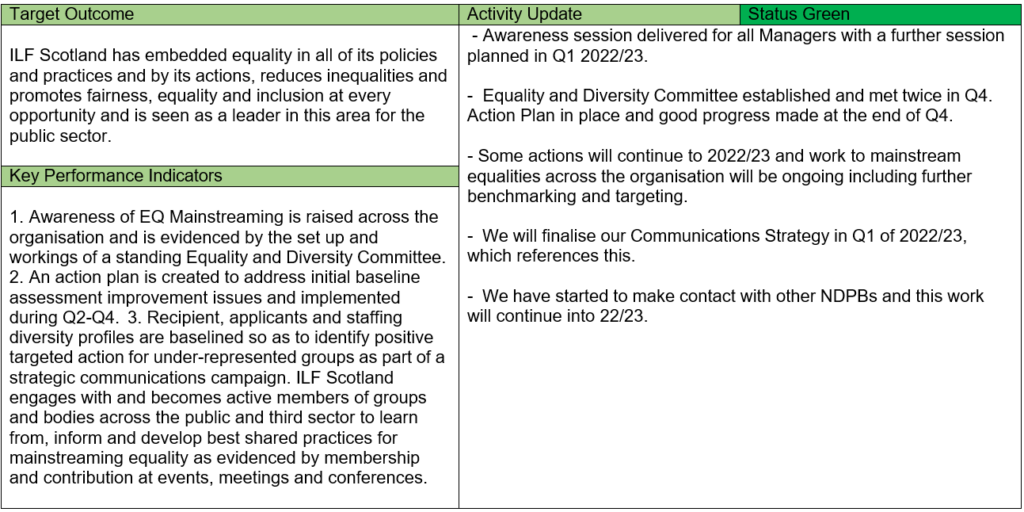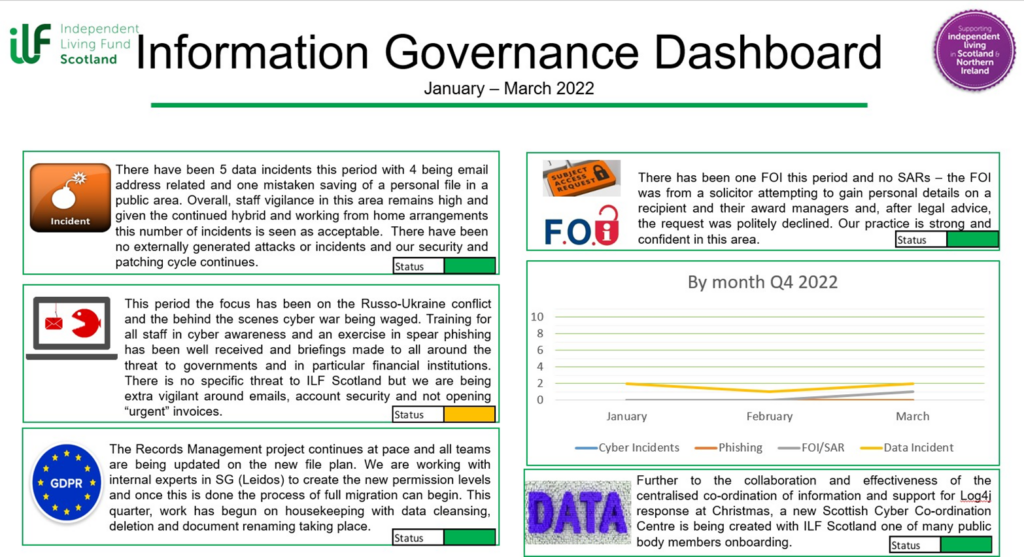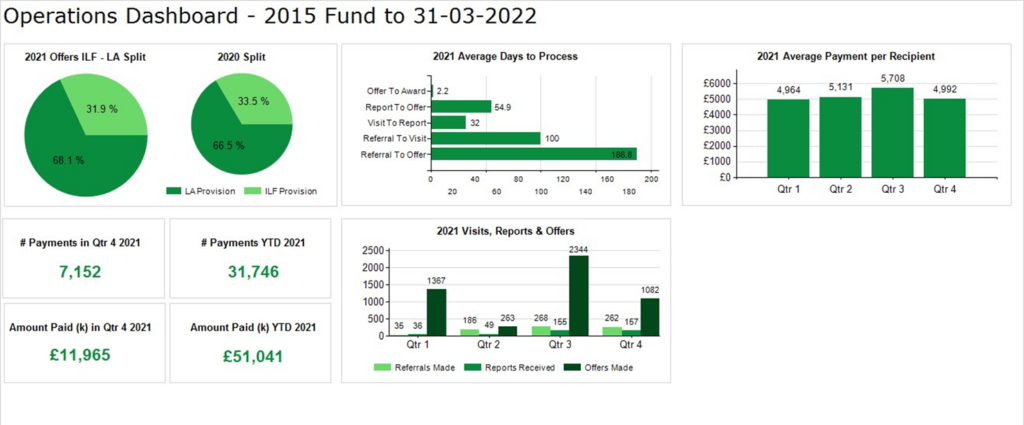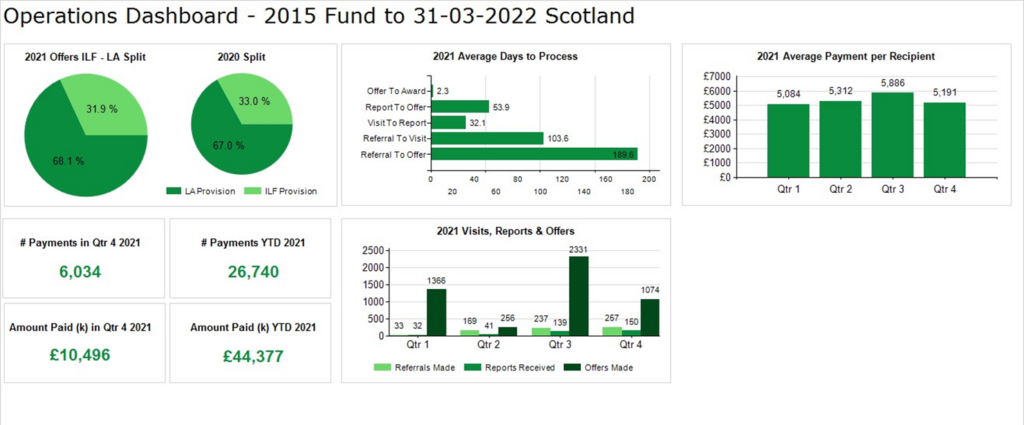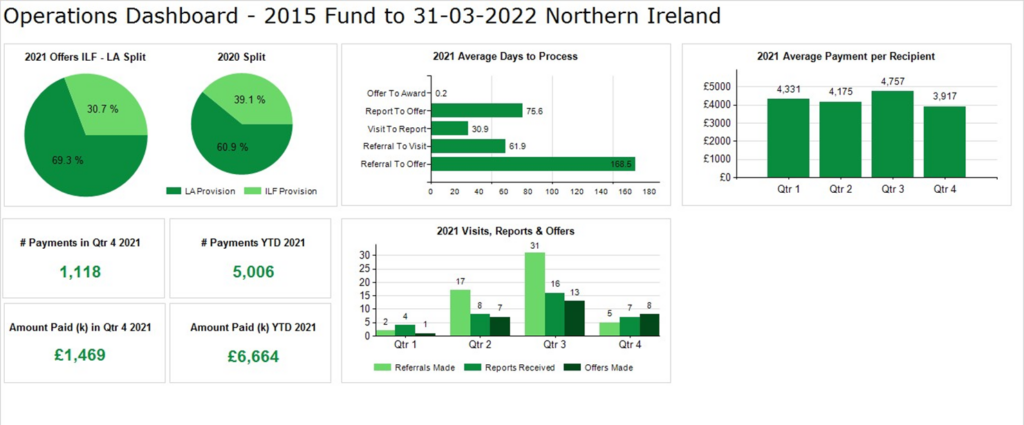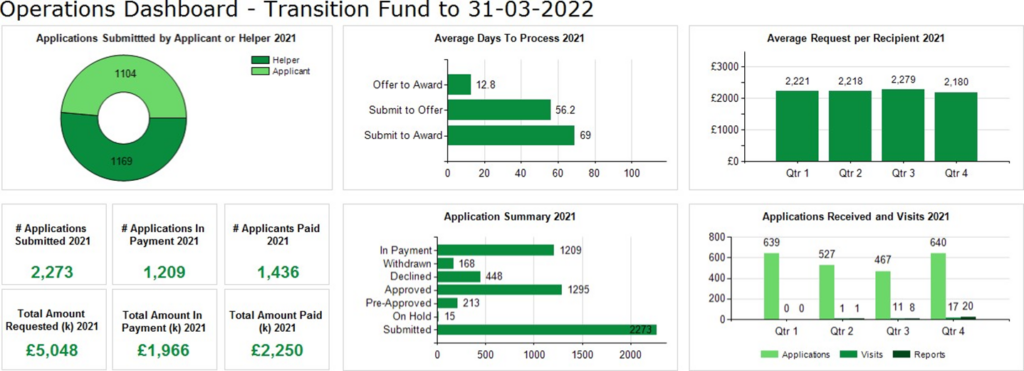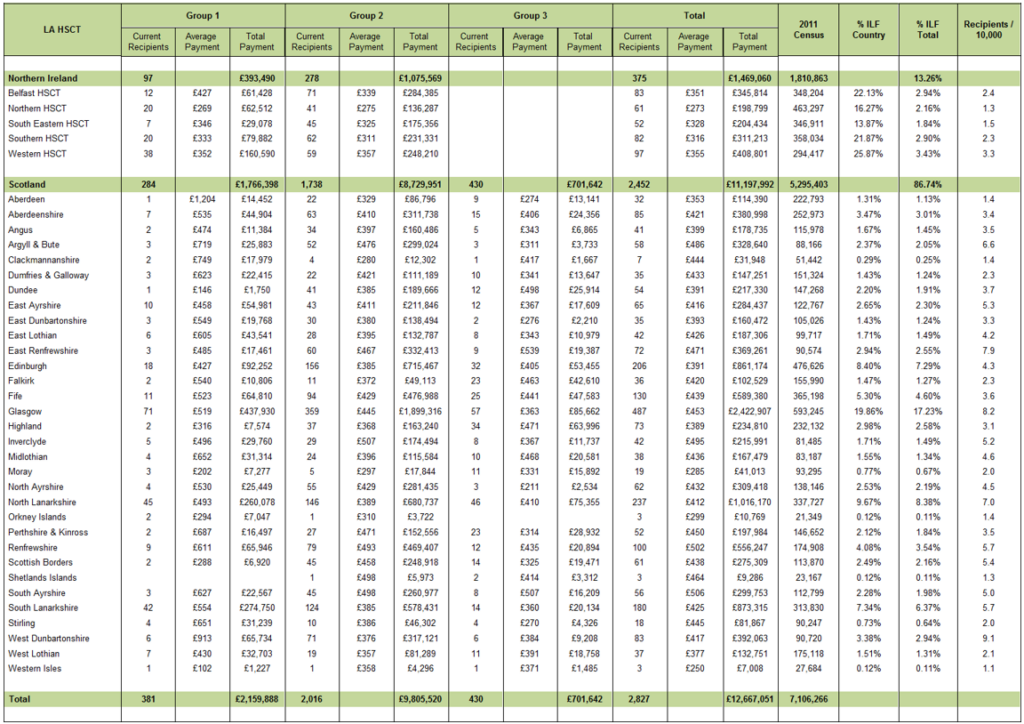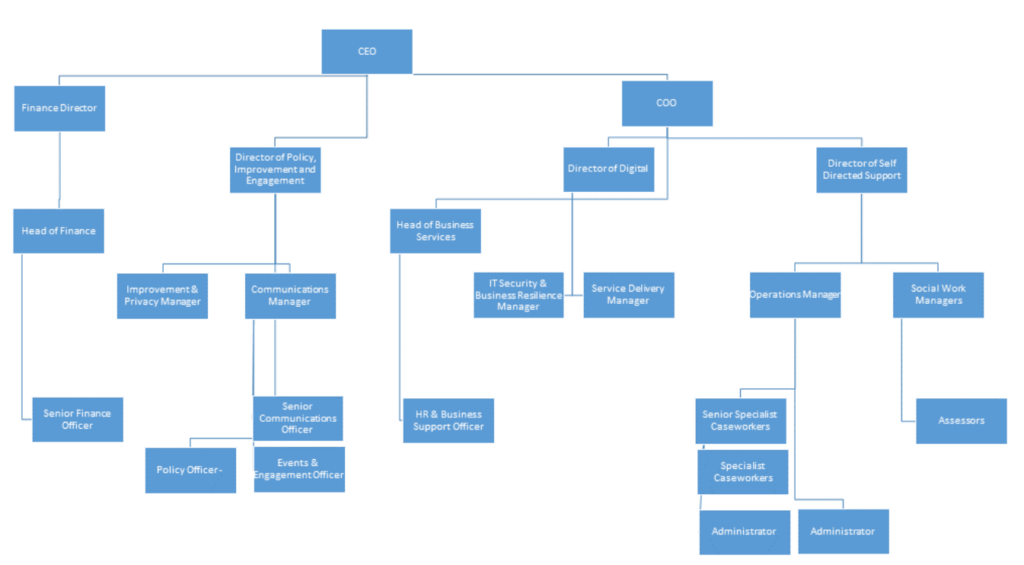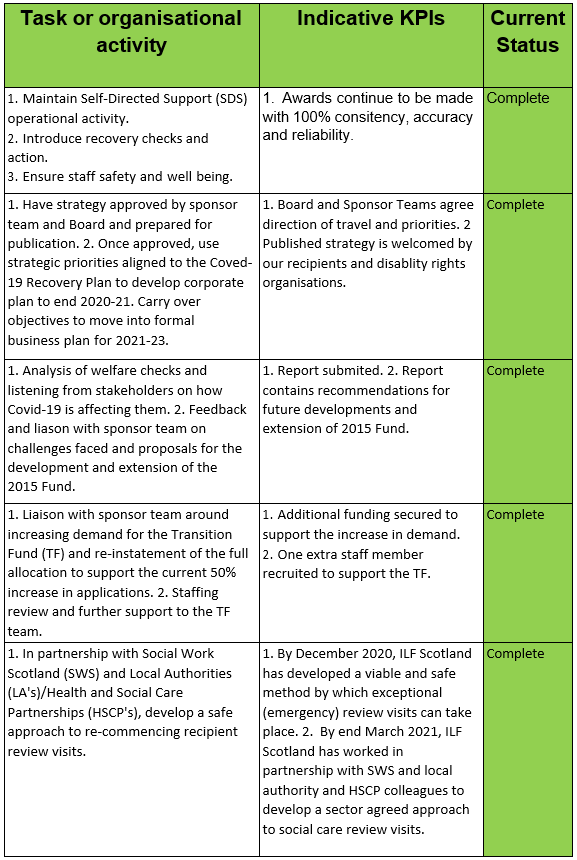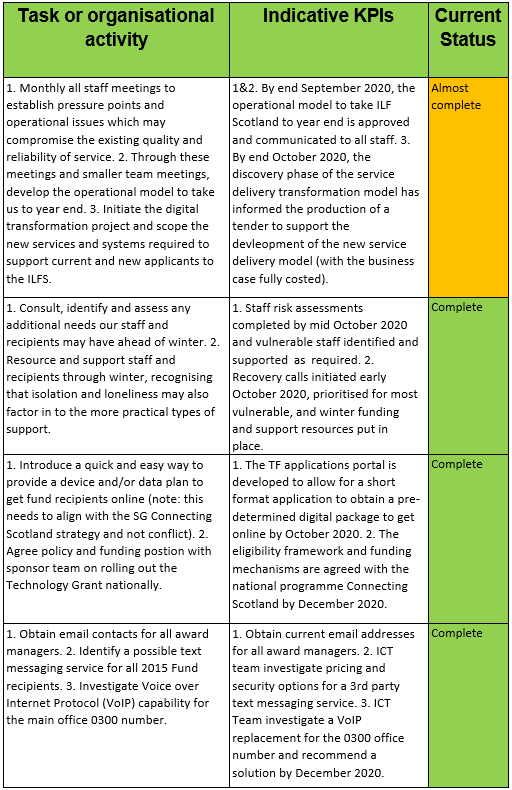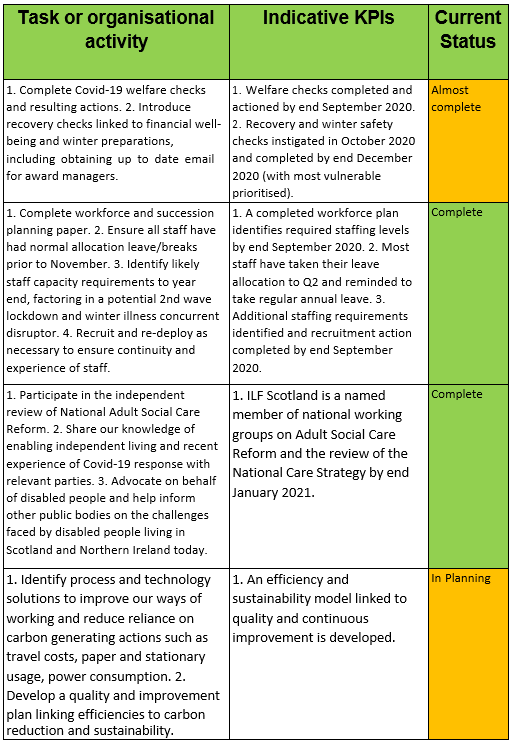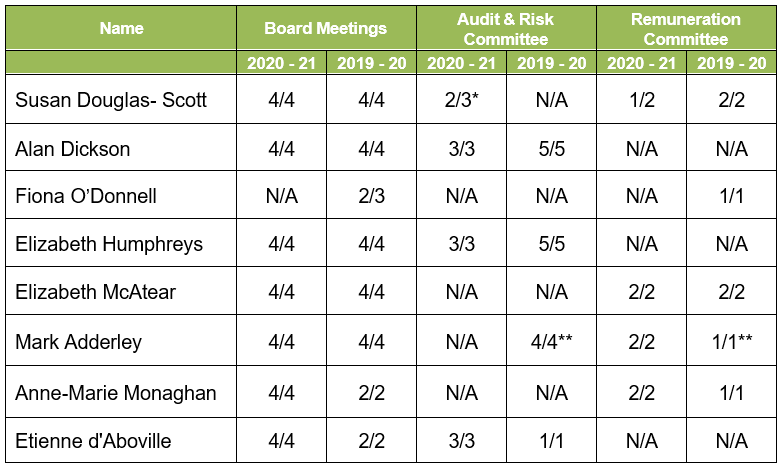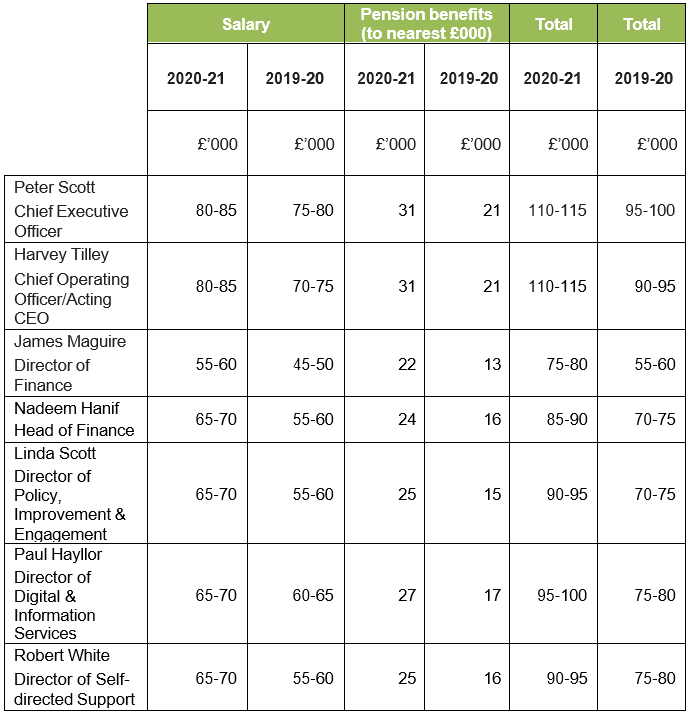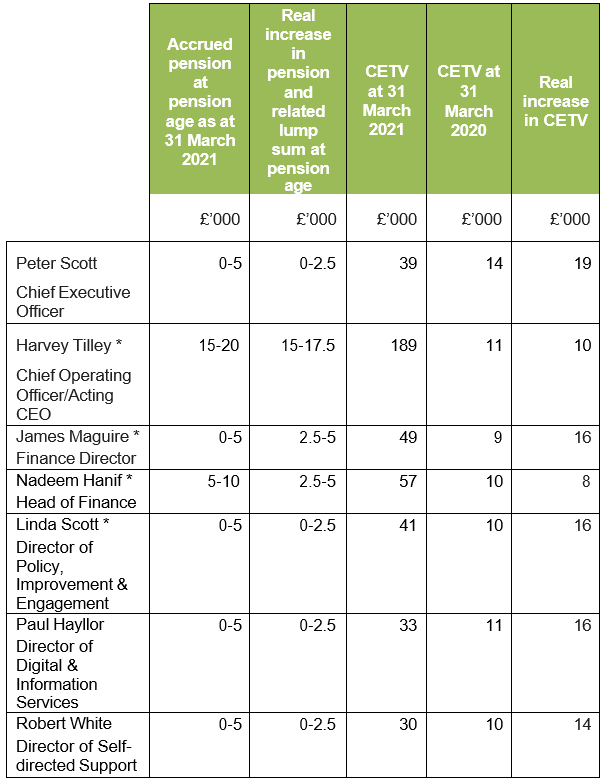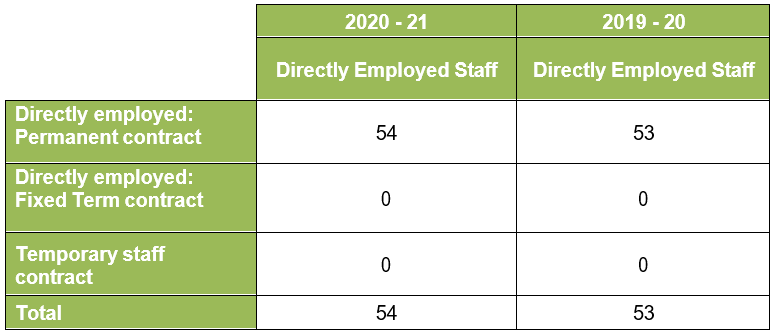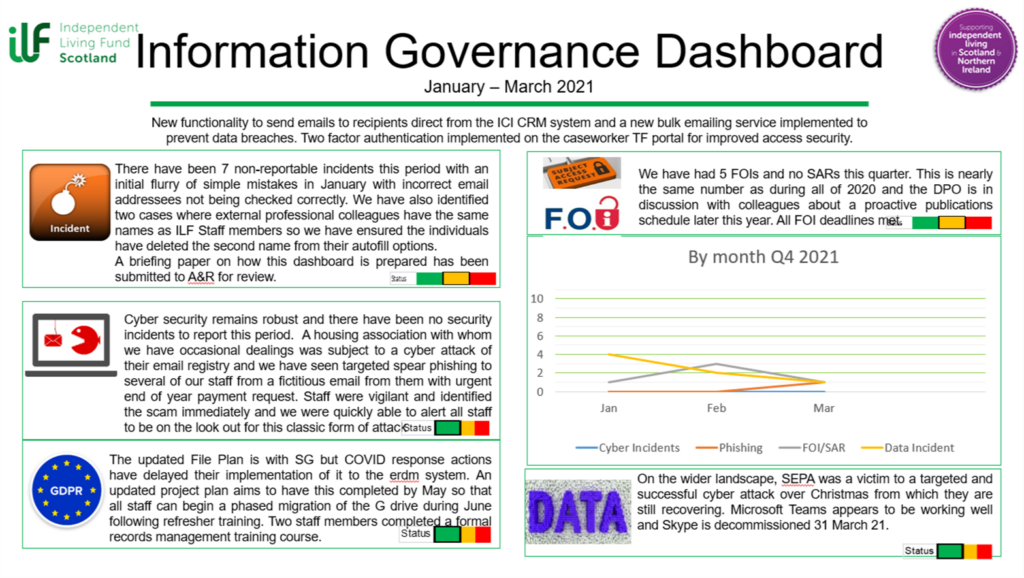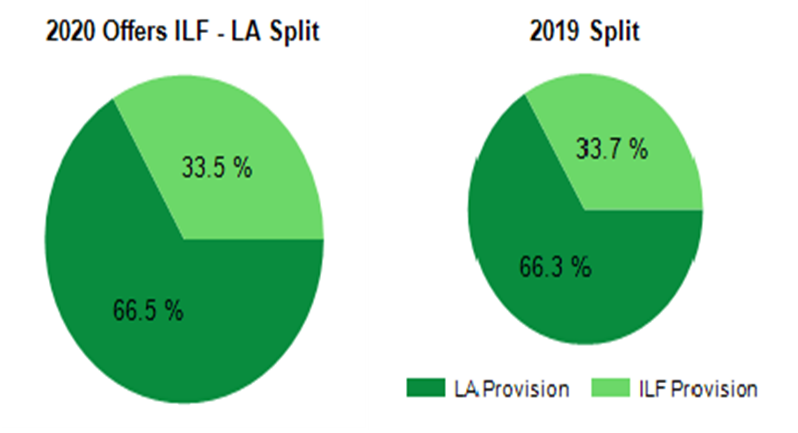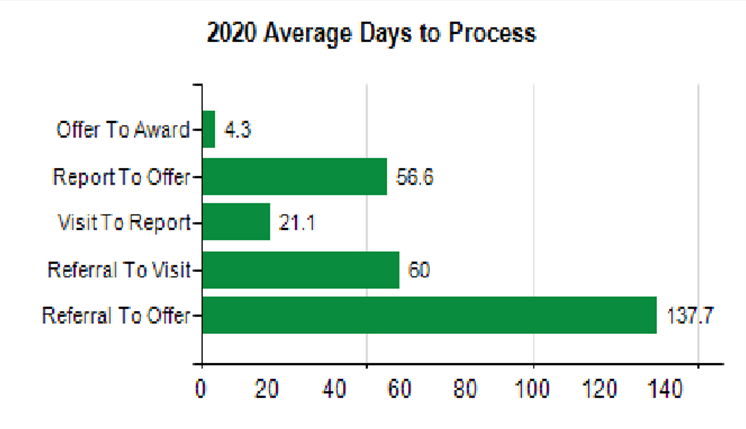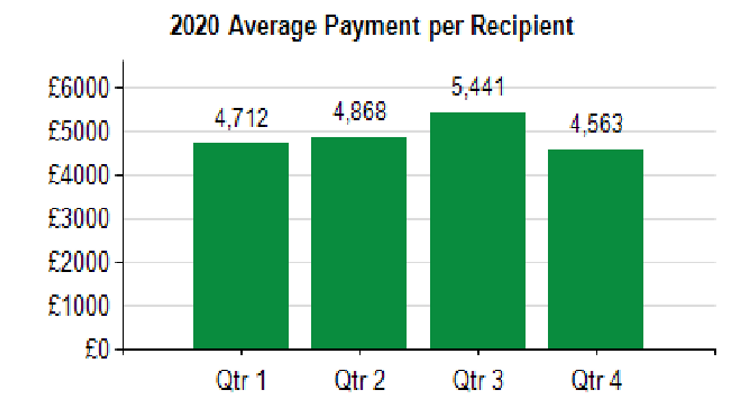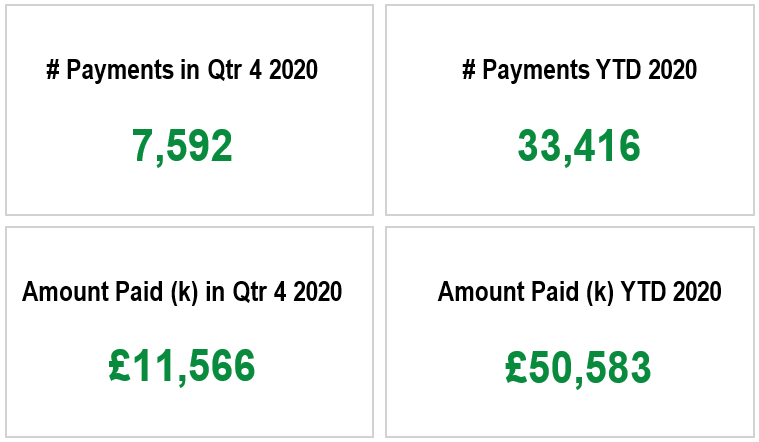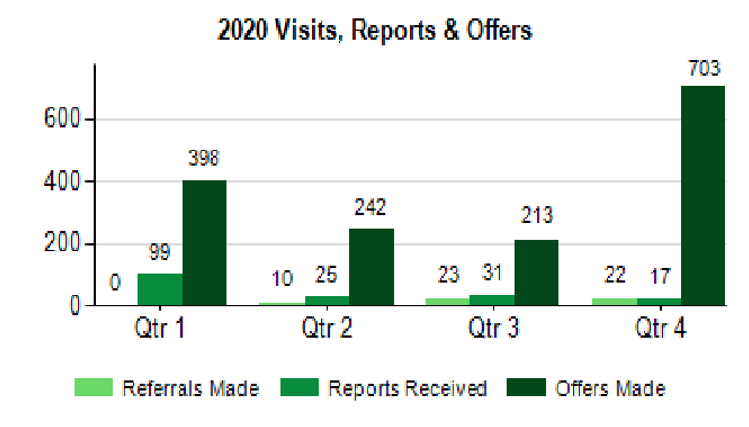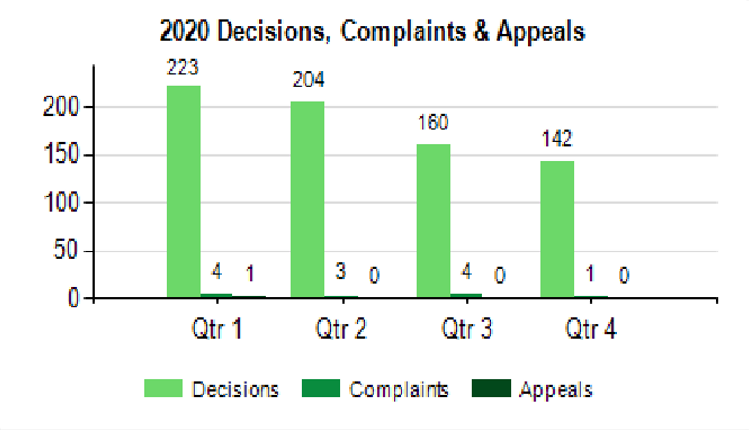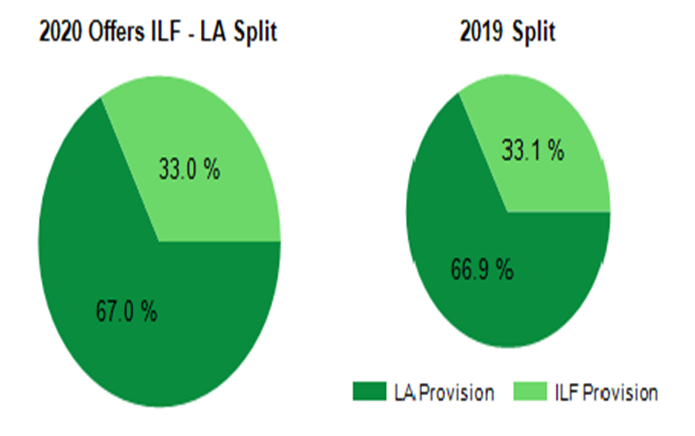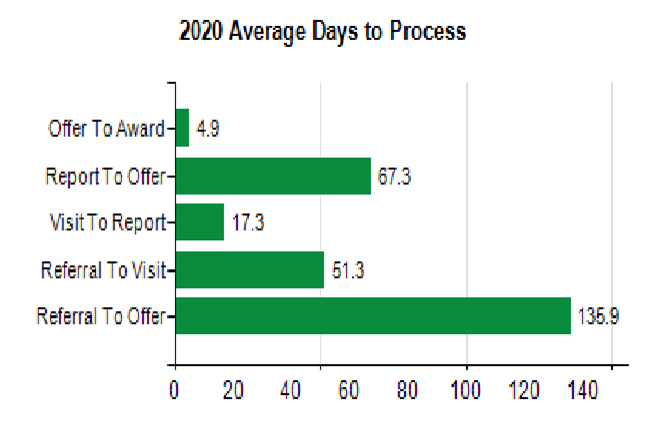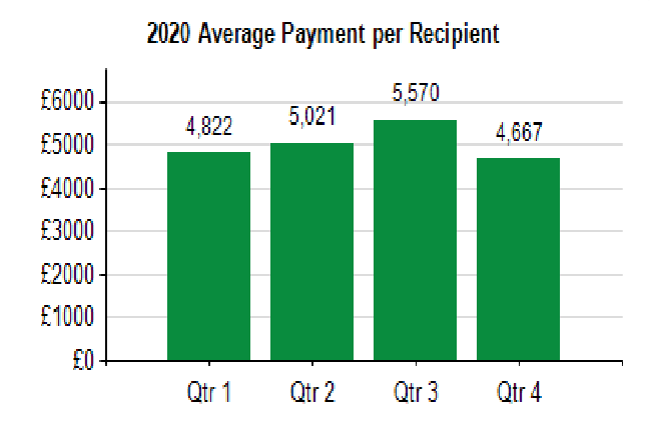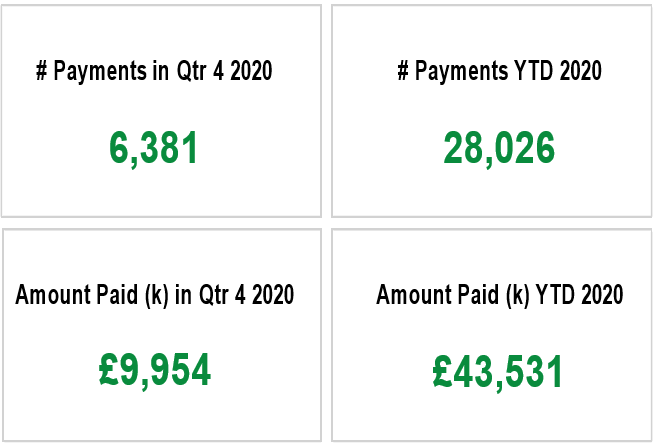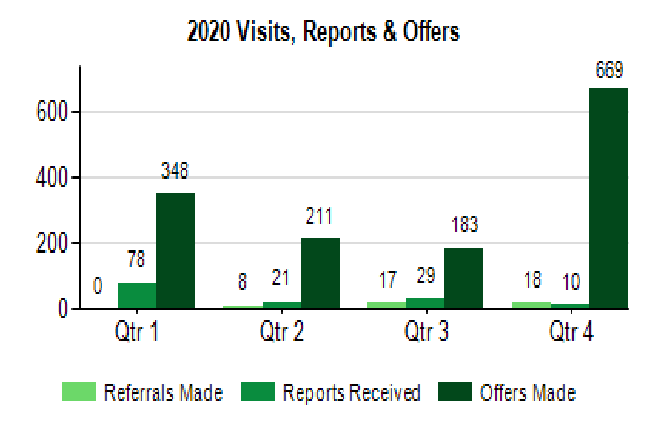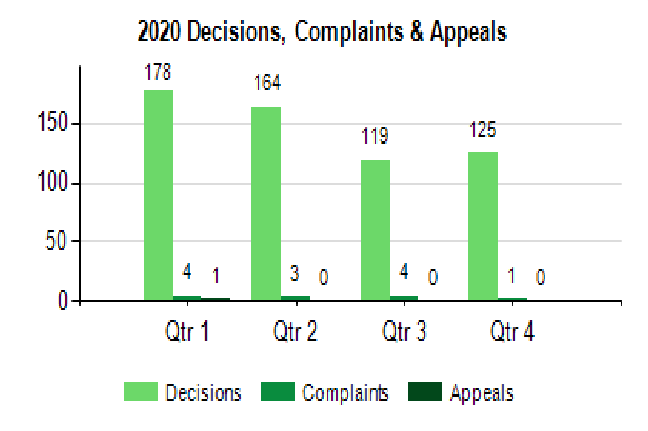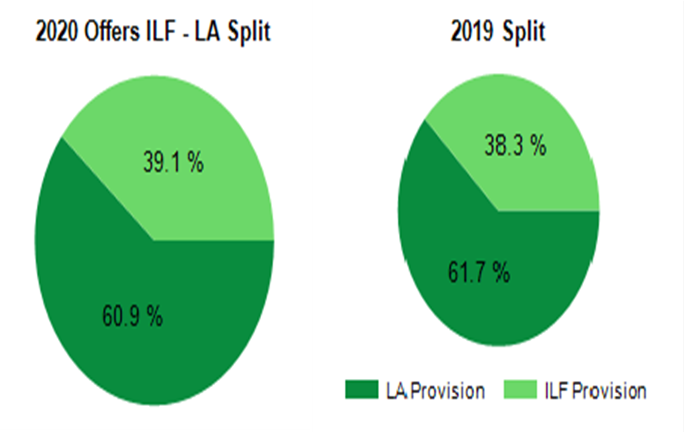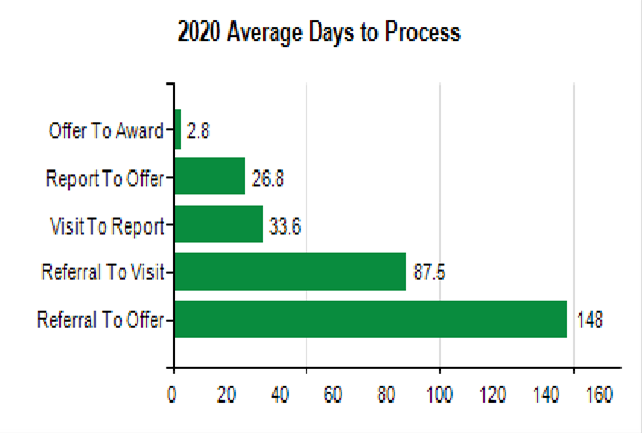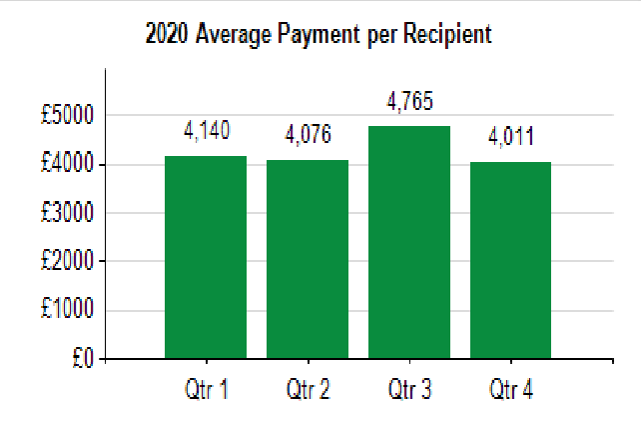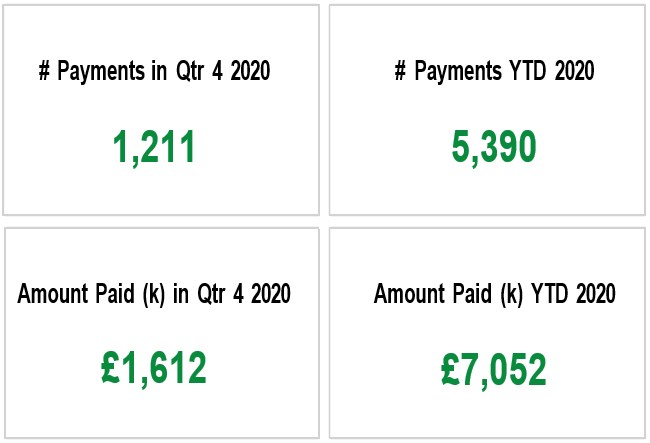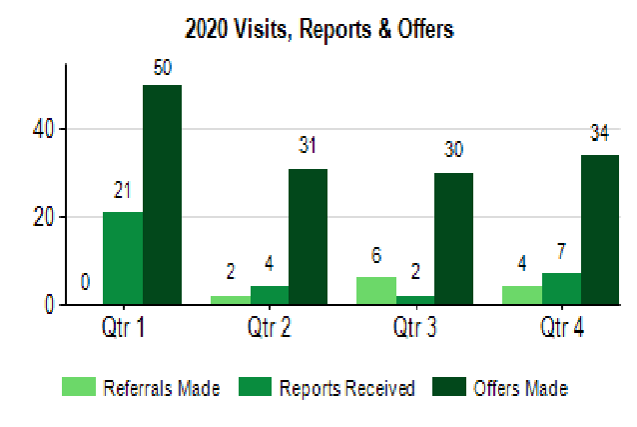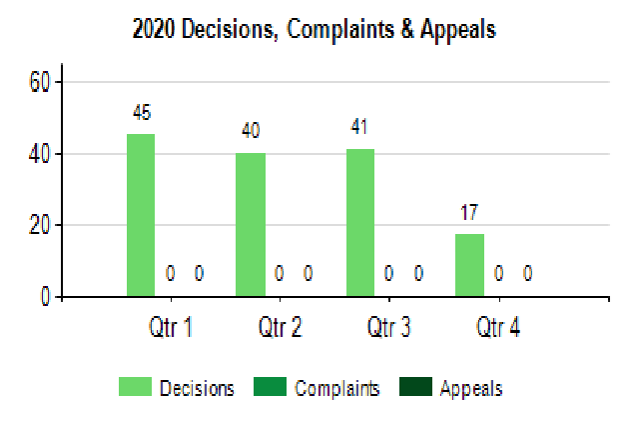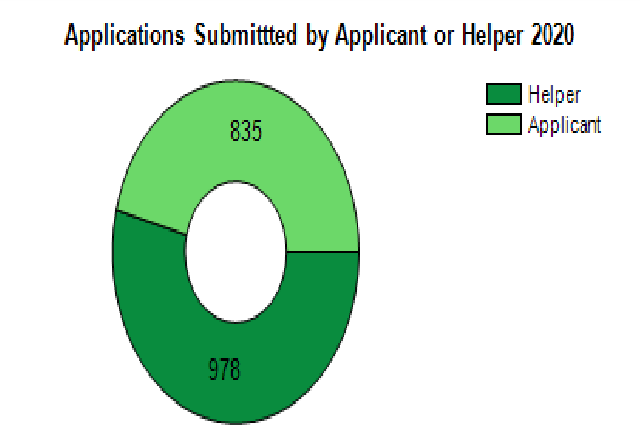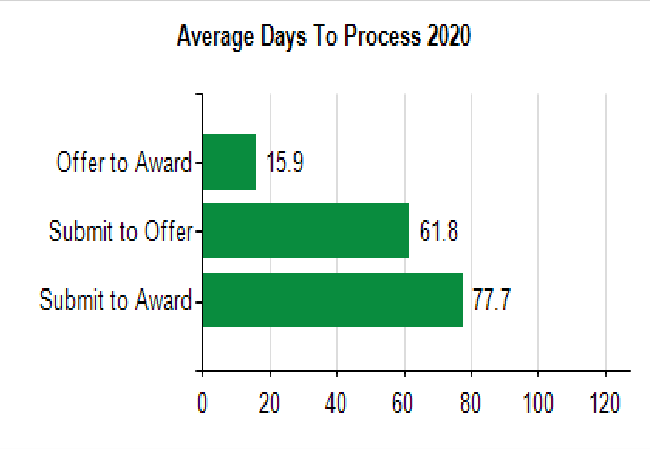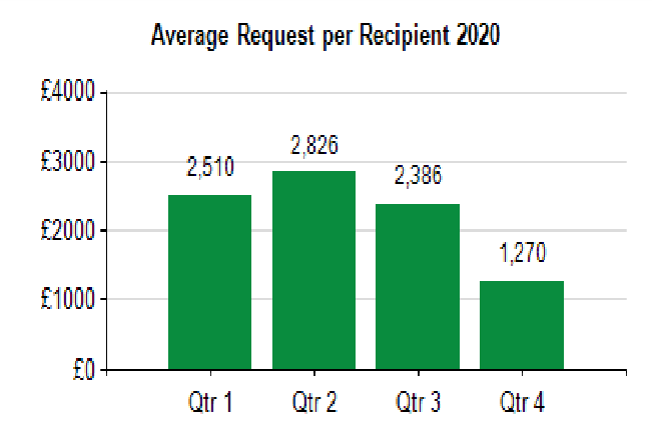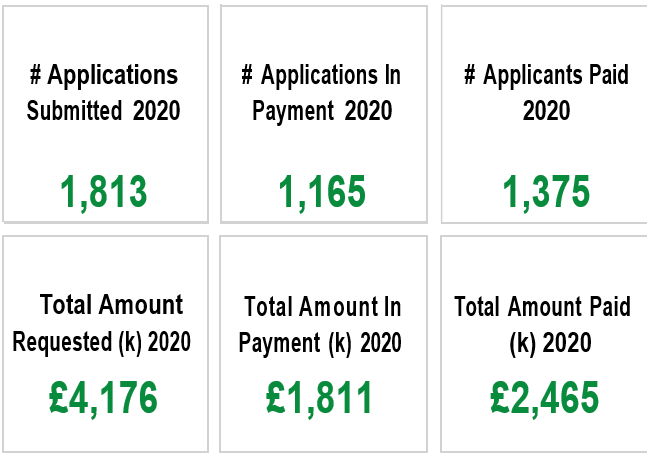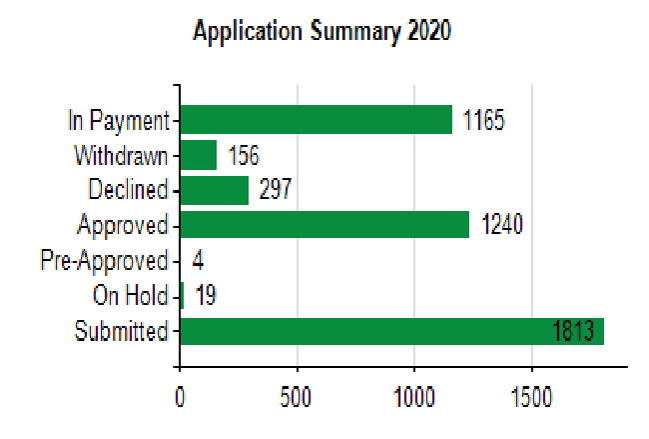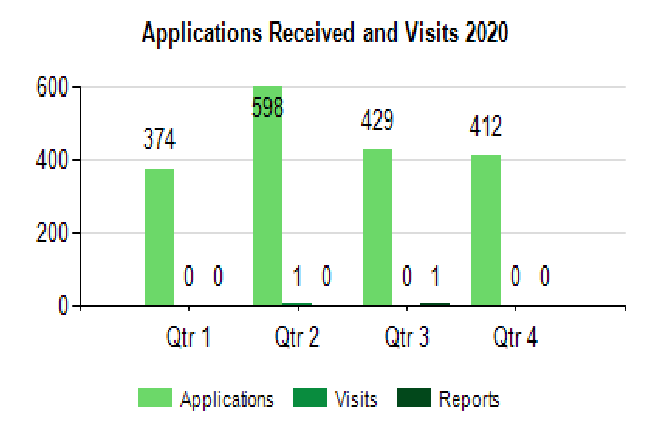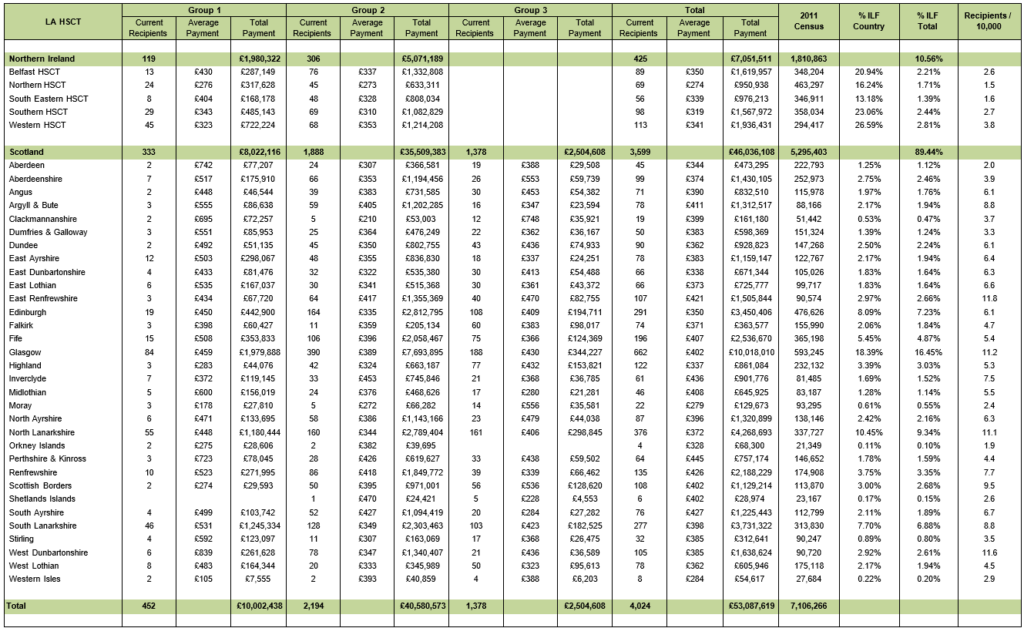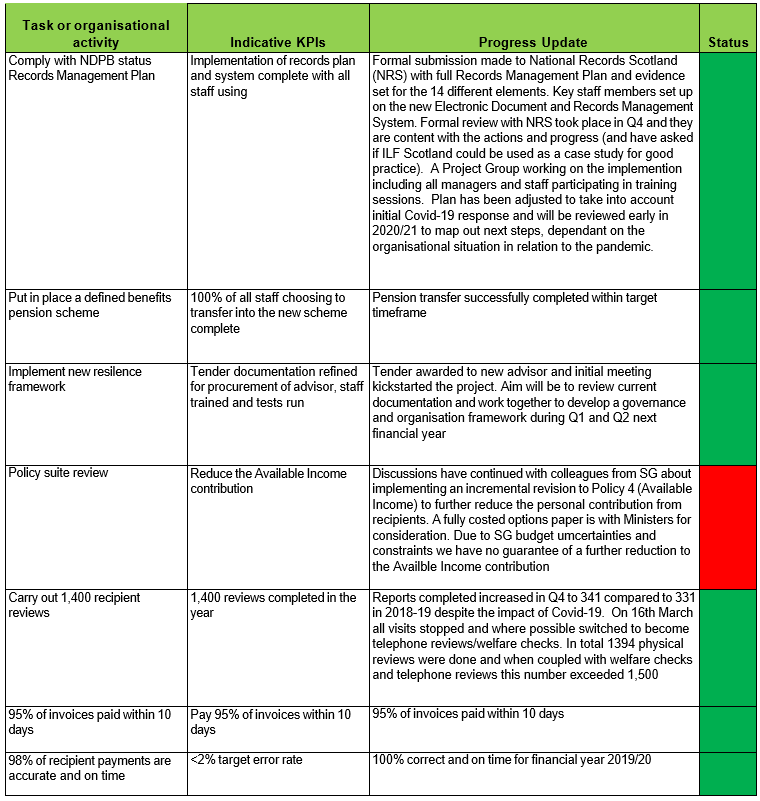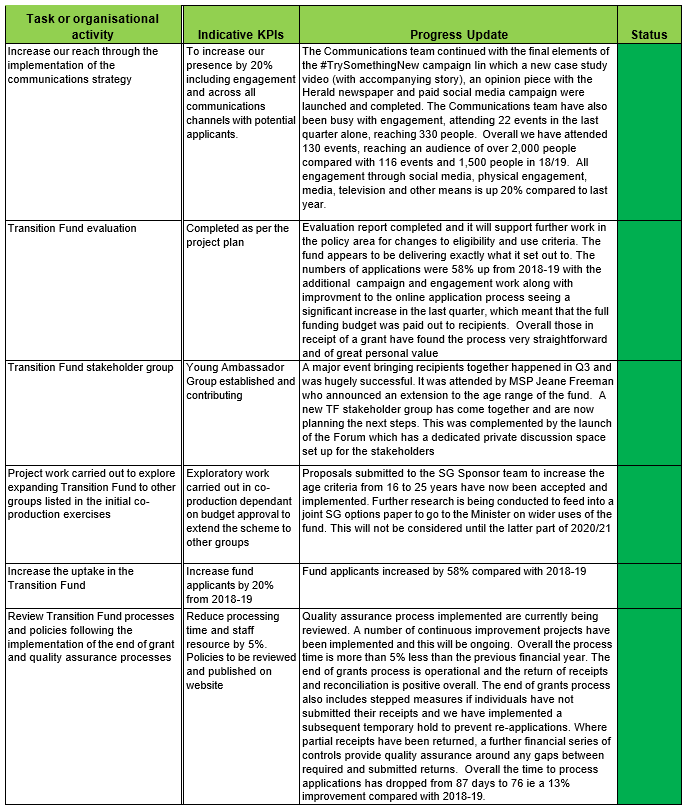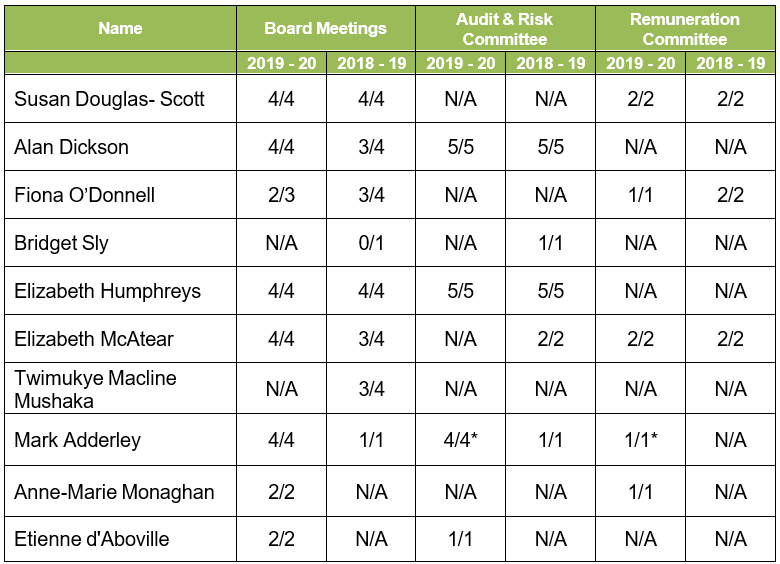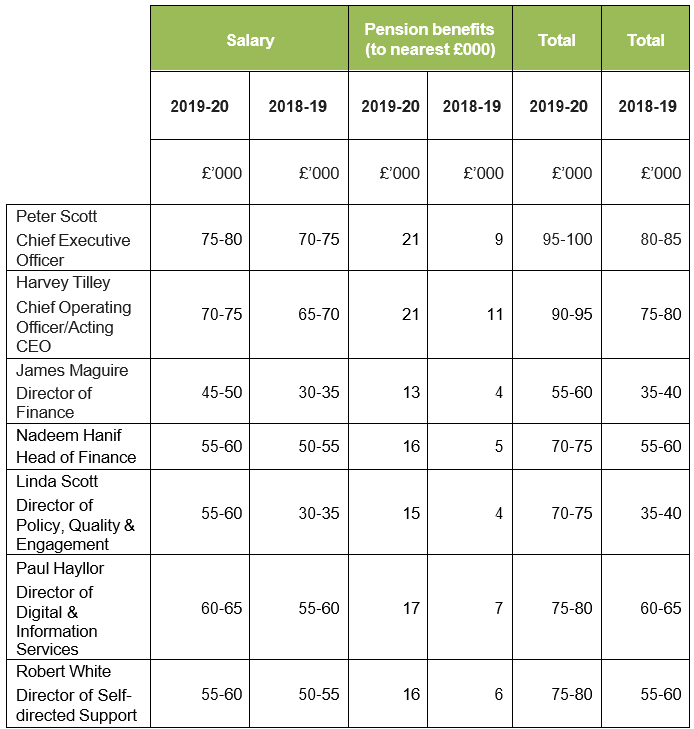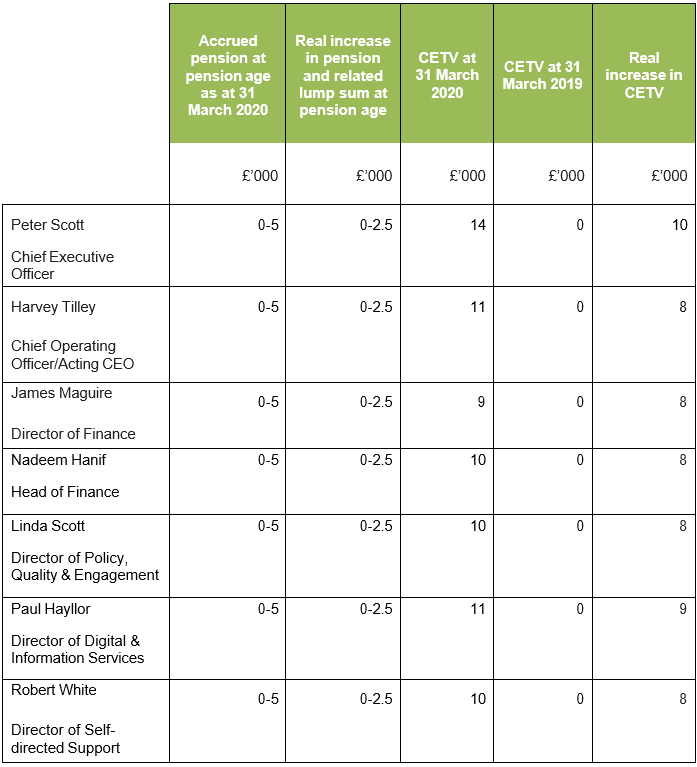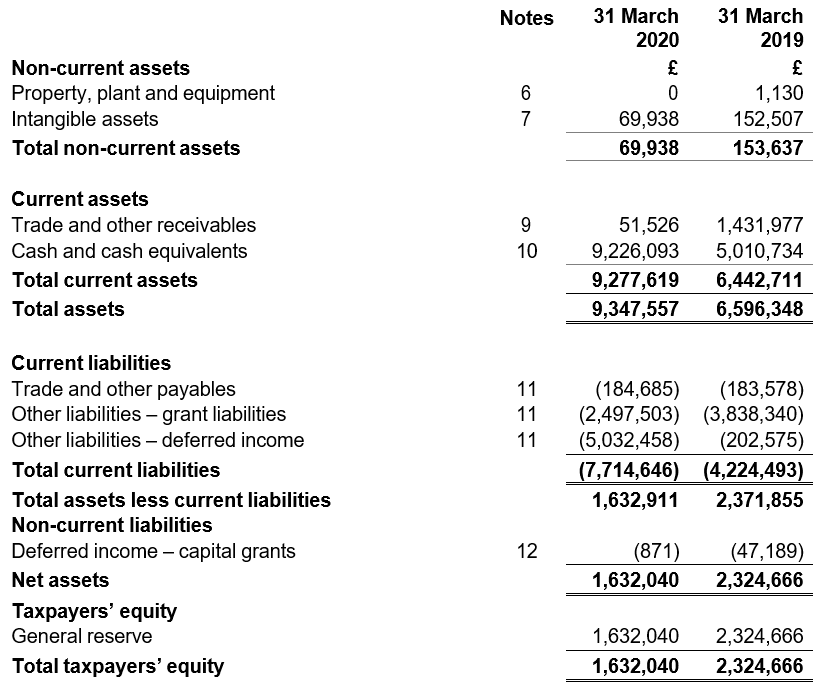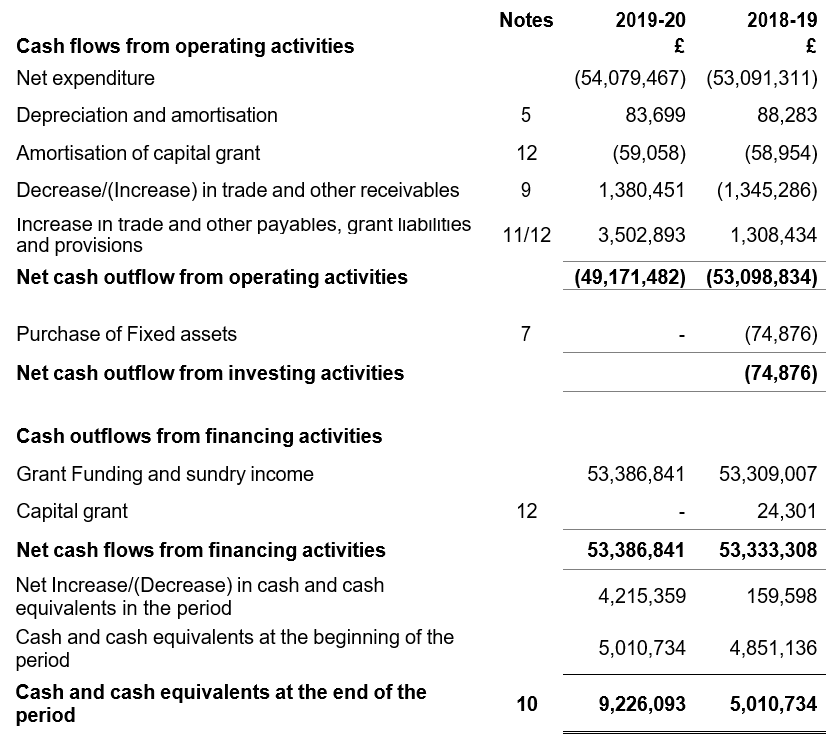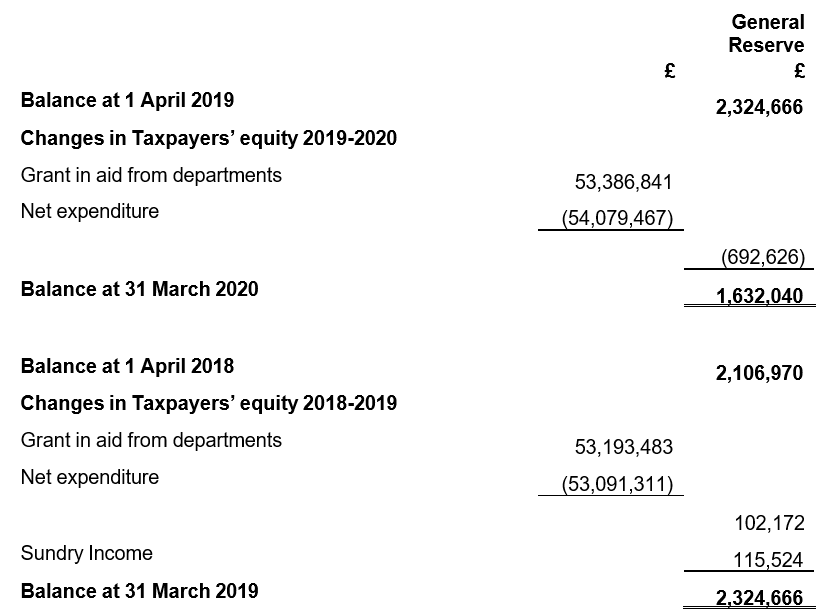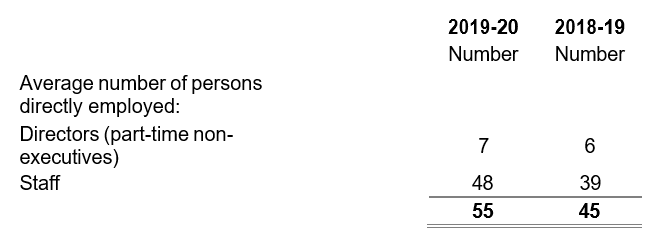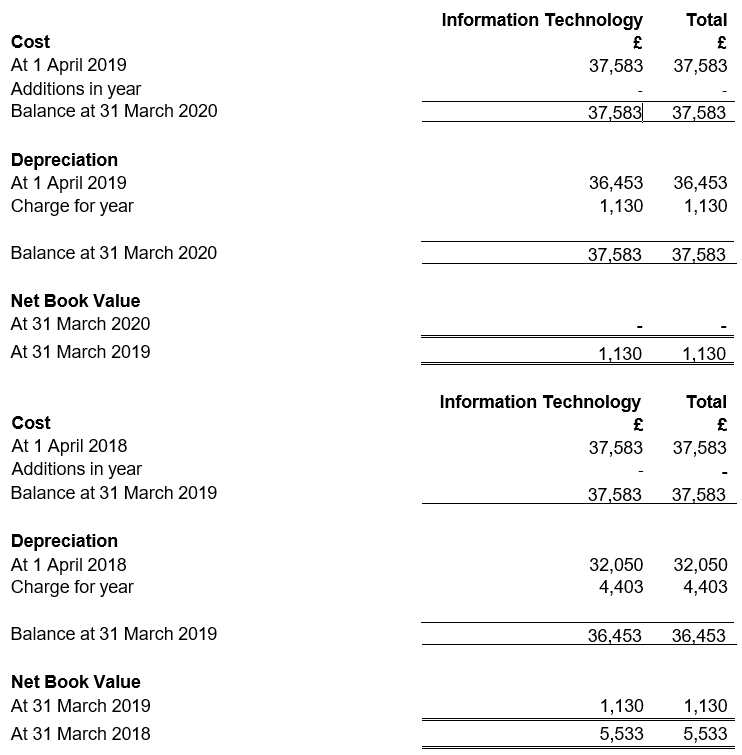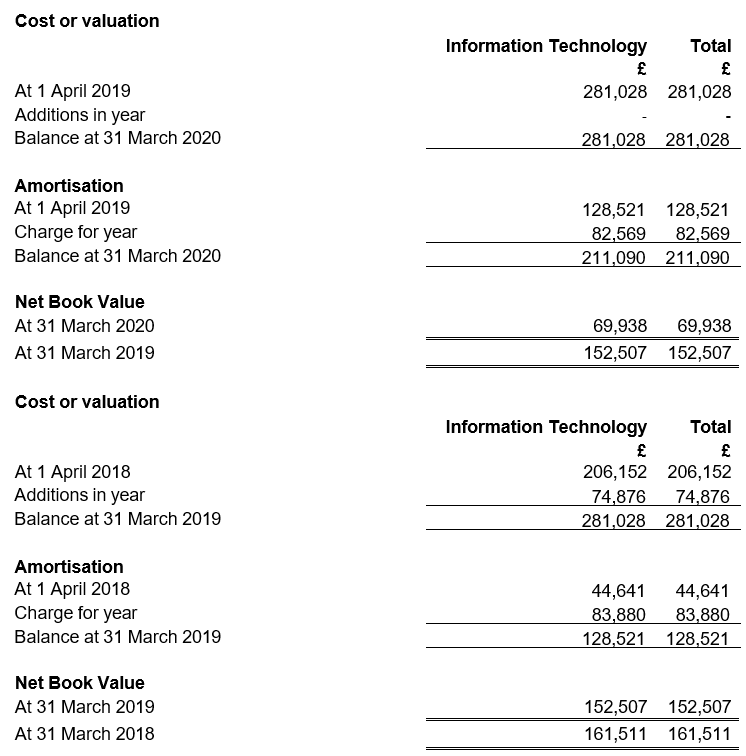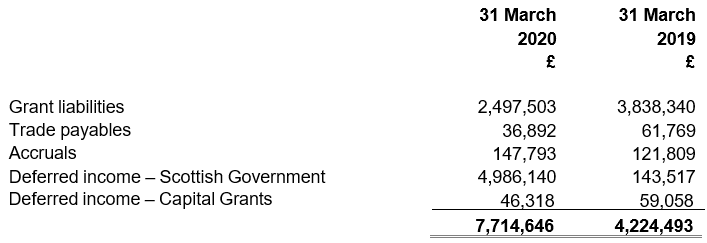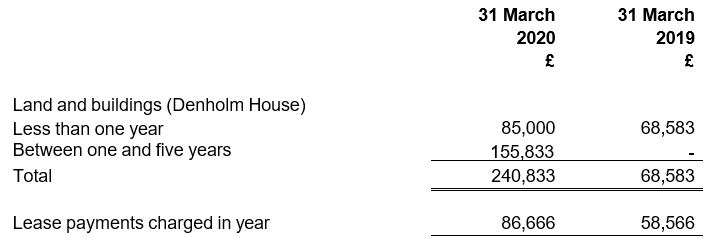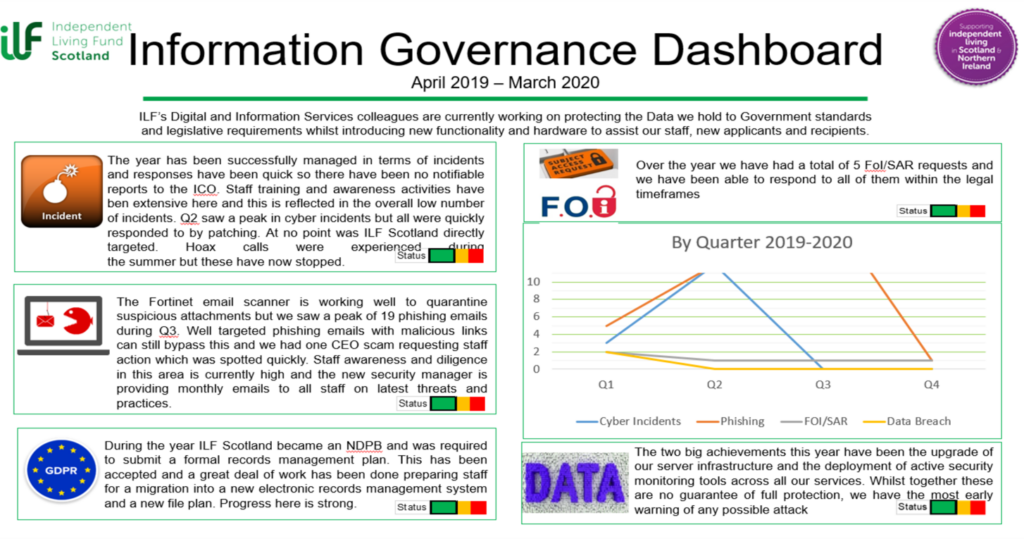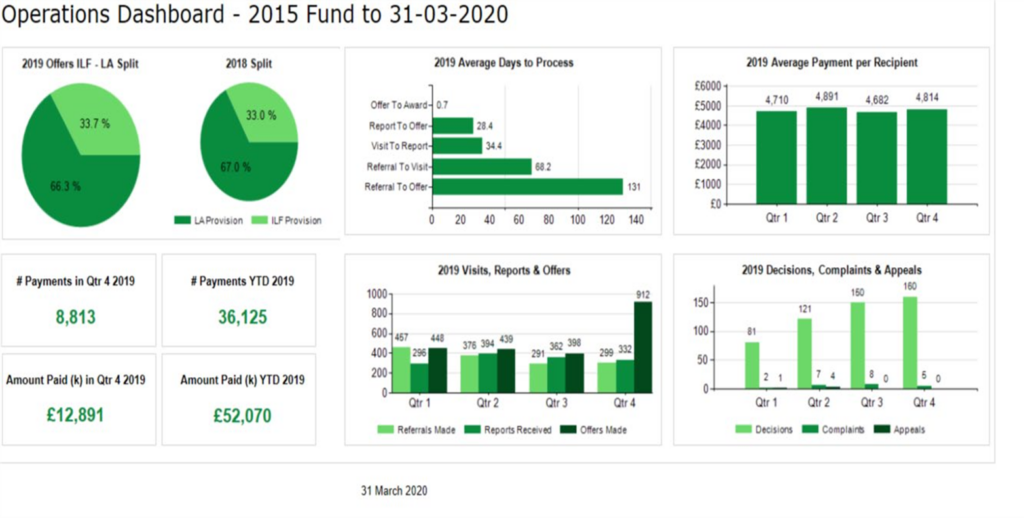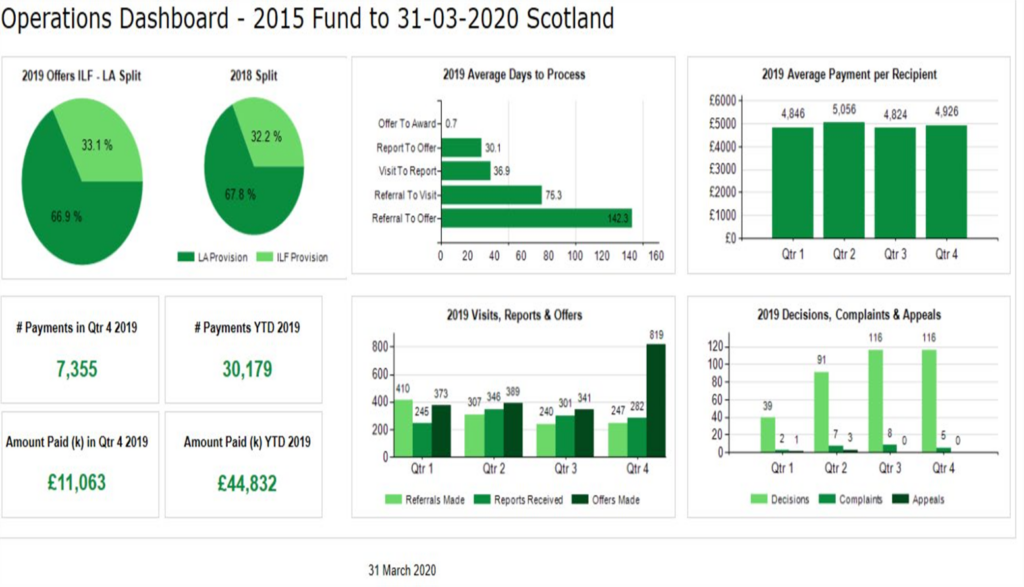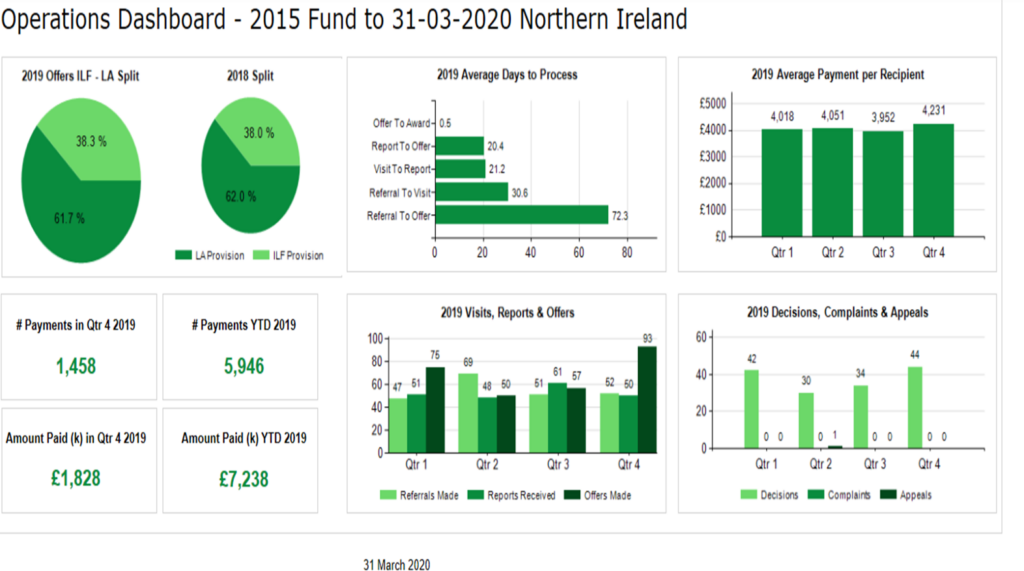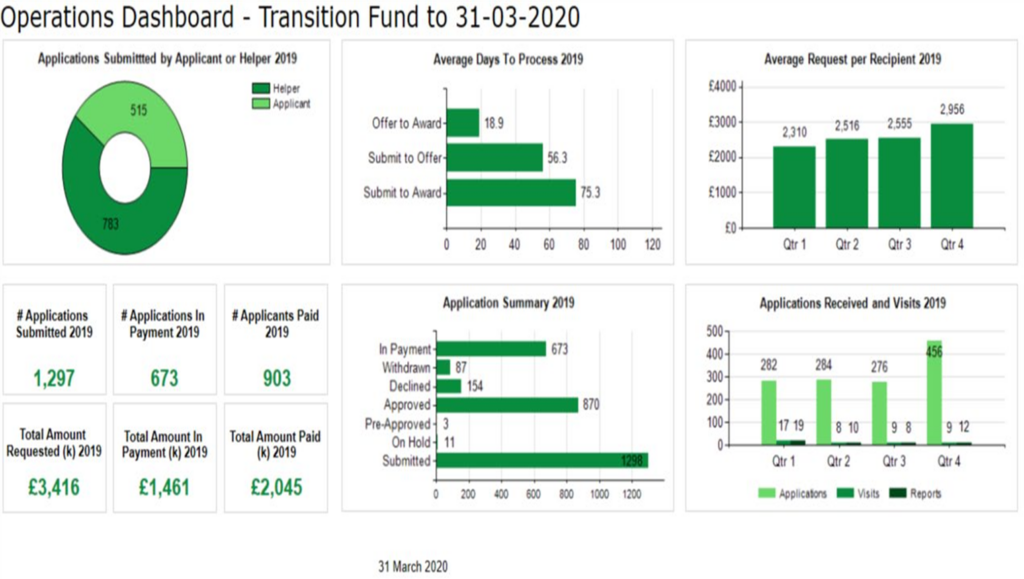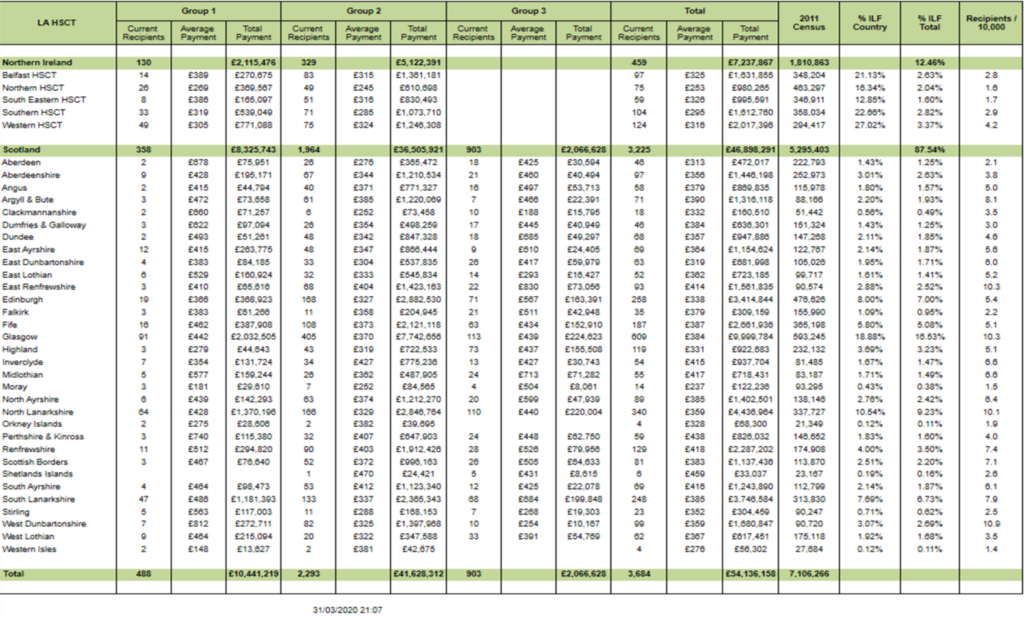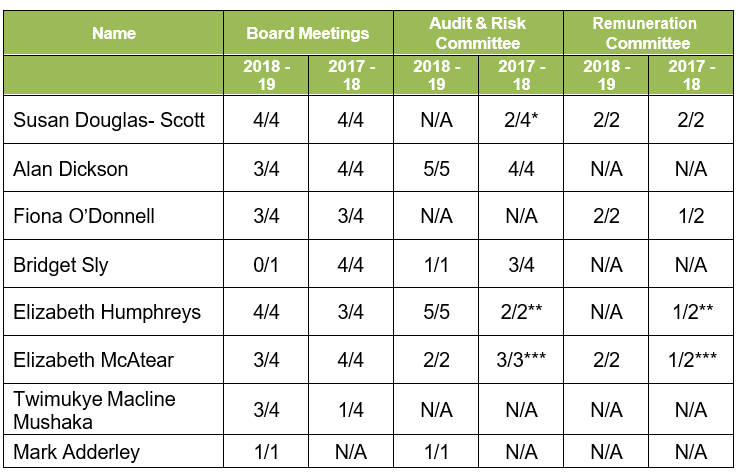Annual Report and Accounts - Year Ended 31 March 2024
ILF Scotland Annual Report and Financial Statements
Year ended 31 March 2024
Company Number SC500075
Any enquiries related to this publication should be sent to:
ILF Scotland, Denholm House, Almondvale Business Park, Almondvale Way, Livingston, EH54 6GA
Registered in Scotland.
Phone: 0300 200 2022
Email: enquiries@ilf.scot
Contents
Performance Report
Accountability Report
- Statement of Directors’ & Accountable Officer’s Responsibilities
- Annual Governance Statement
- Directors’ Report
- Remuneration and Staff Report
- Parliamentary Accountability Report
Independent Auditor's Report to the members of ILF Scotland
Financial Statements
- Statement of Comprehensive Net Expenditure for the year ended 31 March 2024
- Statement of Financial Position as at 31 March 2024
- Statement of Cash Flows for the year ended 31 March 2024
- Statement of Changes in Taxpayers’ Equity for the year ended 31 March 2024
- Notes to the Financial Statements for the year ended 31 March 2024
- Appendix to the Financial Statements - Accounts Direction
Performance Report
Introduction
ILF Scotland is a Non-Departmental Public Body (NDPB) of the Scottish Government. Our role is to provide a high quality service to, currently, over 8,000 disabled people in Scotland and Northern Ireland, supporting them to achieve positive independent living outcomes, and to have greater choice and control over their lives.
ILF Scotland commenced operations in July 2015. We work in partnership with 37 Health and Social Care Partnerships / Trusts (HSCP / Ts) across Scotland and Northern Ireland by jointly assessing and funding person centred care and support.
Operating from our central office in Livingston we employ (at 31 March 2024) 78 dedicated people including our social care professionals. Our assessors normally visit our recipients in their own homes every two years to identify their needs often in conjunction with Local Authority (LA) or Trust social services departments. We are now returning to a more normal programme of our planned assessor visits following on from the recovery from Covid-19 and this is expanded upon later in this report.
Office address
ILF Scotland
Denholm House
Almondvale Business Park
Almondvale Way
Livingston
EH54 6GA
Registered in Scotland
Tel: 0300 200 2022
Email: enquiries@ilf.scot
Website: www.ilf.scot
Principal activities and historical context
ILF Scotland was set up in 2015 and carries out the functions previously carried out by the Independent Living Fund (2006) within Scotland and Northern Ireland. Its aim is to deliver discretionary cash payments to disabled people, allowing them the choice and control to purchase personal support and live independent lives in their communities. The organisation is an NDPB of Scottish Government and receives funding in the form of Grant in Aid. There is also an agreement between Scottish Government and the Department of Health in Northern Ireland (DOH) for ILF Scotland to administer ILF payments to ILF recipients based in Northern Ireland.
Details of the Directors can be found here via the link below or directly on the company website:
Board of Directors - ILF
Details of the Senior Management Team (SMT) can be found here
Important external contacts are noted below:
Statutory auditor
Audit Scotland
8 Nelson Mandela Place
Glasgow G1 1BT
Solicitor
Central Legal Office
Breadalbane Street
Edinburgh
EH6 5JR
Internal auditor
MHA Henderson Loggie
29 Greenmarket
Dundee
DD1 4QB
Banker
Royal Bank of Scotland
36 St. Andrew Square
Edinburgh
EH2 2AD
The Performance report contains an Overview section summarising the whole report, explaining our purpose and strategy, our business model, our activities, our operational risks and summarises our performance. It also has an Analysis section which sets out our progress against this year’s performance measures and our financial performance.
Overview
Statement from Chief Executive Officer, Peter Scott OBE
This last financial year has been a very significant one for ILF Scotland. We have worked tirelessly, in collaboration with our key stakeholders, in pursuit of our goal to enable independent living for disabled people in Scotland and Northern Ireland. With support from our colleagues in the Scottish Government, the Northern Ireland DOH, HSCP/T’s, our Northern Ireland Stakeholder Group, Scottish Advisory Group, disabled people and their Organisations, and others, we have seen our reach grow further and we extend our sincere gratitude to these partners for their on-going support.
In our first year, 2015-16, we supported over 3,000 disabled people in Scotland and Northern Ireland, whereas in 2023-24 that figure had climbed to over 8,000. This growth has taken place against a challenging backdrop for those disabled people we support, including (but not limited to): a shortage of Personal Assistants and social care staff, an ongoing cost of living crisis, budget and demand pressures across the social care and support sector, and the lasting implications of the pandemic. The combination of these factors has made things exceptionally difficult for many disabled people, their families and the communities in which they live, limiting choice, control and dignity.
We were therefore delighted to hear the Scottish Government’s Programme for Government announcement in September 2023 that funding had been granted to re-open our main fund to new applications with effect from April 2024. Whilst this clearly falls into the new 2024-25 financial year, there was a huge amount of work done during the past year in preparation for this. I am extremely grateful to members of the Co-production Working Group, which convened following the re-opening announcement and which continues to meet to support the development of the re-opened fund. It has been a genuine privilege to work with so many dedicated and experienced individuals who have given freely of their time and expertise in the true spirit of co-production.
Finally, I would like to thank our exceptional Board of Directors for their on-going support and encouragement throughout the year. In particular, I would like to pay tribute to Susan Douglas-Scott and Alan Dickson, our retiring chairs of our Board and Audit and Risk Committee, respectively. Both worked tirelessly during their eight-year terms of office; their passion and vision contributed significantly towards the development of ILF Scotland and the stronger position it is in today to improve the lives of disabled people in Scotland and Northern Ireland.
Signed: Peter Scott, OBE
25 June 2024
Strategic Plan
Our key outcomes from our Strategic Plan are listed below:
- Strategic Outcome 1 - Facilitate the independent living needs of disabled people.
- Strategic Outcome 2 - Be leaders in enabling independent living.
- Strategic Outcome 3 - Operate a high-quality efficient service.
Further information on these outcomes is set out on pages 12 to 17 together with the Key Performance Indicators (KPI’s) against which we monitor performance.
Principal Risks and Uncertainties
This year our principal risks and uncertainties were mainly in connection with managing the project to re-open our main fund to new applications; the continued growth of the Transition Fund; the management of resources; the movement of personal and sensitive information; managing the project to replace our main client database as part of our Information Technology (IT) infrastructure; IT security; dealing with the current social care crisis and our core long standing risks in relation to funding and policy changes. We believe that we responded well to all risk areas and this is explored further in the Analysis section of this report.
Risk is further addressed in the Annual Governance Statement on pages 32 to 33.
Operational update
This year we made major progress through a large backlog in the review cycle caused by the pandemic, getting back to the bi-annual timescales whilst maintaining business as usual. At the same time the number of visits increased by 10% and the number of new offers made increased by 25%. This evidences the hard work of the Self-Directed Support (SDS) teams to achieve a return to pre-pandemic levels of support.
Reviews are still taking much longer to resolve than pre-pandemic due to the social work and wider social care staffing issues, changes in funding models, reduction in statutory support coupled with decisions taken during the pandemic, meaning awards are taking longer to finalise, although additional staffing has had a major positive impact on this.
Both applications and caseloads to the Transition Fund have increased at an unsustainable rate over the last three years in particular. We received over 4,000 grant applications by the end of the financial year however this would have been much higher had we not taken action in quarter three when we predicted a large over-subscription versus the available funding. That said, the increase in application numbers has continued albeit at a slower rate and is 26% up compared with last year. To deal with this, we expanded the specialist caseworker team with two additional workers during the year to improve processing times.
At the strategic level, we continue to engage with Governments, statutory organisations, various working groups and consultations to produce national guidance for improved SDS delivery in Scotland and Northern Ireland. Re-opening ILF has been a key element of our engagement activity since September last year with Scottish Government colleagues, Disabled People’s Organisations (DPOs), Convention of Scottish Local Authorities (COSLA), disabled people and other key stakeholders. We continue to engage regularly with Northern Ireland Trust and Scottish HSCP leads with increased attention on ILF as we work towards re-opening: this has the beneficial effect of assisting with arranging reviews for current recipients
This financial year we published updates on our action plans for our Equality Outcomes and Mainstreaming report, our Corporate Parenting Plan and our Charter for Involvement actions. We established a co-production working group and worked with members and our Scottish Government colleagues, to develop recommendations for the Minister on the policy framework for the re-opened ILF, based on the feedback to a set of questions asked to attendees at a series of engagement events across the country. The Minister has approved the recommendations, which were endorsed by our Board, and these are now published on our website. Applications will come via Social Work in the first year but we will look at developing alternative direct access options and other service improvements during 2024-25 in consultation with the co-production group and other key stakeholders.
We continued to meet quarterly with the Scotland Advisory Group and the Northern Ireland Stakeholder Group. Both Groups came together in late March to discuss joint plans and then showcase the power of independent living in a successful event sponsored by Dame Jackie Ballie MSP in the Scottish Parliament titled ‘The Purpose of Life is a Life of Purpose’. We are grateful to Dame Jackie for her support.
The following, received by email from one of our Northern Ireland Stakeholder Group members, is typical of the feedback we have received:
“We had a wonderful time, a big thank you goes to ILF for most of that. We were looked after like royalty.”
“I did learn a lot watching the ILF staff and seeing how they all put disabled people forward to speak and act for themselves, but were always there in the background to facilitate everything we could imagine.”
“I am not sure how we can ever thank you for being such wonderful hosts, not one detail was amiss, it was more than we could have ever imagined.”
In conjunction with the rest of the organisation, 2023-24 has been the busiest year from a people and Human Resource (HR) perspective since ILF Scotland was created in 2015. With additional projects such as the re-opening project and preparing for the implementation of the 35 Hour Working Week in April 2024, we have again observed increasing year on year work pressures. To support the re-opening, we have seen our workforce grow by almost 20% as we prepare for new applications in 2024-25, with further growth likely in 2024-2027. Our comprehensive health and wellbeing programme has remained front and centre of our decision making as we made our way through the year offering several workshops including mental health and resilience “refreshers”. We are not complacent and remain vigilant that the impact of heavy workloads and change continues to challenge us all.
During the year we warmly welcomed three new Board Directors as we fondly bid farewell to our Board Chair and Audit & Risk Committee Chair after eight-year terms. We also welcomed 17 new staff members mainly to support the re-opening work. We have continued to work extremely hard to maintain our status as an employer of choice, supporting our excellent workforce through the busy operating environment. We are immensely proud to have again been recognised as a UK Top 30 Employer in the annual Working Families benchmark in September and Best UK Small Employer in the Working Families Annual Awards 2023.
As with other parts of the organisation, the Digital Directorate has been heavily involved in every facet of the organisation. The most significant development has been the successful tendering and onboarding process, our biggest ever, of the Green Lemon Company to support us with our main client database replacement project. Concurrently we have undertaken the user research and alignment with the emerging policy suite for the fund re-opening to provide an initial digital portal for local authorities to submit applications.
Over the year ILF Scotland has pushed itself to adopt an even stronger cyber security position and has been assessed against the National Cyber Security Centre (NCSC) 10 Steps model and achieved a “Good” rating. A key recommendation from this was to make cyber security training and awareness mandatory for all staff and board members and this last quarter has had all staff completing training in phishing attacks and understanding ransomware attacks and how to prevent them. Finally on this point, we were delighted to be the winner of the 2023 Aligning Local Services Category CIPFA Finance Awards and finalist in the 2023 Excellence in Governance and Risk Management Category CIPFA Finance Awards.
In summary, as can be seen from the narrative set out above, it has been another exceptional year for ILF Scotland as we continue to recover from the profound impact of Covid-19 on us all alongside dealing with ever greater demand on the services we provide. We have had the busiest, yet in some ways the most rewarding reporting period by any benchmark since opening in July 2015 by achieving one of our main long-term objectives to re-open the Independent Living Fund in Scotland, which was closed in 2010 to new applications.
Future Plans
We will now focus on: growing the reach of the re-opened fund; renewing our core business systems; delivering the final year of our current strategy; working with disabled people to co-produce our new strategy; extending the Transition Fund as far as resources allow; re-opening the Independent Living Fund to new applications in Northern Ireland (subject to Ministerial approval), and; supporting both Scottish and Northern Ireland Governments to deliver their priorities for disabled people to live independently with choice, control and dignity.
Looking to the future and fulfilling the current strategy, the progress made on the digital transformation business case, coupled with work on organisational sustainability, are significant stepping stones. Both areas look to achieve greater efficiency through smarter use of technology, of staff, of resources and operational processes to reduce our consumption and work towards a Net Zero position by 2040.
Business Plan Progress
At year end, we can reflect that all strategic outcomes have made strong progress against the business plan alongside the considerable effort to deliver the re-opening project. The overall intention of this interim (extended) strategic period was to position and prepare ourselves for re-opening in 2025 so in effect we have achieved the primary objective one year ahead of the plan. Based on the feedback we receive from our colleagues in local authorities, the co-production working group, stakeholder groups our own evaluation of the first phase of re-opening, we will pull all this information together to inform what our future service delivery and application journey looks like and build our digital offering to enable this.
Progress towards all strategic objectives remains strong and on track to complete by the end of this current strategic cycle / business plan. Performance against our key strategic objectives is set out in the Analysis section which follows on page 12.
Organisational Structure
The organisational structure is set out below and shows core departments:
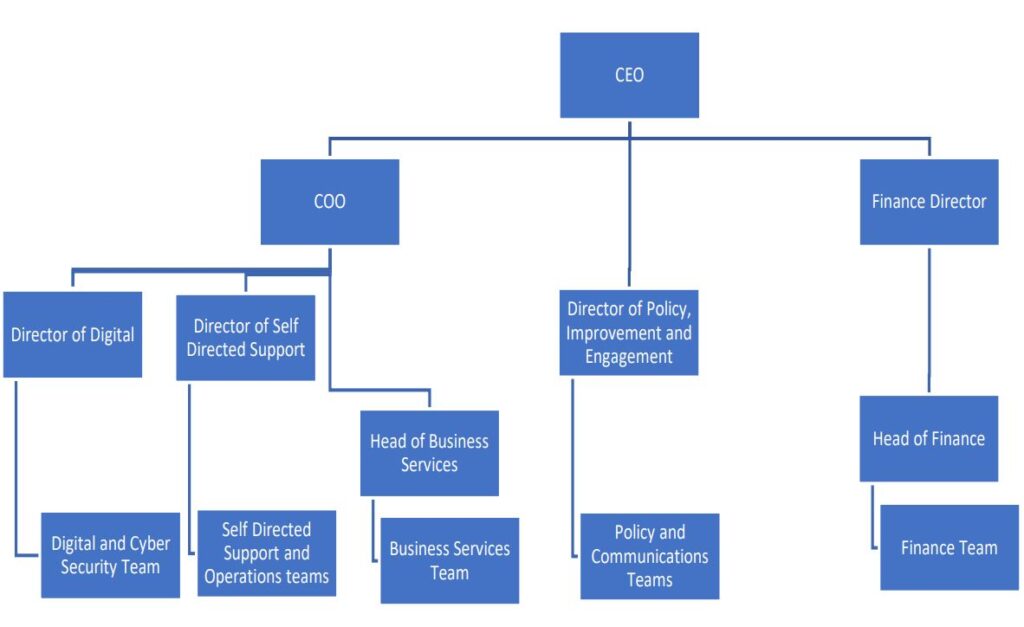
A hierarchical chart showing CEO at the top with COO, Director of Policy, Improvement and Engagement, and Finance Director coming off him. The COO has Director of Digital, Director of Self-Directed Support and Head of Business Services coming off him. The Director of Digital heads up the Digital and Cyber Security Team. The Director of Self-Directed Support heads up the Self-Directed Support and Operations teams. The Head of Business Services heads up the Business Services Team. The Director of Policy, Improvement and Engagement oversees the Policy and Communications Teams. The Finance Director oversees the Head of Finance who heads up the Finance Team.
Analysis
Key Performance Indicators
Strategic Outcome 1 – Facilitate the independent living needs of disabled people:
Strategic Objective – The core operation is delivered in a manner that supports people to achieve the independent living outcomes they want.
Target Outcome: ILF Scotland enables disabled people to lead their fullest lives.
Key Performance Indicators:
- Return to normal operational tempo (post Covid-19).
- Identify and prioritise reviews (need, urgency, waiting time).
- Recharge and re-skill teams in independent living practice.
- Review forms and processes for ease of use and accessibility.
Activity Update:
- The recruitment of additional SDS staff for re-opening has enabled us to catch up to the bi-annual review cycle in Scotland prior to re-opening by the end of the 2023-24 year.
- Some key statistics; we reduced the time taken to complete updated awards by 27% compared to the previous year. At the same time the number of visits increased by 10% and the number of new offers made increased by 25%. This evidences the hard work of the SDS teams to exit the pandemic legacy of backlogs of work for all teams.
- We continue to allocate review visits based on urgent need, change of circumstances and then longest waiting time.
- All SDS staff have input into re-opening ongoing development and this two way process of sharing and learning will develop practice further in 2024-25.
- We are progressing reviewing all Standard Operating Procedures (SOPs) and the "Handbook of Practice" for assessors and caseworkers which is a major piece of work.
Status: Green
Strategic Objective - The rights of disabled people are maintained and enhanced by the mainstreaming of our Equalities and Inclusion Action Plans.
Target Outcome:
The rights of disabled people are maintained and enhanced by the mainstreaming of our Equalities and Inclusion Action Plans.
Key Performance Indicators:
- Publicly report on Equalities and Inclusion action plans.
- Progress Charter for Involvement Action Plan with Advisory and Stakeholder Groups.
- Publicly report and implement Corporate Parenting Action Plan.
- Develop Gaelic Language Action Plan.
Activity Update:
- We published our Annual Equalities Plan.
- We reported on progress against our planned outcomes in our Equality Outcomes and Mainstreaming report for the period 2022-23 along with our planned outcomes for 2023-24.
- We continued to implement actions previously agreed by our Advisory and Stakeholder groups to achieve the Charter for Involvement Standards.
- We published updates on our progress in achieving our Corporate Parenting responsibilities as they align to the young people who apply and receive Transition Funding. We have made good progress given the demands on managing the fund.
- Developing the Gaelic Action Plan is a voluntary initiative and we will continue to develop this in future years.
Status: Green
Strategic Outcome 2 – Be leaders in enabling independent living:
Strategic Objective - The conditions for entry to the re-opened ILF Scotland 2015 Fund are co-produced and supported by robust public consultation.
Target Outcome:
The policy framework by which the re-opened 2015 Fund will accept new applications are determined by the process of co-production and fully tested across a wide stakeholder audience prior to being recommended to Scottish Ministers.
Key Performance Indicators:
- A co-production working group is established to frame, discuss and recommend the entry conditions to a re-opened 2015 Fund.
- A series of engagement events are held nationally.
- Develop strategic approach to identifying and analysing all feedback data points (ie a Data Strategy).
- Prepare for public consultation and co-producing for the next strategic plan.
Activity update:
- Following the announcement in September 2023 to reopen ILF to new applications from April 2024, we established a co-production working group, which met on eight occasions by the end of 2023-24.
- We ran a series of co-production engagement events across the country. Taking account of the feedback from these events, the group made recommendations to the Minister on the intended policy framework at the beginning of March, which the Minister approved and published a statement to that effect on 20 March 2024.
- The fund will re-open with applications being made by Social Work on behalf of potential recipients and ILF Scotland will assess and determine any funding. All 2015 policies have been reviewed and all policy amendments were in place by 1 April 2024.
- We will continue to work with the group and our stakeholders to further develop the fund to better achieve independent living outcomes for our recipients.
Status: Green
Strategic Objective - Better independent living outcomes for disabled people are achieved at local levels through partnership working and shared practices.
Target Outcome:
Capacity and capability are increased across the sector for enabling better independent living outcomes.
Key Performance Indicators:
- Full review of all Covid-19 support packages and work with HSCP/Ts to focus on approaches to enabling better independent living outcomes.
- Innovate and create smarter ways of working with HSCP/Ts (eg data sharing and automation of forms and alerts).
- As a national body, ensure local delivery issues are surfaced with LA leads and where appropriate sponsor teams (vis a vie re-balancing of packages).
Activity Update:
- ILF recipients have a large degree of protection from unilateral reductions, perhaps more so given the prospect of re-opening.
- The entire re-opening of the ILF co-production process involves COSLA, Social Work Scotland and HSCP representatives. This in turn has invigorated discussion on independent living outcomes that are funded in local areas.
- All 32 local areas in Scotland are reviewing the people who have unmet independent living outcomes and prioritising those people with the most significant unmet need.
- Our profile has increased significantly since the re-opening announcement and we have been present at many Social Work Scotland events.
- ILF Leads meetings in October, December, February and March were very productive in resolving a number of issues with the current fund and in planning for re-opening in April 2024. The updated strategic agreement with COSLA has helped ILF assert our policies in individual negotiations with good success this year.
Status: Green
Strategic Outcome 3 – Operate a high quality efficient service:
Strategic Objective - The integrity of the ILF Scotland operation is maintained by updating and exercising the risk and resilience programme.
Target Outcome:
ILF Scotland is prepared for and able to respond and recover from a critical incident in a smooth and controlled manner with minimum disruption to its operation.
Key Performance Indicators:
- Embed the resilience hub and move to bi-annual cycle of train, exercise and test.
- Ensure and maintain the data protection posture of the organisation.
- Ensure and maintain the cyber security posture of the organisation.
- Introduce annual cycle of information security monitoring and audit.
- Identify and deploy a risk and resilience management solution.
Activity Update:
- The Resilience Hub has worked well over the reporting period, with key members of staff involved keeping focused on organisational requirements. The outcomes of the desktop exercise from earlier in the year has influenced the programme for the coming year with further desktop exercises to come which will allow teams to practice the information flows and processes again.
- Data Protection training completed by staff and monthly communications are sent to all staff.
- Four cyber security training sessions were completed over the year and they focused on phishing emails, ransomware, strong passwords and malware involving the majority of staff.
- The records management audit cycle is complete and the results have informed the training and communications plan.
- A tender has been issued for a risk and resilience software tool to assist in streamlining ILF Scotland processes for both. The aim is to have this fully operational in the next financial year.
Status: Green
Strategic Objective - Prepare the full business case for a fully integrated, digitised, ILF Scotland as part of the wider whole systems approach to health and social care delivery.
Target Outcome:
ILF Scotland becomes a digitally enabled and accessible public service
Key Performance Indicators:
- Upgrade and introduce a new client database system.
- Continue in-year developments and upgrade the underlying server infrastructure.
- Push thinking and development of the Transition Fund and LA portal to achieve greater line of business efficiencies and data sharing
- Become a digital component of the Scottish Public Sector Digital Eco-system and where possible use common shared services (including Cloud / Payments / Identity)
Activity Update:
- We are progressing our project to upgrade our client database system, enhancing operational efficiency and service delivery.
- In-year developments continue with our focus on the re-opening project and business as usual system changes.
- The LA portal is being repurposed for the re-opening project as it already meets the assurance criteria for a safe and secure data sharing gateway to our internal systems. This approach, whilst not ideal in terms of public facing digital services, has enabled a rapid development of the technical solution to receive applications in April 2024.
- Initial discussions about a formal arrangement for data sharing with Scottish Social Security Agency (SSSA) have taken place and in principle both parties are happy to proceed.
Status: Green
Efficiencies:
We constantly carry out improvement and efficiency work and this has enabled the organisation to deliver more. Over the year we have carried out improvements that have saved 4,872 (2022-23 – 3,919) hours of staff time. This works out at approximately three (2022-23 - two) Full Time Equivalent (FTE) staff which is around 4% (2022-23 - 3%) of our workforce. This equates to an approximate overall saving of 3% of our cost base (2022-23 – 2.5%) compared to the Scottish Government target of 3%.
Due to the extensive work done in previous years we are moving to a position where only smaller gains can be realised without substantial capital investment in our IT infrastructure.
Self-Directed Support (SDS)
2015 Fund - This year we made major progress through a large backlog in the review cycle caused by the pandemic, getting back to the bi-annual timescales for Scotland whilst maintaining business as usual and contributing significantly to the re-opening project. In addition, we were also subject to three significant internal audits relating to our core operational practice. The first was of our Protection Policies and Practice covering Adults and Children. The second audit of the 2015 Fund had a focus on assessment quality and compliance with policy in relation to payments. The third audit was of our Fraud Policy and Processes. All audits achieved satisfactory ratings.
Transition Fund - Applications to the Transition Fund have increased at an unsustainable rate over the last three years in particular. We received just over 4,000 grant applications by the end of the financial year versus around 5,000 plus we predicted that we would have received had we not taken decisive action to reduce application levels. That said, the increase in application numbers has continued albeit at a slower rate and is 26% up from last year. Regular reviews of policy in 2024-25 are planned to manage demand within the given budget.
We expanded the specialist caseworker team with two additional workers during the year to improve processing times. In addition, a clear policy decision was made to restrict applications to one successful full Transition Fund grant per applicant from 1 January 2024, to manage both demand and resource. The contraction of statutory services and the waiting times for NHS services are likely to continue to push eligible young people towards the Transition Fund as a readily accessible source of support for the foreseeable future.
Summary - The operational environment remains both exciting due to re-opening but challenging for staff supporting recipients with reduced support due to funding pressures and lack of staff in some areas. Provider and Personal Assistant (PA) costs continue to increase, which requires intervention by casework or assessor teams to assist with sustainability on a more frequent basis than the traditional ILF model of a bi-annual review. The extent of the ILF intervention will be reviewed next year as there are requests that ILF Scotland provides new support to Award Managers on an ongoing basis. Co-production will clarify what is required, affordable and sustainable.
Policy, Improvements and Engagement
We published progress on our action plans for our Equality Outcomes and Mainstreaming report, our Corporate Parenting Plan and our Charter for Involvement actions and we updated our Modern Slavery Statement. We will develop the Charter for Involvement Standards actions further in the next financial year along with the development of our Customer Feedback Strategy, our Data Strategy and our Customer Service Charter. We will start considering our next strategic plan for 2025-28 during 2024-25, aligning this to the Scottish Government’s National Performance Framework (NPF) Standards if possible as well as using this to take forward further policy and service developments and improvements following re-opening in April 2024.
We established a co-production working group and worked with members and our Scottish Government colleagues, to develop recommendations for the Minister on the policy framework for the re-opened ILF, based on the feedback to a set of questions asked to attendees at a series of engagement events across the country. The Minister has approved the recommendations and these are now published on our website. Applications will come via Social Work in the first year but we will look at developing direct access options and other service improvements during 2024-25 in consultation with the working group and other key stakeholders.
We continued to meet quarterly with the Scotland Advisory Group (the Chairperson of our Board attended the group's December meeting) and the Northern Ireland Stakeholder Group (who are advocating for a similar re-opening decision in Northern Ireland). Both Groups met separately in February (the Minister attended the Scotland Advisory Group meeting) and met again on 28 March 2024 immediately prior to the Parliamentary event. Besides re-opening, the groups continued to request ILF Scotland abolished the available income charge on historic awards and will look at a number of policy improvements over the coming financial year. It should be noted that Scottish Government has committed to the abolition of available income charges no later than May 2026.
We continue to engage with our Young Ambassadors Group and are attempting to increase the number of members. The Transition Fund engagement activity resulted in staff attendance at 17 events with around 750 attendees. As a consequence of demand, we have had no option other than cut back on our engagements due to the pressure on processing times and budget available.
Our People
Overview – 2023-24 has been the busiest year since ILF Scotland was created in 2015. In conjunction with additional projects such as the re-opening project and preparing for the implementation of the 35 Hour Working Week in April 2024, we have again observed increasing year on year work pressures. We continue to introduce exciting, innovative support to our workforce, researching and introducing new measures that support staff through the year. Our attrition remains extremely low with one retiree and one member of staff moving on to a promoted post. Alongside this we have also seen our workforce grow by almost 20% as we prepare for re-opening, with further growth planned in 2024-2027.
Despite increased workload, our absence rate has decreased over the year. This is in part due to the hard work we invest in constantly improving our wellbeing offer. ILF Scotland seeks to actively manage sickness absences and has return to work meetings with staff to improve support on resumption of duties and discuss absence patterns and causes. We are immensely proud to have again been awarded Best Small Employer at the Best Practice Awards and a Top 30 Employer in the annual Working Families benchmark in September 2023.
We believe that we continue to be a positive, open and supportive employer which is welcomed across the workforce. During 2023-24 we have held several all-staff development days to ensure we embed our culture and values in our workforce as we grow. Our comprehensive health and wellbeing programme has remained front and centre of our decision making as we made our way through the year offering several workshops including ‘mental health & resilience refreshers’.
We continued the practice of monthly Teams meetings with all staff. Our hybrid principles have now been in place for two years and they are working well, offering our staff choice and control whilst always considering the business needs of the organisation.
Organisational Demography – During the year the number of staff employed was 80 plus 8 non-executive directors: 78%:22% female: male, with 20.2% of staff self-identified as disabled, 2.2% ethnic minorities and 1.1% LGBT.
Employment status – During 2023-24 we have continued to offer a supportive whole-life-friendly employee offering via a suite of accessible policies. Through our staff survey, TRICKLE pulse surveys and meeting feedback, we continue to closely monitor feedback from colleagues. All ILF Scotland staff have employed status (we also have three temporary staff to support the Re-opening Project); both full time and part time with many different flexible working patterns to suit individual and organisational need. This continues to provide stability and continuity for both the organisation and individuals during this time of continued growth. During 2023-24 all staff have worked flexibly and we will continue to ensure staff can have a work/life balance which suits their individual circumstances offering choice and control. Planning work is underway for the 2024-27 Workforce plan which will consider our staff and current and future workstreams.
We are committed to good employee relations and HR policies have been developed from best practice to ensure at least full compliance with employment and equalities legislation.
ILF Scotland seeks to actively manage sickness absences and has return to work meetings with staff to improve support on resumption of duties and discuss absence patterns and causes.
Mentoring – We are committed to ensuring that every young person, regardless of background, gains access to opportunities to enable them to fulfil their potential and achieve upward mobility. We are excited to be partnering with the social mobility programme Career Ready Scotland to provide real-world work experience and mentoring to five young people from our local community schools. In addition to providing new networking opportunities and career advancement pathways, the internship equips the young person with essential soft skills such as communication, teamwork and problem solving.
Information Governance and IT
Records Management - An initial meeting was held with Scottish Social Security Agency to discuss the governance and technical requirements for ILF Scotland to share data and streamline / automate eligibility and identity verification. The meeting was hugely positive and in principle both parties are happy to progress the relationship to the advantage of our new applicants.
Digital and System Developments - The most significant development has been the successful tendering and onboarding process, our biggest ever, of the Green Lemon Company to support us with our client database replacement project. Concurrently we have undertaken the user research and alignment with the emerging policy suite for the fund re-opening to provide an initial digital portal for local authorities to submit applications. Due to the assurance processes required to launch a public facing digital service, the decision was made to open with the existing LA Portal and to receive applications from LA social work teams. The Scottish Government cloud datacentre has not become available this period and the fund re-opening will take place with the existing data centre which has had additional temporary support measures put in place to cover the first phase of re-opening. The intention is for the cloud data centre to become available later in June and the migration of the portal and existing database will move over once it has been tested. Finally on this point, we were delighted to be the winner of the 2023 Aligning Local Services Category in The Chartered Institute of Public, Finance and Accountancy (CIPFA) Finance Awards.
Risk and Resilience - The planning of the next two years resilience activity has been completed and will see a twin track approach of exercise and test alongside embedding risk and resilience into normal operations. Our resilience hub has undertaken a full review of all resilience plans ahead of re-opening and additionally has taken on board responsibility for organisational risk management. This period also saw the internal audit of risk management and business continuity and an overall “Good” rating has been achieved. Lastly, we were delighted to be a finalist in the 2023 Excellence in Governance and Risk Management Category CIPFA Finance Awards.
Cyber security – Over the year ILF Scotland has pushed itself to adopt an even stronger cyber security position and has been assessed against the NCSC 10 Steps model and achieved a “Good” rating. A key recommendation from this was to make cyber security training and awareness mandatory for all staff and this last quarter has had all staff completing training in phishing attacks and understanding ransomware attacks and how to prevent them. It remains a very challenging space to work in as the threat level has been very high for an extended period and we are conscious of our public profile being raised as part of our re-opening communications. We now receive daily alerts on cyber threats and are part of the SC3 network of communications and support across Scotland (Scottish Cyber Co-ordination Centre).
Governance and social responsibility
The company procurement policy ensures fair competition and value for money, with specific arrangements to encourage tenders from employers of disabled people in procurement exercises.
ILF Scotland is committed to prompt payment of bills for goods and services received. Payments are normally made within the period specified in the contract. here there is no contractual or other understanding, we endeavour to pay within 10 days of the receipt of the goods or services, or the presentation of a valid invoice or similar demand, whichever is later.
In 2023-24 ILF Scotland paid 99% of invoices (by volume) within 10 calendar days of receipt (2022-23 97%). The number of creditor days outstanding at the end of 2023- 24 was 23 days (2022-23 11 days). The number of days outstanding is higher than normal due to a number of invoices being received at the year end.
Financial review
Our Grant in Aid funding allocation and actual expenditure is set out below:
| Initial Grant in Aid Allocation | Funding not drawn down in year | Final Grant in Aid Allocation | Actual Expenditure | Net Underspend | |
| £m | £m | £m | £m | £m | |
| Resource Expenditure | 60.5 | (3.0) | 57.5 | 57.3 | 0.2 |
| Capital Expenditure | - | - | - | (0.3) | 0.3 |
| Non-cash | 0.1 | - | 0.1 | 0.1 | - |
| Total Fiscal Resource | 60.6 | (3.0) | 57.6 | 57.1 | 0.5 |
Resource expenditure
Initial Grant in Aid Allocation £m: 60.5
Funding not drawn down in year £m: (3.0)
Final Grant in Aid Allocation £m: 57.5
Actual Expenditure £m: 57.3
Net Underspend £m: 0.2
Capital expenditure
Initial Grant in Aid Allocation £m: -
Funding not drawn down in year £m: -
Final Grant in Aid Allocation £m: -
Actual Expenditure £m: (0.3)
Net Underspend £m: 0.3
Non-cash
Initial Grant in Aid Allocation £m: 0.1
Funding not drawn down in year £m: -
Final Grant in Aid Allocation £m: 0.1
Actual Expenditure £m: 0.1
Net Underspend £m: -
Total Fiscal Resource
Initial Grant in Aid Allocation £m: 60.6
Funding not drawn down in year £m: (3.0)
Final Grant in Aid Allocation £m: 57.6
Actual Expenditure £m: 57.1
Net Underspend £m: 0.5
- Grant in Aid – The amount received in the year was £57.5m (2022-23 £54.9m)
- Awards Paid – The payments made to recipients for the year 2023-24 were
£52.1m (2022-23 £51.4m), of which £5.3m (2022-23 £2.8m), was for the
Transition Fund. - Underspend – Whilst we report a net underspend of £0.5m at the year end
above, we also drew down £3m less than awarded by Scottish Government
resulting in a gross underspend of £3.5m when compared against our initial
fiscal resource allocation. - Reserves – We have healthy reserves at almost £4.5m at 31 March 2024
(£4.3m at 31 March 2023).
Following on from discussions with our sponsor team at Scottish Government in the lead up to our year end, we drew down £3m less funding than originally allocated in order to balance our forecast funding requirements due in the main to higher than expected returns of unspent monies from our recipients. Our net resource underspend has resulted in a small increase in taxpayers’ equity for the year amounting to £222k which has been transferred to general reserve as set out on page 67.
The negative movement in the year in relation to capital relates to an adjustment to a right of use asset together with a small addition to intangible assets under construction.
Assets are held only for the purpose of managing the company.
The company requests and receives Grant in Aid on a monthly basis to meet its immediate cash needs. Procurement policies are designed to secure goods and services for immediate consumption during the year with best value for money at current cost, and without setting up complex financial instruments. Company exposure to financial instrument risk is therefore low compared with non-public sector organisations. The policies on financial instruments are provided in the Notes to the financial statements, and appropriate disclosures are included.
Company law requires the directors to prepare financial statements for each financial year. The financial statements comply with the Companies Act 2006 and the directors have adopted to prepare them in accordance with International Financial Reporting Standards (IFRSs) and applicable law and to provide additional disclosures required by the Government Financial Reporting Manual 2023-24 where these go beyond the requirements of the Companies Act 2006.
The financial statements are prepared on a ‘going concern’ basis. Grant in Aid is received on a cash basis to meet immediate need. Grants to individuals are paid in arrears and the Statement of Financial Position at 31 March 2024 shows a net assets position of just over £4.5m as set out on page 64.
Scottish Government has provided a letter to the Chief Executive to confirm that Grant in Aid will be made available to cover the financial obligations of the company for the financial year 2024-25.
There were no events after the end of the financial year that have any material effect on these Reports and Financial Statements.
Environmental Matters and Climate Change
We believe that the next 10 years will be crucial in creating sustainable plans to reduce our resource consumption and slow global warming by becoming carbon neutral.
Covid-19, extreme weather conditions across the globe, the semi-conductor crisis and now the staffing crisis in critical frontline services have rightly focused on “right-sizing” scarce resources and setting priorities for organisations to reduce not only their current consumption, but to embed sustainable plans to de-carbonise and become Net Zero by 2040.
As an Executive Public Body ILF Scotland is committed and aligns to the general climate change duties set out under Section 44 of the Climate Change (Scotland) Act 2009. Although not a listed public body with the requirement to report directly against the carbon reduction targets, ILF Scotland takes environmental matters very seriously and is working towards its own Net Zero targets by 2040. ILF Scotland is now linked in to the Scottish Government Climate Change team and are gaining valuable information into responsibilities, requirements, measurement tools, reporting frameworks and bodies of expert knowledge on implementing Net Zero action plans.
Our approach is more than becoming paperless or using green energy sources – it is built into our strategy and operational practices and is an attempt at a whole organisational drive to right-size and appropriately source the resources we require to deliver our business objectives. This approach encompasses five domains and a further five operational practices.
Domains
- Governance
- Strategy
- Risk Management
- Metrics
- Targets and Timescales
The five Domains provide the framework for a more sustainable and carbon neutral ILF Scotland by 2040.
To bring this together at the whole organisational level, five inter-related activities consider the environmental and carbon reduction measures required to achieve net zero.
- Sustainability action plan (and working group)
- Change and continuous improvement activity
- Efficiency and quality management
- HR and workforce planning
- Digital delivery transformation plan
It should be noted that the current continuous improvement activity and efficiency management reporting have identified considerable in-year time savings for the front line operations. Once a full baseline activity of current carbon impact is made and understood, future improvements can be strategically prioritised and focused on those activities either contributing most to carbon footprint, or those processes and activities that take up the most amount of time and resources.
There is the potential for further operational and resources consumed savings by becoming more digitally enabled as an organisation, as well as the benefits this will give to our recipients by being able to self-serve at a time and manner convenient to them, without the need to send letters and forms back to us.
At a future point, the more our recipients are able to do for themselves, the fewer staff resources in comparison we would need to support them which in turn reduces the carbon footprint and resources consumed by more staff members. This illustrates our thinking and the next stage is to set realistic targets for carbon reduction, staffing numbers, fuel and buildings costs and travel and devices. We do however need to be mindful that there will always be a need to travel to visit our disabled recipients hence we need to strike a sensible balance. In terms of access to technology for our recipients we also need to be mindful that digital self-service will not always be possible. Our emerging framework will give us a basis to bring all of this together.
Effect of the UK leaving the European Union (Brexit)
ILF Scotland has been largely unaffected by Brexit. It did however affect the staffing situation for our disabled recipients. We are a Scottish Government and Northern Ireland Government funded organisation serving our recipients in Scotland and Northern Ireland. We will continue to monitor any potential impact of Brexit.
Human Rights
ILF Scotland is committed to equality of opportunity and has policies and procedures in place to ensure this is achieved to the best of our ability. It also fully recognises its legal responsibilities, particularly in respect of race relations, age, sex and disability discrimination and complies with all Scottish Government policies in relation to Human Rights and Equality.
ILF Scotland is subject to the Equality Act 2010 (General Duties) (Scotland) Regulations (see link below) and must also publish statements on equal pay and information about Board members.
Equality Act 2010: guidance - GOV.UK (www.gov.uk)
Anti-Corruption and Anti-Bribery matters
ILF Scotland is committed to the highest standards of ethical conduct and integrity and is committed to the prevention of bribery and corruption as we recognise the importance of maintaining our reputation and the confidence of our stakeholders.
We can report that no instances of corruption or bribery were recorded in 2023-24 (2022-23 nil).
Summary – This has been another strong year, delivering even further progress against our strategic plan.
Authorised for issue by the Board of Directors.
Signed by the Chair of the Board on behalf of the directors and also signed by the Accountable Officer.
Signed: Anne-Marie Monaghan, Chair of the Board, 25 June 2024
Signed: Peter Scott OBE, Accountable Officer, 25 June 2024
Accountability Report
Consisting of: Corporate Governance Report; Remuneration and Staff Report; and Parliamentary Accountability Report
Corporate Governance Report
The Corporate Governance Report consists of three sections:
- Statement of Directors' & Accountable Officer's Responsibilities;
- Annual Governance Statement; and
- Directors’ Report
1. Statement of Directors’ & Accountable Officer’s Responsibilities
The directors and the Accountable Officer are responsible for preparing the Annual Report and Financial Statements of the company in accordance with applicable law and regulations. Company law requires the directors to prepare financial statements for each financial year. The financial statements comply with the Companies Act 2006 and the directors have adopted to prepare them in accordance with IFRSs and applicable law and to provide additional disclosures required by the Government Financial Reporting Manual 2023-24 where these go beyond the requirements of the Companies Act 2006. Under company law directors must not approve the financial statements until they are satisfied that they give a true and fair view of the state of affairs of the company and of the profit or loss of the company for that period. In preparing these financial statements the directors are required to:
- Select suitable accounting policies and then apply them consistently;
- Make judgements and estimates that are reasonable and prudent;
- State whether they have been prepared in accordance with IFRSs as adopted by the UK and the Accounts Direction applicable to the year issued by the Scottish Ministers; and
- Prepare the financial statements on the going concern basis unless it is inappropriate to presume that the company will continue in business.
The directors are responsible for keeping adequate accounting records that are sufficient to show and explain the company’s transactions and disclose with reasonable accuracy at any time the financial position of the company and enable them to ensure that the financial statements comply with the Companies Act 2006 and the Accounts Direction applicable to the year issued by the Scottish Ministers. They have general responsibility for taking such steps as are reasonably open to them to safeguard the assets of the company and detect fraud and other irregularities.
The directors have prepared a Directors’ Remuneration Report in order to comply with the requirements of the Government Financial Reporting Manual 2023-24 in accordance with Schedule 8 to the Large and Medium-sized Companies and Groups (Accounts and Reports) Regulations 2008 made under the Companies Act 2006, to the extent that they are relevant.
The directors are responsible for the maintenance and integrity of the corporate and financial information included on the company’s website. Legislation in the UK governing the preparation and dissemination of financial statements may differ from legislation in other jurisdictions.
As Accountable Officer, as far as I am aware, there is no relevant audit information of which ILF Scotland’s auditor is unaware. I have taken all reasonable steps to make myself aware of any relevant audit information and to establish that ILF Scotland’s auditor is aware of the information.
As set out in the "Memorandum to Accountable Officers for Other Public Bodies", the accountable officer is personally responsible for the propriety and regularity of the body’s public finances and ensuring that its resources are used economically, efficiently and effectively. This includes compliance with relevant guidance issued by Scottish Ministers, in particular the Scottish Public Finance Manual, and the Framework Document defining the key roles and responsibilities which underpin the relationship between the body and the Scottish Government.
Accountable Officer Confirmation on the Annual Report and Financial Statements
As Accountable Officer I confirm that the annual report and financial statements as a whole are fair, balanced and understandable and I take personal responsibility for the annual report and financial statements and the judgements required for determining that it is fair, balanced and understandable.
Authorised for issue by the Board of Directors.
Signed: Anne-Marie Monaghan, Chair of the Board, 25 June 2024
Signed: Peter Scott OBE, Accountable Officer, 25 June 2024
2. Annual Governance Statement
Scope of responsibility
The Board of Directors have responsibility for maintaining sound corporate governance systems that support the achievement of our policies, aims and objectives and safeguard the public funds and assets for which we are personally responsible. Our responsibilities for managing public money and the duties assigned to us have been exercised with due diligence and the appropriate professional care.
The role of ILF Scotland is to deliver discretionary cash payments directly to disabled people, allowing them the choice and control to purchase personal support and live independent lives in their communities.
Director Attendance
Figures in brackets show attendance for 2022 to 2023 period.
| Name | Board Meetings | Audit and Risk Committee | Remuneration Committee |
|---|---|---|---|
| Susan Douglas- Scott | 2/2 (4/4) | 1/3* (3/4*) | 1/1 (2/2) |
| Alan Dickson | 2/2 (4/4) | 3/3 (4/4) | N/A (N/A) |
| Elizabeth Humphreys | 4/4 (4/4) | 4/4 (4/4) | N/A (N/A) |
| Elizabeth McAtear | 3/4 (3/4) | N/A (N/A) | 1/1 (2/2) |
| Mark Adderley | 4/4 (4/4) | N/A (N/A) | 1/1 (2/2) |
| Anne-Marie Monaghan | 3/4 (4/4) | N/A (N/A) | 1/1 (2/2) |
| Etienne d'Aboville | 4/4 (3/4) | 3/4 (4/4) | N/A (N/A) |
| Alison Nicholson | 1/1 (N/A) | 1/1 (N/A) | N/A (N/A) |
| Stephanie Hayle | 0/1 (N/A) | N/A (N/A) | N/A (N/A) |
| Kirsty Aird | 0/1 (N/A) | 0/1 (N/A) | N/A (N/A) |
* Attending as an observer.
Sound Corporate Governance
Our corporate governance systems continue to be drawn up from best practice recommendations and are being strengthened through internal scrutiny, legislative and process compliance and through collaborative working with both internal and external auditors.
These systems address individual and corporate accountabilities, the roles and effectiveness of our boards and our capacity to identify and effectively manage and report risk.
The company strategic aims and objectives have been developed by the directors along with our sponsor team at Scottish Government. Our Chief Executive attends quarterly meetings chaired by Scottish Government officials. These meetings discuss significant business and programme risks and review ongoing progress against plan.
The programme meetings chaired by Scottish Government officials are supported by regular operational meetings with the sponsor team, members of specialist teams and other Scottish Government colleagues to ensure clarity of purpose, sound communication and effective reporting.
The Board met four times in formal session this period. There were also various board development days and committee meetings. All meetings have a pre-agreed agenda, are minuted and produced clear actions and matters arising. Meetings are attended by directors and appropriate members of the SMT.
The directors have a responsibility for maintaining sound systems of control to address key financial and other risks, ensuring that the requirements of the ILF Scotland founding documents are met, that high standards of corporate governance are demonstrated, and for reviewing the effectiveness of the systems of internal control.
Capacity to handle risk
The Chief Executive acts as the Risk Champion for the company, whilst lead responsibility for ensuring that appropriate mechanisms are in place for identifying, monitoring and controlling risk, and advising SMT on the actions needed in order to comply with our corporate governance requirements rests with the Chief Operating Officer, who is supported by the Director of Digital and Information in the capacity of the ILF Scotland Senior Information Risk Officer (SIRO).
Our systems and processes are designed to manage risk to a reasonable and appropriate level rather than to eliminate all risk; therefore, it can only provide reasonable and not absolute assurance of effectiveness.
Whilst every member of staff has a responsibility to ensure that exposure to risk is minimised, overall leadership of the risk management processes rests with members of the SMT. The SMT meets fortnightly.
Reviewing our strategic risks is a standing item at Board meetings, supported by the work of the Audit & Risk Committee, which provides a high-level resource to test the adequacy of assurance on our risk management framework and internal control environment. The Audit & Risk Committee is attended by representatives of internal audit and, when appropriate, external audit.
Managing risks
The Risk Management Framework sets out the organisation’s attitude to risk and provides a consistent basis to capture, monitor and report risks and to progress strategies to mitigate these. In assigning lead risk owners at SMT level and in the management control processes, we identify clear lines of responsibility throughout the organisation.
Our overall risk appetite is risk averse. This does not mean that we avoid opportunities to improve. However, it does mean that we are rightly cautious when challenges may hinder or put at risk our core business and service provision to our users. Our risk management processes enable us to identify operational, business and financial risks, customer focus and delivery risks as well as identifying and assessing potential reputational risks and other contingent issues.
Principal risks
All bodies subject to the requirements of the Scottish Public Finance Manual (SPFM) must operate a risk management strategy in accordance with relevant guidance issued by the Scottish Ministers.
ILF Scotland maintains a strategic and operational risk register which records internal and external risks and identify the mitigating actions required to reduce the threat of these risks occurring and their impact. The Risk Management Strategy and Operational Risk Register are regularly updated and reviewed as a standing item by senior staff and the Audit and Risk Committee. Each individual risk is allocated an owner who ensures that mitigating action is carried out.
This year our principal risks and uncertainties were mainly in connection with managing the project to re-open our main fund to new applications; the continued growth of the Transition Fund; the management of resources; the movement of personal and sensitive information; managing the project to replace our main client database as part of our Information Technology (IT) infrastructure; IT security; dealing with the current social care crisis and our core long standing risks in relation to funding and policy changes. The risk and control processes applied within ILF Scotland accord with guidance given in the SPFM and have been in place for the year ended 31 March 2024 and up to the date of the approval of the annual report and financial statements.
A key part of our risk management process is the involvement of all staff in the discussion and identification of risks and their management. Together, we develop mitigating action, supported by management information and identify a specific manager to oversee progress.
The managers’ role is to monitor, report on and manage these issues and risks.
Information Assurance
Within our programme we have a significant challenge and risk involved in transferring sensitive user and confidential corporate data to our partners and client departments. This has required close liaison with relevant partners to ensure that we meet our legal responsibilities under the Data Protection Act. Data and information security has been managed as a high priority item.
In terms of data and information security breaches there have been no reportable incidents.
Review of effectiveness
As directors, we have responsibility for reviewing the effectiveness of the system of corporate governance, including systems of internal control which have been in place for the year under review and up to the date of approval of this Annual Report and Financial Statements. The Accountable Officer seeks written assurances from SMT in relation to their responsibilities for reviewing the effectiveness of the systems of risk management and internal control.
We also have in place independent internal auditors and they have provided their opinion that ILF Scotland has adequate and effective arrangements for risk management, control and governance. The significant control issues that they reported on last year have been addressed and the required actions have been fully implemented. They also report that proper arrangements are in place to promote and secure Value for Money.
Directors take assurance from these sources that effective systems of corporate governance are in place throughout the organisation. The internal control systems SMT have put in place include:
- A comprehensive suite of control checks, which have been refined and adapted to meet our requirements in managing the programme (as reported to the Audit & Risk Committee);
- Regular reports to SMT, directors and Scottish Government on progress against the company targets and business aims and objectives;
A risk management strategy and risk management framework which comply with best practice; - The organisation’s Strategic Risk Register which is reviewed by Directors at least quarterly, a standing item with Audit & Risk Committee and reviewed monthly by SMT both quarterly at the risk and controls board and monthly at SMT meetings;
- A project governance framework that seeks to manage the responsibilities, resources, reporting and programme milestones in order to deliver the planned outcomes on-time and to pre-agreed quality;
- The adoption of formal project management arrangements based on PRINCE 2 principles for all key programme and projects, includes the development and maintenance of programme and project risk registers.
Board effectiveness and structures that support decisions
The Board has set up its governance arrangements to ensure compliance with best practice and relevant legislation.
The Board has developed terms of reference for all boards and committees, including their purpose, membership, and the election of the lead Director as well as defining the management and reporting requirements for each internal function.
Our governance processes and mechanisms to manage our boards are consistently applied to capture discussions, actions, risks and progress. These provide a basis for consistent reporting and ease of read-across to inform recommendations, actions and outcomes, our boards include the SMT, the Audit & Risk Committee and the Remuneration Committee.
The SMT meets regularly and is responsible for ensuring that corporate risks are identified as early as possible, are properly managed, that cross-functional issues are considered, and that risk management receives a high profile in planning and delivery of our plans. The SMT along with some of our senior managers meets fortnightly to ensure that all attendees understand both the priorities of the week and any emerging issues.
Senior Committees
The Audit & Risk Committee met four times during the period and is responsible for ensuring, as far as possible, that appropriate systems are in place within the company for the assessment and management of risk and advising the Board on the effectiveness of the systems of governance and control, leading to signing off the Annual Governance Statement. The Audit & Risk Committee reviews Strategic Risks as a standing item, it routinely considers the effectiveness of payment security, fraud management and recovered and unspent monies, it reviews the internal audit plans to ensure sufficient rigor and detail and undertakes to provide a questioning and challenging role to obtain assurance.
The Remuneration Committee met once during the year. (Another was held early April 2024). It oversees and reports to the directors on the salaries, rewards and conditions of service in place at the company. It also makes sure that ILF Scotland conducts its employee relations fairly, efficiently and effectively.
Significant internal control issues
Internal controls and procedures have been further strengthened with a formal partnership with NHS Counter Fraud Services and the implementation of a continuous improvement plan following in depth internal review.
During the course of the year we have become aware of and have investigated eleven (2022-23 five) instances of alleged mis-use of funds in relation to fund recipients. Total funds involved are estimated to be around £71,000 (2022-23 £26,000). At 31 March 2024 eight of these cases had been closed as either no case to answer or repayment plans have been put in place. As these payments were recorded as costs when originally advanced they do not represent a further cost if deemed to be irrecoverable.
All cases have been reported to NHS Counter Fraud Services.
Over the course of the year there have been no significant control weaknesses reported, nor has any report been made externally, independently nor via the company Whistle-blower policy. This policy encourages staff to report suspected wrongdoing as soon as possible, in the knowledge that their concerns will be taken seriously and investigated as appropriate, and that their confidentiality will be respected.
Our audit and internal management reporting remains vigilant to ensure early identification of issues within normal day-to-day business and no significant issues have emerged. We have managed our risks and highlighted issues with foresight and taken decisions as required; we have forecast and reported our financial position in a timely accurate manner and maintained our budget within expected parameters.
We continue to develop and improve our internal control and governance systems and in conclusion we believe that they were fit for purpose during the reporting period.
Information and Data Security
ILF Scotland has in place a range of systems and measures which ensure that information held by the organisation, and held by third parties on behalf of the organisation, is secure. ILF Scotland monitors compliance concerning the release of data from the organisation. In addition, ILF Scotland has implemented Scottish Government guidance on data security and information risk through the creation of an information asset register, which includes assessment of risk and awareness training for staff.
During 2023-24, we have been closely monitoring the requirements of the General Data Protection Regulations (GDPR) and engaged with all staff regularly. Direct GDPR training has been rolled out to all staff, this is mandatory training and an annual refresher is provided with data protection updates. Physical data security is monitored by office checks, on a quarterly basis.
ILF Scotland continues to focus upon Cyber Security and Resilience and we have Cyber Essentials PLUS accreditation.
There are no significant lapses in data security to report in 2023-24 (2022-23: none).
Authorised for issue by the Board of Directors.
Signed by the Chair of the Board on behalf of the Directors and also signed by the Accountable Officer.
Signed: Anne-Marie Monaghan, Chair of the Board, 25 June 2024
Signed: Peter Scott OBE, Accountable Officer, 25 June 2024
3. Directors’ Report
Company Number SC500075
The directors submit their annual report for the year ended 31 March 2024.
The financial statements comply with the Companies Act 2006 and the directors have adopted to prepare them in accordance with IFRSs and applicable law and to provide additional disclosures required by the Government Financial Reporting Manual 2023-24 where these go beyond the requirements of the Companies Act 2006.
Principal activities
The principal activities are described on page 5. The organisation became an NDPB in June 2018, having previously been an Other Significant Public Body.
Directors
- Anne-Marie Monaghan Chair of the board with effect from 11 October 2023
- Susan Douglas-Scott (resigned 11 October 2023) Chair of the board until 11 October 2023
- Alan Dickson (resigned 11 October 2023) Non-executive director
- Mark Adderley Non-executive director
- Elizabeth Humphreys Non-executive director
- Elizabeth McAtear Non-executive director
- Etienne d’Aboville Non-executive director
- Alison Nicolson (appointed 16 October 2023) Non-executive director
- Stephanie Hayle (appointed 16 October 2023) Non-executive director
- Kirsty Aird (appointed 1 December 2023) Non-executive director
For further information, please see the Annual Governance Statement on pages 30 to 37. All non-executive directors are considered to be independent.
Beneficial Interests
None of the directors had any beneficial interest in the ownership of the company throughout the period. The company is guaranteed by the Scottish Ministers.
Non-current assets
The company is now accounting for right-of-use assets in accordance with IFRS 16 and these were re-assessed during the year. The only other movement during the year was an addition to IT intangible assets in the course of construction.
Employees
It is ILF Scotland’s aim to keep employees informed about its affairs and in particular those matters that affect them directly. The company regularly issues all-staff emails and is in the process of developing a staff Intranet site.
ILF Scotland is an Equal Opportunities Employer and actively encourages applications from disabled people.
Pension Scheme
Most of our staff are members of the Civil Service Pension defined benefit scheme known as alpha.
Corporate governance
The Board is charged with maintaining a sound system of internal control that supports the achievement of the ILF Scotland policies, aims and objectives and regularly reviewing the effectiveness of that system. The Board is also responsible for the Annual Governance Statement.
The Board’s Annual Governance Statement is provided on pages 30 to 37.
The Board & Senior Management Team
The Board is responsible for ensuring that effective corporate governance arrangements are in place that set out how ILF Scotland is directed and controlled and how the assurance on risk management and internal control is provided.
The Board is required to demonstrate high standards of corporate governance at all times and to ensure that best practice is followed consistent with the UK Corporate Governance Code and appropriate adaptations of Corporate Governance in the Central Government Departments Code of Good Practice. The responsibilities of the Board are set out in the Governance Statement.
A link to the company website giving more details about the Board of Directors and the SMT can be found on page 5. The Board of Directors is also listed on page 38.
Non-Executive Directors
The non-executive directors are appointed by The Scottish Ministers for a fixed term appointment of four years which can be extended at the discretion of The Scottish Ministers.
Register Of Interests
Full details of ILF Scotland’s Register of Interests can be found on our website at:
Board Register of Declared Interests 2024 | ILF Scotland
Remuneration Committee
Members of the committee are appointed by the Board. The Board determines the membership and terms of reference. The chair of the committee will report back to the Board after each meeting as required and the minutes of Committee meetings will be provided to directors for information. Remuneration Committee meetings will normally be attended by the Chief Executive and the Chief Operating Officer.
For further information, please see the Annual Governance Statement on pages 30 to 37 and the Remuneration and Staff Report on pages 42 to 54.
Audit & Risk Committee
Members of the committee are appointed by the Board. The Board determines the membership and terms of reference. The chair of the committee will report back to the Board after each meeting as required and the minutes of committee meetings will be provided to directors for information. Audit Committee meetings will normally be attended by the Chief Executive, the Finance Director and the Chief Operating Officer.
Both external and internal audit have the right to independent access to the chair and members of the committee.
Further details regarding the Audit & Risk Committee can be found in the Annual Governance Statement on pages 30 to 37.
Statement of disclosure of information to external auditor
The directors who held office at the date of approval of the Directors’ Report confirm that, so far as they are each aware, there is no relevant audit information of which the external auditor is unaware; and each director has taken all steps that they ought to have taken as a director to make themselves aware of any relevant audit information and to establish that the external auditor is aware of that information.
External Auditor
Details of all fees earned by the external auditor are provided in note 5 of the annual financial statements.
Under the Companies Act 2006 (Scottish public sector companies to be audited by the Auditor General for Scotland) Order 2008, a new auditor of the company was appointed last year (Audit Scotland) by the Auditor General for Scotland for financial years 2022-23 to 2026-27.
Authorised for issue by the Board of Directors.
Signed: James A Maguire
Company Secretary
25 June 2024
Remuneration and Staff Report
Directors and SMT
Directors are appointed by Scottish Ministers for a period of four years which can be extended to a maximum of eight years at the discretion of Scottish Ministers.
The directors are appointed from a variety of backgrounds on the basis of relevant experience gained and skills required.
The Chief Executive together with the SMT are responsible for day-to-day operations and activities.
The Remuneration Policy
This report for the year ended 31 March 2024 deals with the remuneration of the Chief Executive, SMT and directors of ILF Scotland.
ILF Scotland is managed by a Board of Directors appointed by Scottish Ministers. The directors receive remuneration as post-holders and are reimbursed for incidental expenses in line with the company travel and subsistence policy. There are no unpaid persons or volunteers upon whose services the company is dependent.
The Remuneration Committee
The Remuneration Committee is appointed by the Board of Directors and is established to independently review the salary of the Chief Executive. The Chief Executive informs the committee of any annual pay discussions to agree the salary levels for employees and SMT, in accordance with Scottish Government pay remit guidelines.
Members of the committee for the period of this report were:
- Mark Adderley, chair of the Remuneration Committee
- Susan Douglas-Scott, member of the Remuneration Committee until date of resignation as a director on 11 October 2023
- Elizabeth McAtear, member of the Remuneration Committee
- Anne-Marie Monaghan, member of the Remuneration Committee
The terms of reference of the Remuneration Committee in relation to salary, rewards and conditions of service are:
- To ensure that the SMT and staff are fairly and responsibly rewarded for their joint and individual contributions to ILF Scotland management and overall performance.
- To agree the Chief Executive’s remuneration in line with Public Sector Pay Policy, in discussion with The Scottish Ministers and ensure that it is managed under the terms and conditions agreed with the company.
- To review and where appropriate, approve the Chief Executive’s proposals for the remuneration of the SMT.
- To review and where appropriate approve the SMT’s remuneration proposals for all staff below SMT level. This will include approval of the annual pay remit and setting pay bands where appropriate.
Remuneration (including salary) and pension entitlements
The following sections provide details of the remuneration and pension interests of the directors and the most senior company management. The figures below form part of the Remuneration Report to be audited as referred to in the Auditor’s Report.
Directors
For the year ended 31 March 2024 the total remuneration paid to directors was:
2023-24 in £'000
- Susan Douglas-Scott (Chair until 11 October 2023) 0-5
- Anne-Marie Monaghan (Chair from 11 October 2023) 0-5
- Alan Dickson (resigned 11 October 2023) 0-5
- Elizabeth Humphreys (Vice Chair) 0-5
- Elizabeth McAtear 0-5
- Mark Adderley 0-5
- Etienne d'Aboville 0-5
- Alison Nicolson (appointed 16 October 2023) 0-5
- Stephanie Hayle (appointed 16 October 2023) 0-5
- Kirsty Aird (appointed 1 December 2023) 0-5
2022-23 in £'000
- Susan Douglas-Scott (Chair until 11 October 2023) 5-10
- Anne-Marie Monaghan (Chair from 11 October 2023) 0-5
- Alan Dickson (resigned 11 October 2023) 0-5
- Elizabeth Humphreys (Vice Chair) 0-5
- Elizabeth McAtear 0-5
- Mark Adderley 0-5
- Etienne d'Aboville 0-5
- Alison Nicolson (appointed 16 October 2023) N/A
- Stephanie Hayle (appointed 16 October 2023) N/A
- Kirsty Aird (appointed 1 December 2023) N/A
Directors’ salary is non-pensionable. All FTE remuneration above sits in the same banding other than the Chair role which sits in the banding £5,001-£10,000.
The Chief Executive and SMT
The Chief Executive and the SMT are employed on ILF Scotland terms and conditions.
The directors apply the policy regarding senior management remuneration as follows:
- To create a fair and transparent pay structure offering salaries in line with the roles and demands on the personnel in those posts.
- To offer competitive salaries to enable the company to attract personnel of the required calibre to fill its senior management posts.
- To align decisions in accordance with the key features and parameters of the Scottish Government’s pay policy so as to:
- To align reward with the business objectives to encourage high performance and improve the focus on the delivery of service;
- To ensure reward arrangements are affordable; and
- To create a level of salary progression which is subject to performance expectations (performance below the expectation would mean no progression and management action would be necessary for less than adequate performance).
The Chief Executive’s and SMT performance will be reviewed annually with the overall assessment informed by quarterly one-to-one meetings.
In the event of early severance, compensation would be payable in accordance with company terms and conditions.
Remuneration of Chief Executive and Executive Leadership Team (ELT) – Subject to Audit
This table represents the part of the Remuneration Report to be audited as referred to in the Auditor’s Report.
Salaries include gross salary, overtime and any other allowance to the extent that it is subject to UK taxation. This report is based on payments made within the year by ILF Scotland. There were no bonus payments or benefits in kind.
Figures for 2023-24. (Figures for previous year, 2022-23, in brackets).
Peter Scott, Chief Executive Officer
- Salary: £80,000 to £85,000 (£85,000 to £90,000)
- Pension Benefits: See below (£33,000)
- Total: N/A (£115,000 to £120,000)
Harvey Tilley, Chief Operating Officer
- Salary: £85,000 to £90,000 (£80,000 to £85,000)
- Pension Benefits: See below (£31,000)
- Total: N/A (£110,000 to £115,000)
James Maguire, Director of Finance
- Salary: £65,000 to £70,000 (£55,000 to £60,000)
- Pension Benefits: See below (£22,000)
- Total: N/A (£80,000 to £85,000)
Linda Scott, Director of Policy, Improvement & Engagement
- Salary: £75,000 to £80,000 (£75,000 to £80,000)
- Pension Benefits: See below (£27,000)
- Total: N/A (£100,000 to £105,000)
Paul Hayllor, Director of Digital & Information Services
- Salary: £85,000 to £90,000 (£75,000 to £80,000)
- Pension Benefits: See below (£31,000)
- Total: N/A (£105,000 to £110,000)
Robert White, Director of Self-Directed Support
- Salary: £85,000 to £90,000 (£75,000 to £80,000)
- Pension Benefits: See below (£29,000)
- Total: N/A (£105,000 to £110,000)
Accrued pension benefits are not included in this table for 2023/24 due an exceptional delay in the calculation of these figures following the application of the public service pension remedy.
Pension Benefits – Subject to Audit
The company is part of the Civil Service Pension Scheme and most of our staff are members of the defined benefit offering (alpha). All of the ELT noted below are in alpha.
Peter Scott, Chief Executive Officer
- Accrued pension at pension age as at 31 March 2024: N/A
- Real increase in pension and related lump sum at pension age: N/A
- CETV at 31 March 2024: N/A
- CETV at 31 March 2023: £97,000
- Real increase in CETV: N/A
Harvey Tilley, Chief Operating, Officer
- Accrued pension at pension age as at 31 March 2024: N/A
- Real increase in pension and related lump sum at pension age: N/A
- CETV at 31 March 2024: N/A
- CETV at 31 March 2023: £248,000
- Real increase in CETV: N/A
James Maguire, Finance Director
- Accrued pension at pension age as at 31 March 2024: N/A
- Real increase in pension and related lump sum at pension age: N/A
- CETV at 31 March 2024: N/A
- CETV at 31 March 2023: £95,000
- Real increase in CETV: N/A
Linda Scott, Director of Policy, Improvement & Engagement
- Accrued pension at pension age as at 31 March 2024: N/A
- Real increase in pension and related lump sum at pension age: N/A
- CETV at 31 March 2024: N/A
- CETV at 31 March 2023: £91,000
- Real increase in CETV: N/A
Paul Hayllor, Director of Digital & Information Services
- Accrued pension at pension age as at 31 March 2024: N/A
- Real increase in pension and related lump sum at pension age: N/A
- CETV at 31 March 2024: N/A
- CETV at 31 March 2023: £85,000
- Real increase in CETV: N/A
Robert White, Director of Self-Directed Support
- Accrued pension at pension age as at 31 March 2024: N/A
- Real increase in pension and related lump sum at pension age: N/A
- CETV at 31 March 2024: N/A
- CETV at 31 March 2023: £77,000
- Real increase in CETV: N/A
Accrued pension benefits are not included in this table for 2023/24 due an exceptional delay in the calculation of these figures following the application of the public service pension remedy.
Cash Equivalent Transfer Value (CETV) is fully explained on page 49.
Prior year figures for the ELT were as follows:
Peter Scott, Chief Executive Officer
- Accrued pension at pension age as at 31 March 2023: £5,000-£10,000
- Real increase in pension and related lump sum at pension age: £0-£2,500
- CETV at 31 March 2023: £97,000
- CETV at 31 March 2022: £66,000
- Real increase in CETV: £21,000
Harvey Tilley, Chief Operating, Officer
- Accrued pension at pension age as at 31 March 2023: £20,000-£25,000
- Real increase in pension and related lump sum at pension age: £0-£2,500
- CETV at 31 March 2023: £248,000
- CETV at 31 March 2022: £214,000
- Real increase in CETV: £16,000
James Maguire, Finance Director
- Accrued pension at pension age as at 31 March 2023: £5,000-£10,000
- Real increase in pension and related lump sum at pension age: £0-£2,500
- CETV at 31 March 2023: £95,000
- CETV at 31 March 2022: £71,000
- Real increase in CETV: £17,000
Linda Scott, Director of Policy, Improvement & Engagement
- Accrued pension at pension age as at 31 March 2023: £5,000-£10,000
- Real increase in pension and related lump sum at pension age: £0-£2,500
- CETV at 31 March 2023: £91,000
- CETV at 31 March 2022: £65,000
- Real increase in CETV: £18,000
Paul Hayllor, Director of Digital & Information Services
- Accrued pension at pension age as at 31 March 2023: £5,000-£10,000
- Real increase in pension and related lump sum at pension age: £0-£2,500
- CETV at 31 March 2023: £85,000
- CETV at 31 March 2022: £56,000
- Real increase in CETV: £20,000
Robert White, Director of Self-Directed Support
- Accrued pension at pension age as at 31 March 2023: £5,000-£10,000
- Real increase in pension and related lump sum at pension age: £0-£2,500
- CETV at 31 March 2023: £77,000
- CETV at 31 March 2022: £51,000
- Real increase in CETV: £18,000
The Civil Service Pension Scheme are still assessing the impact of the McCloud judgement in relation to changes to benefits in 2015. The benefits and related CETVs disclosed do not allow for any potential future adjustments that may arise from this judgement.
Pension Schemes
The company joined the Civil Service Pension Scheme on 1 September 2019. Most staff members chose to join the scheme known as alpha which provides benefits on a career average basis with a normal pension age equal to the member’s State Pension Age. This statutory pension arrangement is unfunded with the cost of benefits met by monies voted by Parliament each year.
Employee contributions are salary related and range between 4.60% and 7.35% of pensionable earnings. At the end of the scheme year the member’s earned pension account is credited with 2.32% of their pensionable earnings in that scheme year. Employer contributions are salary-related and can be up to 30.30% of pensionable earnings.
The accrued pension quoted is the pension the member is entitled to receive when they reach pension age, or immediately on ceasing to be an active member of the scheme if they are already at or over pension age. Pension age is the higher of 65 or State Pension Age for members of alpha.
A few staff members have chosen to participate in the partnership pensions account which is a stakeholder pension arrangement. The employer makes a basic contribution of between 8% and 14.75% (depending on the age of the member) into a stakeholder pension product chosen by the employee from a panel of providers. The employee does not have to contribute, but where they do make contributions, the employer will match these up to a limit of 3% of pensionable salary (in addition to the employer basic contribution).
Employers also contribute a further 0.50% of pensionable salary in both schemes above to cover the cost of centrally-provided risk benefit cover (death in service and ill health retirement).
Further details about the Civil Service pension arrangements can be found at the website http://www.civilservicepensionscheme.org.uk
Cash Equivalent Transfer Values
A CETV is the actuarially assessed capitalised value of the pension scheme benefits accrued by a member at a particular point in time. The benefits valued are the member’s accrued benefits and any contingent partner’s benefits payable from the scheme. A CETV is a payment made by a pension scheme or arrangement to secure pension benefits in another pension scheme or arrangement when the member leaves the scheme and chooses to transfer the benefits accrued in their former scheme. The pension figures shown relate to the benefits that the individual has accrued as a consequence of their total membership of the scheme, not just as their service in a senior capacity to which the disclosure applies.
The figures include the value of any pension benefit in another scheme or arrangement which the member has transferred to the civil service pension arrangements. They also include any additional pension benefit accrued to the member as a result of their buying additional pension benefits at their own cost.
CETVs are worked out in accordance with The Occupational Pension Schemes (Transfer Values) (Amendment) Regulations 2008 and do not take account of any actual or potential reduction to benefits resulting from Lifetime Allowance Tax which may be due when pension benefits are taken.
Real Increase in CETV
This reflects the increase in CETV that is funded by the employer. It does not include the increase in accrued pension due to inflation, contributions paid by the employee (including the value of any benefits transferred from another pension scheme or arrangement) and uses common market valuation factors for the start and end of the period.
Compensation for loss of office - Audited
There were no ILF Scotland directors or staff that left on Voluntary Exit, Voluntary Redundancy or Compulsory Redundancy terms.
Pay multiples – Subject to Audit
Fair pay
Year 2023-24
- 25th percentile pay ratio: 2.56
- median pay ratio: 2.01
- 75th percentile pay ratio: 1.96
- 25th percentile pay: £34,177
- median pay: £43,513
- 75th percentile pay: £44,557
Year 2022-23
- 25th percentile pay ratio: 2.77
- median pay ratio: 2.16
- 75th percentile pay ratio: 2.04
- 25th percentile pay: £31,541
- median pay: £40,436
- 75th percentile pay: £42,855
The banded remuneration of the highest paid employee in the company in the financial period 2023-24 was £85-90k (2022-23 £85-90k). The table above sets out how the various percentiles compare against the mid-point of the band of the highest paid employee. The remuneration above reflects pay and benefits other than pension benefits. We believe that the median pay ratios set out above are consistent with the pay, reward and progression policies for our employees taken as a whole. We adhere to Scottish Government pay policy.
Movement in the ratios are reflective of the consistent application of ILFS pay and reward policies in year to all staff, including the remuneration of the highest paid employee.
Total remuneration includes salary only. There were no bonus payments or benefits in kind. It does not include employer pension contributions.
The table above represents the part of the Remuneration Report to be audited as referred to in the Auditor’s Report.
In 2023-24 three (2022-23 nil) employees received remuneration in excess of the Chief Executive. Remuneration ranged from £26,631 to £88,251 (2022-23 £23,335 to £85,090).
The increase in the banded remuneration of the highest paid employee year on year was 0% (2022-23 6%).
Year on year annualised average staff FTE remuneration increased by 6.79% (2022-23 increase of 6.25%). This increase is in line with the overall Scottish Government pay settlement implemented during the year alongside staff pay progression. There were also a number of new staff members in the year at salary levels close to median pay which pushed up the average level of remuneration.
Staff Report
Gender Analysis
The table below shows the gender analysis of ILFS employees during the year.
Directors - 2023-24: Two Male, Six Female
Directors - 2022-23: Three Male, Four Female
Senior Management Team - 2023-24: Six Male, Two Female
Senior Management Team - 2022-23: Six Male, Two Female
Staff 2023-24: 11 Male, 61 Female
Staff 2022-23: 12 Male, 53 Female
Total 2023-24: 19 Male, 69 Female
Total 2022-23: 21 Male, 59 Female
Absence Analysis
The table below shows the staff absence analysis of ILFS employees for the year.
Absence rate 2023-24: 3.43%
Absence rate 2022-23: 4.72%
Short term absences were 2.71% (2.40% in 2022-23). Long term absence has reduced significantly to 0.72% (2.32% in 2022-23). We continue to offer mental health awareness, personal resilience and suicide prevention workshops to all staff on an annual basis with mental health first aiders being trained and now in post to support our workforce. Our whole-life friendly suite of policies also continues to support the workforce in a positive manner.
Staff Costs & Numbers – Subject to Audit
2023-24
Permanently Employed Staff
- Salaries £2,864,911
- Social Security Costs £301,902
- Other Pension Costs £759,106
- Total £3,925,919
Fixed Term Contract Staff
- Salaries £-
- Social Security Costs £-
- Other Pension Costs £-
- Total £-
Board Members
- Salaries £19,474
- Social Security Costs £-
- Other Pension Costs £-
- Total £19,474
Total 2023-24
- Salaries £2,884,385
- Social Security Costs £301,902
- Other Pension Costs £759,106
- Total £3,945,393
2022-23
Permanently Employed Staff
- Salaries £2,388,183
- Social Security Costs £262,511
- Other Pension Costs £647,502
- Total £3,298,196
Fixed Term Contract Staff
- Salaries £76,246
- Social Security Costs £7,873
- Other Pension Costs £15,248
- Total £99,367
Board Members
- Salaries £15,840
- Social Security Costs £-
- Other Pension Costs £-
- Total £15,840
Total 2022-21
- Salaries £2,480,269
- Social Security Costs £270,384
- Other Pension Costs £662,750
- Total £3,413,403
In addition to the costs noted in the table there was also £89,948 paid to agencies for temporary staff (2022-23 £839).
2023-2024
Directly Employed: Permanent Contract: 80
Directly Employed: Fixed Term Contract: 0
Temporary Staff Contract: 3
Total: 83
2022-2023
Directly Employed: Permanent Contract: 69
Directly Employed: Fixed Term Contract: 4
Temporary Staff Contract: 0
Total: 73
Note that the numbers above exclude non-executive directors. The numbers show staff employed during the year.
Consultancy Costs
Amounts paid in the year
2023-24: £34,143
2022-23: £19,682
Staff Policies
Our policy framework enables the delivery of our strategy and also supports the wishes, needs and aspirations of a modern workforce which is underpinned by a strong culture of trust, dignity and respect. This has helped ILF Scotland to be a beacon of independent living and innovative thinking for disabled people and also an award-winning employer of choice. For us there is no such thing as a normal employee and the framework had to take into account values, equality, diversity, young and more mature employees, families, caring responsibilities and make-up of modern society. By doing this, we know we attract and retain the best team possible to achieve our inclusive organisational aspirations.
To support the way we aspire to work, we have co-produced with colleagues a comprehensive approach that supports our collective health and wellbeing alongside delivering our organisational strategy. This methodology is solidly based on organisational development, tailored to support the culture of inclusiveness, diversity, outcomes focus, trust, coaching and continuous improvement.
We have put in place an award-winning suite of whole-life-friendly policies, procedures, benefits and systems that can be tailored to meet individual circumstances. This includes working flexibly, compressed hours, being sympathetic to individual/family emergencies or remote working and providing the right technology to do the job.
Our above established policies proved to be invaluable when we, along with everyone in the country and indeed the world, were affected by the pandemic referred to as Covid-19. We quickly extended our remote working practices for all members of staff to keep both them and our recipients safe.
Staff Turnover
Staff turnover was 3% during the year (9% in 2022-23) and is considered very satisfactory. The 3% is made up of two employees, one of whom retired during the year.
Staff Survey
The ILF Scotland Employee Engagement Survey 2023 obtained an 88% response rate and of those responding, 93% feel valued by their colleagues, managers and senior managers with nearly all sharing that as a consequence of our approach at ILF Scotland they felt happier and that it had a positive impact on both their physical and mental health. Over three quarters reported overall satisfaction with their work life opportunities and 95% of overall respondents valuing the opportunities to work from home and flexibility of when they work. Consistently 95% continued to share that working for a values-driven organisation which respects their needs and those of the people for whom they provide a service is the main reason why they enjoy working for ILF Scotland.
The Trade Union (Facility Time Publication Requirements) Regulations 2017
We, as an organisation, are happy to recognise trade unions and we make a point of engaging trade unions on important matters affecting staff. An example of this was when we changed the pension scheme offering to staff. Relevant trade unions were actively consulted and involved.
The Trade Union (Facility Time Publication Requirements) Regulations 2017 require public sector employers to publish information relating to facility time. At year end 31 March 2024, ILF Scotland did not have any trade union facility time (2022-23 nil).
Relevant union officials
What was the total number of your employees who were relevant union officials during the relevant period?
- Number of employees who were relevant union officials during the relevant period: 0
- Full-time equivalent employee number: 0
Percentage of time spent on facility time
How many of your employees who were relevant union officials employed during the relevant period spent a) 0%, b) 1%-50%, c) 51%-99% or d) 100% of their working hours on facility time?
Percentage of time / Number of Employees:
- 0% = 0 Employees
- 1-50% = 0 Employees
- 51-99% = 0 Employees
- 100% = 0 Employees
Percentage of pay bill spent on facility time
Provide the figures requested in the first column of the table below to determine the percentage of your total pay bill spent on paying employees who were relevant union officials for facility time during the relevant period.
- Provide the total cost of facility time = 0
- Provide the total pay bill = 0
- Provide the percentage of the total pay bill spent on facility time, calculated as: (total cost of facility time ÷ total pay bill) x 100 = 0%
Paid trade union activities
As a percentage of total paid facility time hours, how many hours were spent by employees who were relevant union officials during the relevant period on paid trade union activities?
- Time spent on paid trade union activities as a percentage of total paid facility time hours calculated as: (total hours spent on paid trade union activities by relevant union officials during the relevant period ÷ total paid facility time hours) x 100 = 0
Signed: Mark Adderley, Remuneration Committee Chair, 25 June 2024
Signed: Peter Scott OBE, Accountable Officer, 25 June 2024
Parliamentary Accountability Report (Subject to Audit)
Losses and special payments
In accordance with the SPFM, we are required to disclose losses and special payments above £300,000. During 2023-24 there were no losses or special payments within this criteria (2022-23: £nil).
Gifts and Charitable Donations
There were gifts made during the year amounting to £921 (2022-23: £695). There were no charitable donations made during the year (2022-23: nil).
Remote Contingent Liabilities
ILF Scotland are required to report any liabilities for which the likelihood of a transfer of economic benefit in settlement is too remote to meet the definition of contingent liability under IAS37. There are currently no remote contingent liabilities.
Signed: Anne-Marie Monaghan, Chair of the Board, 25 June 2024
Signed: Peter Scott OBE, Accountable Officer, 25 June 2024
Independent Auditor’s Report to the members of ILF Scotland, the Auditor General for Scotland and the Scottish Parliament
Report on the audit of the financial statements
Opinion on financial statements
I have audited the financial statements in the annual report and accounts of Independent Living Fund Scotland for the year ended 31 March 2024 under The Companies Act 2006 (Scottish public sector companies to be audited by the Auditor General for Scotland) Order 2008. The financial statements comprise the Statement of Comprehensive Net Expenditure, the Statement of Financial Position, the Statement of Cash Flows, the Statement of Changes in Taxpayers’ Equity and notes to the financial statements, including material accounting policy information. The financial reporting framework that has been applied in their preparation is applicable law and UK adopted international accounting standards, as interpreted and adapted by the 2023/24 Government Financial Reporting Manual (the 2023/24 FReM).
In my opinion the accompanying financial statements:
- give a true and fair view of the state of affairs of the company as at 31 March 2024 and of its net expenditure for the year then ended;
- have been properly prepared in accordance with UK adopted international accounting standards, as interpreted and adapted by the 2023/24 FReM; and
- have been prepared in accordance with the requirements of the Public Finance and Accountability (Scotland) Act 2000 and directions made thereunder by the Scottish Ministers, and the Companies Act 2006.
Basis for opinion
I conducted my audit in accordance with applicable law and International Standards on Auditing (UK) (ISAs (UK)), as required by the Code of Audit Practice approved by the Auditor General for Scotland. My responsibilities under those standards are further described in the auditor’s responsibilities for the audit of the financial statements section of my report. I was appointed by the Auditor General on 2 December 2022. My period of appointment is five years, covering 2022/23 to 2026/27.
I am independent of the company in accordance with the ethical requirements that are relevant to my audit of the financial statements in the UK including the Financial Reporting Council’s Ethical Standard, and I have fulfilled my other ethical responsibilities in accordance with these requirements. Non-audit services prohibited by the Ethical Standard were not provided to the company. I believe that the audit evidence I have obtained is sufficient and appropriate to provide a basis for my opinion.
Conclusions relating to going concern basis of accounting
I have concluded that the use of the going concern basis of accounting in the preparation of the financial statements is appropriate.
Based on the work I have performed, I have not identified any material uncertainties relating to events or conditions that, individually or collectively, may cast significant doubt on the company’s ability to continue to adopt the going concern basis of accounting for a period of at least twelve months from when the financial statements are authorised for issue.
These conclusions are not intended to, nor do they, provide assurance on the company’s current or future financial sustainability. However, I report on the company’s arrangements for financial sustainability in a separate Annual Audit Report available from the Audit Scotland website.
Risks of material misstatement
I report in my Annual Audit Report the most significant assessed risks of material misstatement that I identified and my judgements thereon.
Responsibilities of the Accountable Officer and directors for the financial statements
As explained more fully in the Statement of the Directors' and Accountable Officer’s Responsibilities, the Accountable Officer and directors are responsible for the preparation of financial statements that give a true and fair view in accordance with the financial reporting framework, and for such internal control as the Accountable Officer and directors determine is necessary to enable the preparation of financial statements that are free from material misstatement, whether due to fraud or error.
In preparing the financial statements, the Accountable Officer and directors are responsible for assessing the company's ability to continue as a going concern, disclosing, as applicable, matters related to going concern and using the going concern basis of accounting unless there is an intention to discontinue the company’s operations.
Auditor’s responsibilities for the audit of the financial statements
My objectives are to obtain reasonable assurance about whether the financial statements as a whole are free from material misstatement, whether due to fraud or error, and to issue an auditor’s report that includes my opinion. Reasonable assurance is a high level of assurance, but is not a guarantee that an audit conducted in accordance with ISAs (UK) will always detect a material misstatement when it exists. Misstatements can arise from fraud or error and are considered material if, individually or in the aggregate, they could reasonably be expected to influence the decisions of users taken on the basis of these financial statements.
Irregularities, including fraud, are instances of non-compliance with laws and regulations. I design procedures in line with my responsibilities outlined above to detect material misstatements in respect of irregularities, including fraud. Procedures include:
- using my understanding of the central government sector to identify that the Public Finance and Accountability (Scotland) Act 2000 and directions made thereunder by the Scottish Ministers, and the Companies Act 2006 are significant in the context of the company;
- inquiring of the Accountable Officer as to other laws or regulations that may be expected to have a fundamental effect on the operations of the company;
- inquiring of the Accountable Officer concerning the company’s policies and procedures regarding compliance with the applicable legal and regulatory framework;
- discussions among my audit team on the susceptibility of the financial statements to material misstatement, including how fraud might occur; and
- considering whether the audit team collectively has the appropriate competence and capabilities to identify or recognise non-compliance with laws and regulations.
The extent to which my procedures are capable of detecting irregularities, including fraud, is affected by the inherent difficulty in detecting irregularities, the effectiveness of the company’s controls, and the nature, timing and extent of the audit procedures performed.
Irregularities that result from fraud are inherently more difficult to detect than irregularities that result from error as fraud may involve collusion, intentional omissions, misrepresentations, or the override of internal control. The capability of the audit to detect fraud and other irregularities depends on factors such as the skilfulness of the perpetrator, the frequency and extent of manipulation, the degree of collusion involved, the relative size of individual amounts manipulated, and the seniority of those individuals involved. A further description of the auditor’s responsibilities for the audit of the financial statements is located on the Financial Reporting Council's website www.frc.org.uk/auditorsresponsibilities. This description forms part of my auditor’s report.
Reporting on regularity of expenditure and income
Opinion on regularity
In my opinion in all material respects the expenditure and income in the financial statements were incurred or applied in accordance with any applicable enactments and guidance issued by the Scottish Ministers.
Responsibilities for regularity
The Accountable Officer is responsible for ensuring the regularity of expenditure and income. In addition to my responsibilities in respect of irregularities explained in the audit of the financial statements section of my report, I am responsible for expressing an opinion on the regularity of expenditure and income in accordance with the Public Finance and Accountability (Scotland) Act 2000.
Reporting on other requirements
Opinion prescribed by the Auditor General for Scotland on audited part of the Remuneration and Staff Report
I have audited the parts of the Remuneration and Staff Report described as audited. In my opinion, the audited parts of the Remuneration and Staff Report have been properly prepared in accordance with directions made under the Public Finance and Accountability (Scotland) Act 2000 by the Scottish Ministers and the Companies Act 2006.
Other information
The Accountable Officer and directors are responsible for the other information in the annual report and accounts. The other information comprises the Performance Report and the Accountability Report excluding the audited parts of the Remuneration and Staff Report.
My responsibility is to read all the other information and, in doing so, consider whether the other information is materially inconsistent with the financial statements or my knowledge obtained in the course of the audit or otherwise appears to be materially misstated. If I identify such material inconsistencies or apparent material misstatements, I am required to determine whether this gives rise to a material misstatement in the financial statements themselves.
If, based on the work I have performed, I conclude that there is a material misstatement of this other information, I am required to report that fact. I have nothing to report in this regard.
My opinion on the financial statements does not cover the other information and I do not express any form of assurance conclusion thereon except on the Performance Report and Governance Statement to the extent explicitly stated in the following opinions prescribed by the Auditor General for Scotland.
Opinions prescribed by the Auditor General for Scotland on Performance Report and Governance Statement
In my opinion, based on the work undertaken in the course of the audit:
- the information given in the Performance Report for the financial year for which the financial statements are prepared is consistent with the financial statements and that report has been prepared in accordance with directions made under the Public Finance and Accountability (Scotland) Act 2000 by the Scottish Ministers and the Companies Act 2006; and
- the information given in the Governance Statement for the financial year for which the financial statements are prepared is consistent with the financial statements and that report has been prepared in accordance with directions made under the Public Finance and Accountability (Scotland) Act 2000 by the Scottish Ministers and the Companies Act 2006.
Matters on which I am required to report by exception
I am required by the Auditor General for Scotland to report to you if, in my opinion:
- adequate accounting records have not been kept; or
- the financial statements and the audited parts of the Remuneration and Staff Report are not in agreement with the accounting records; or
- I have not received all the information and explanations I require for my audit.
I have nothing to report in respect of these matters.
Conclusions on wider scope responsibilities
In addition to my responsibilities for the annual report and accounts, my conclusions on the wider scope responsibilities specified in the Code of Audit Practice are set out in my Annual Audit Report.
Use of my report
This report is made solely to the parties to whom it is addressed in accordance with the Public Finance and Accountability (Scotland) Act 2000 and for no other purpose. In accordance with paragraph 108 of the Code of Audit Practice, I do not undertake to have responsibilities to members or officers, in their individual capacities, or to third parties.
Kyle McAuley CA
Audit Scotland
4th Floor
8 Nelson Mandela Place
Glasgow
G2 1BT
25 June 2024
FINANCIAL STATEMENTS
Statement of Comprehensive Net Expenditure for the year ended 31 March 2024
| Expenditure | Notes | 2023-24 (£) | 2022-23 (£) |
|---|---|---|---|
| Grants to individuals | 3 | 52,092,383 | 51,413,839 |
| Staff costs | 4 | 3,945,393 | 3,413,403 |
| Other operating income and expenditure | 5 | 1,178,641 | 871,042 |
| Interest payable | 5,617 | 4,731 | |
| Depreciation | 6/7 | 75,558 | 58,992 |
| Total comprehensive net expenditure for the year | 57,297,592 | 55,757,276 |
All expenditure relates to continuing operations.
The notes on pages 68 to 88 form part of these financial statements.
Statement of Financial Position as at 31 March 2024
| Notes | 31 March 2023 (£) | 31 March 2022 (£) | |
|---|---|---|---|
| Non-current assets | |||
| Property, plant and equipment - right-of-use | 6 | 116,064 | 521,098 |
| Intangible assets | 7 | 37,260 | - |
| Total non-current assets | 153,324 | 521,098 | |
| Current assets | |||
| Trade and other receivables | 9 | 406,663 | 538,319 |
| Cash and cash equivalents | 10 | 6,280,494 | 7,770,500 |
| Total current assets | 6,687,157 | 8,308,819 | |
| Total assets | 6,840,481 | 8,829,917 | |
| Current liabilities | 11 | (2,206,273) | (4,038,050) |
| Total assets less current liabilities | 4,634,208 | 4,791,867 | |
| Non-current liabilities | 12 | (126,215) | (506,278) |
| Net assets | 4,507,993 | 4,285,589 | |
| Taxpayers’ equity | |||
| General reserve | 4,507,993 | 4,285,589 | |
| Total taxpayers’ equity | 4,507,993 | 4,285,589 |
For the year ending 31 March 2024 the company was exempt under s482 of the Companies Act 2006 (non-profit making companies subject to public sector audit) from the audit requirements of Part 16 of that Act. The company is, instead, subject to audit by an auditor chosen selected by the Auditor General for Scotland by virtue of the Companies Act 2006 (Scottish public sector companies to be audited by the Auditor General for Scotland) Order 2019, an order made under s483 of the Act.
The Directors authorised these financial statements for issue on 25 June 2024.
Signed: Anne-Marie Monghan, Chair of the Board, 25 June 2024
Signed Peter Scott OBE, Accountable Officer, 25 June 2024
The notes on pages 68 to 88 form part of these financial statements.
Statement of Cash Flows for the year ended 31 March 2024
| Notes | 2023-24 (£) | 2022-23 (£) | |
|---|---|---|---|
| Cash flows from operating activities | |||
| Net expenditure | (57,297,592) | (55,757,276) | |
| Depreciation | 5 | 75,558 | 58,992 |
| Interest Payable | 5,617 | 4,731 | |
| Adjustment for initial adoption of IFRS16 | - | 38,832 | |
| Decrease/(Increase) in trade and other receivables | 9 | 131,656 | (473,390) |
| (Decrease)/Increase in trade and other payables and other liabilities | 11 | (1,847,360) | 828,141 |
| Net cash outflow from operating activities | (58,932,121) | (55,299,970) | |
| Acquisition of assets | 6/7 | (37,260) | (580,090) |
| Re-assessment of right of use asset | 329,476 | - | |
| Net cash inflow/(outflow) from investing activities | 292,216 | (580,090) | |
| Cash outflows from financing activities | |||
| Grant Funding | 57,519,996 | 54,920,000 | |
| Leasing finance (re-assessed)/received | (326,434) | 511,257 | |
| Net cash flows from financing activities | 57,193,562 | 55,431,257 | |
| Cash outflows from financing activities | |||
| Finance lease payments | (38,046) | (37,342) | |
| Interest payable | (5,617) | (4,731) | |
| Net cash flows from financing activities | 57,149,899 | 55,389,184 | |
| Net (Decrease)/Increase in cash and cash equivalents in the period | (1,490,006) | (490,876) | |
| Cash and cash equivalents at the beginning of the period | 7,770,500 | 8,261,376 | |
| Cash and cash equivalents at the end of the period | 10 | 6,280,494 | 7,770,500 |
The notes on pages 68 to 88 form part of these financial statements.
Statement of Changes in Taxpayers’ Equity for the year ended 31 March 2024
| General Reserve | ||
|---|---|---|
| £ | £ | |
| Balance at 1 April 2023 | 4,285,589 | |
| Changes in Taxpayers’ equity 2023-2024 | ||
| Grant in aid from departments | 57,519,000 | |
| Net expenditure | (57,297,592) | |
| 222,404 | ||
| Balance at 31 March 2024 | 4,507,993 | |
| Balance at 1 April 2022 | 5,122,865 | |
| Changes in Taxpayers’ equity 2022-2023 | ||
| Grant in aid from departments | 54,920,000 | |
| Net expenditure | (55,757,276) | |
| (837,276) | ||
| Balance at 31 March 2023 | 4,285,589 |
General reserve – relates to the ongoing operation of regular payments to individuals and the associated administration costs, financed by Grant in Aid.
The IFRS16 adjustment relates to the reversal of a dilapidations provision in existence at 31 March 2022 prior to the implementation of IFRS16. Such provisions are now capitalised onto the right of use asset. The adjustment also reflects opening depreciation on dilapidations at 1 April 2022.
The notes on pages 68 to 88 form part of these financial statements.
Notes to the Financial Statements for the year ended 31 March 2024
1 Nature and purpose of ILF Scotland
ILF Scotland commenced operations in July 2015. The company is limited by guarantee (company number SC500075). The guarantor is The Scottish Ministers. The company is an NDPB of Scottish Government.
ILF Scotland carries out the functions previously carried out by the Independent Living Fund (2006) within Scotland and Northern Ireland. There is also an agreement between Scottish Government and Northern Ireland DOH for ILF Scotland to administer ILF payments to ILF users based in Northern Ireland.
It is financed by Grant in Aid from to provide assistance with the cost of qualifying support and services to disabled applicants and to meet the operating costs of the company. The Grant in Aid amount is approved annually and confirmed in a letter of delegation.
2 Statement of Accounting Policies
The financial statements have been prepared in accordance with a direction given by the Scottish Ministers in pursuance of Section 19(4) of the Public Finance and Accountability (Scotland) Act 2000. They also comply with the Companies Act 2006.
The financial statements are prepared on a ‘going concern’ basis. Grant in Aid is received on a cash basis to meet immediate need. Scottish Government has provided a letter to the Chief Executive to confirm that Grant in Aid will be made available to cover the financial obligations of the company for the financial year 2024-25. The directors are not aware of any reason why the required Grant in Aid will not be made available in subsequent years.
a) Accounting convention
These financial statements have been prepared under the historical cost convention.
b) Property, plant and equipment
Property, plant and equipment consists of leased property (right-of-use assets) and IT equipment (owned assets). ILF Scotland believes that the useful economic life is a realistic reflection of the life of its assets, and the depreciated historical cost method provides a realistic reflection of the consumption of those assets. The company therefore carries assets at cost less accumulated depreciation and any recognised impairment in value.
With regard to right-of-use assets, value is assessed as the net present value of future lease payments plus any associated dilapidations provisions. Adjustments to asset valuation will be made if there are any material variations to lease terms.
c) Depreciation
Depreciation on property, plant and equipment is charged on a straight-line basis to write off the cost less residual values over the useful life of the asset: incepting at the purchase date, or when the asset is available for use, whichever is the later. IT hardware and equipment is depreciated over a three-year life span. Right-of-use assets are depreciated over the term of the lease. No depreciation is charged on assets in the course of construction. Depreciation will commence when the asset is brought into use.
d) Intangible assets
Intangible assets consist of bespoke software developed for the company and software licences held only for the purpose of managing the company. All intangible assets are carried at historic cost less amortisation.
Bespoke software assets are capitalised in the year of implementation. Amortisation is on a straight line basis over the estimated useful life of three years once the asset is brought into use.
Software licences are capitalised in the year of acquisition. Amortisation is on a straight line basis over the estimated useful life of three years.
Amortisation periods and methods are reviewed annually and adjusted if appropriate.
e) Financial instruments
The company procurement policy is to enter into contracts and framework agreements for services and supplies at current agreed costs with annual price reviews, rather than create complex financial instruments.
Financial assets and financial liabilities are recognised in the Statement of Financial Position when ILF Scotland becomes party to the contractual provisions of the instrument.
Financial assets and liabilities are recognised at fair value (the transaction price plus any directly attributable transaction costs, assessed for recoverability where relevant). Subsequent measurement is at amortised cost, although no adjustment for the time value of money is made where the settlement period is short so there would be no significant effect.
Financial assets comprise loans and receivables, which are non-derivative financial assets with fixed or determinable payments that are not quoted in an active market. Loans and receivables comprise cash at bank, accrued bank interest, prepayments and other receivables.
Financial liabilities comprise grant liabilities, trade payables, accruals, deferred income, leasing and provisions.
f) Reserves policy
Grant in Aid is not drawn in full in advance but requested each calendar month to meet estimated cash outflow. The company does not hold strategic reserves as it is dependent on public funding. It does however have general reserves that can be utilised as required.
g) Grant in Aid
Funding to cover grants to individuals and administrative expenditure is provided through Grant in Aid. Grant in Aid is received on the basis of the ILF Scotland estimated cash payments during the financial year. Grant in Aid received forms part of the Departmental Expenditure Limits for the respective Departments. Grant in Aid is treated as financing rather than income and is directly credited to reserves.
h) Grants to individuals
Grants to individuals are discretionary grants made within Scottish Government rules and regulations. 2015 Fund grants are paid four weekly in arrears on the basis of authorised awards. Transition Fund grants are paid once applications have been approved and processed. Amounts due but unpaid at the end of the financial year are accrued.
Unused grants returned by individuals in the normal course of business are recognised on an accruals basis. An assessment is made of fair value recoverable.
i) Formal recovery of grants to individuals
Although grants to individuals are discretionary payments, formal recovery will be sought where the provision of incorrect information has led to incorrect payment or where the grants have not been used for the intended purpose. The company will seek to recover all amounts where it is cost-effective to do so unless it will cause hardship to the individual. Recovery procedures appropriate to the value and circumstances of the case will be used, in accordance with the ILF Scotland guidelines and procedures.
In accounting for recoveries we have adhered to the Conceptual Framework for Financial Reporting which gives guidance that an asset should not be recognised in the statement of financial position when the expenditure has been incurred for which it is considered improbable that economic benefits will flow. Therefore, a receivable is only recognised when it has been agreed with the individual and there is considered to be a definite prospect of recovery. Any grant recovery recognised will be disclosed as a reduction to expenditure in the year in which it is recognised.
Receivables will be assessed at the end of each accounting period and reduced to the estimated recoverable amount where there are circumstances that indicate full recovery is uncertain.
Amounts potentially recoverable in respect of Transition Fund grants are not treated as debt. All Transition Fund grant payments potentially remain payable until all evidence supporting the initial grant application has been received. We do not recognise any contingent assets in the financial statements.
j) Leasing
The company recognises a right-of-use asset and corresponding liability at the date at which a leased asset is made available, except for short term leases of less than 12 months and leases of low-value assets. For these leases, the company recognises the lease payments as an operating expense on a straight-line basis over the term of the lease.
Lease liabilities are measured at the present value of the future lease payments. Subsequent to initial recognition, the lease liability is reduced for payments made and increased to reflect interest on the lease liability. The related right-of-use asset is depreciated over the term of the lease or, if shorter, the useful economic life of the leased asset. The lease term shall include the period of an extension option where it is reasonably certain that the option will be exercised.
k) Pension costs
The company joined the Civil Service Pension Scheme on 1 September 2019. Most staff choose to join the defined benefit offering.
The Civil Service Pension Scheme is an unfunded multi-employer defined benefit scheme in which ILF Scotland is unable to identify its share of the underlying assets and liabilities. The scheme is accounted for as a defined contribution scheme under the multi-employer exemption permitted in IAS 19 Employee Benefits. A full actuarial valuation was carried out as at 31 March 2020. Details can be found in the resource accounts of the Cabinet Office: Civil Superannuation (www.civilservicepensionscheme.org.uk)
Further pension details can be found in the remuneration and staff report on pages 42 to 54.
l) Significant estimates and judgements
In applying the company’s accounting policies, which are described in note 2, the directors are required to make judgements (other than those involving estimations) that have a significant impact on the amounts recognised and to make estimates and assumptions about the carrying amounts of assets and liabilities that are not readily apparent from other sources. The estimates and associated assumptions are based on historical experience and other factors that are considered to be relevant. Actual results may differ from these estimates.
- a. Significant estimates
The preparation of financial statements requires management to make estimates and assumptions in certain circumstances that affect reported amounts, and for this organisation such estimates are principally in assessing amounts due to recipients. There are no estimates which give rise to a significant risk of a material misstatement in the year ended 31 March 2024 (2022-23 none).
The estimates and underlying assumptions are reviewed on an ongoing basis. Revisions to accounting estimates are recognised in the period in which the estimate is revised if the revision affects only that period, or in the period of the revision and future periods if the revision affects both current and future periods.
- b. Judgements
The following are the critical judgements, apart from those involving estimations (which are presented separately above), that the directors have made in the process of applying the company’s accounting policies and that have the most significant effect on the amounts recognised in financial statements.
Recipient Accruals - we pay our 2015 Fund recipients four weeks in arrears, therefore we accrue based on the previous months payment information, this being a reliable measure. With regard to the Transition Fund we recognise a liability when applications are approved by management.
Recipient Payments Receivable – funding unused by recipients is repayable under our terms and conditions. In order to assess fair value of amounts deemed potentially receivable we use historic experience to determine recoverability. Our most recent experience tells us that once a debt is more than six months old there is little chance of recovery. We have therefore only recognised debts less than six months old to determine the fair value amounts deemed recoverable from unused funding at the year end. Recoverability factors are kept under review.
In making their judgement, the directors considered the detailed criteria for the recognition of assets and liabilities and are satisfied with the above methodology.
m) Reporting segments
IFRS 8 requires entities to provide information relating to the components of the entity that management uses to make decisions about operating matters. A segmental financial analysis is not considered necessary for the company, as no separate components are used for operating decisions made by the Senior Management Team.
n) Provisions
Provisions are recognised when there is a present obligation (legal or constructive) as a result of an event that occurred in the past and where it is probable that the settlement of that obligation will result in an outflow of resources, but the timing or amount of the settlement is uncertain. The amount recognised as a provision is the best estimate of the consideration which will be required to settle the obligation.
o) Adoption of new and revised Standards
1. Standards, amendments and interpretations effective in the current year
In the current year, ILF Scotland has applied a number of amendments to IFRS Standards and Interpretations that are effective for an annual period that begins on or after 1 January 2023. Their adoption has not had any material impact on the disclosures or on the amounts reported in these financial statements:
- IFRS 17: Insurance Contracts. Applicable for periods beginning on or after 1 January 2023.
- Amendment to IAS 1: Disclosure of Accounting Policies. Applicable for periods beginning on or after 1 January 2023.
- Amendment to IAS 8: Definition of Accounting Estimates. Applicable for periods beginning on or after 1 January 2023.
2. Standards, amendments and interpretations early adopted this year
There are no new standards, amendments or interpretations early adopted this year.
3. Standards, amendments and interpretations issued but not adopted this year
At the date of authorisation of these financial statements, ILF Scotland has not applied the following new and revised IFRS Standards that have been issued but are not yet effective:
- Amendment to IFRS 16: Lease Liability in a Sale and Leaseback. Applicable for periods beginning on or after 1 January 2024.
- Amendment to IAS 1, Practice Statement 2: Non-current Liabilities with Covenants. Applicable for periods beginning on or after 1 January 2024.
- Amendment to IAS 1: Classification of Liabilities as Current or Non-current. Applicable for periods beginning on or after 1 January 2024.
- Amendments to IAS 7 & IFRS 7: Supplier Finance Arrangements. Applicable for periods beginning on or after 1 January 2024.
- Amendment to IAS 21: Lack of Exchangeability. Applicable for periods beginning on or after 1 January 2025.
- IFRS S1 - General Requirements for Disclosure of Sustainability-related Financial Information. Applicable for periods beginning on or after 1 January 2024.
- IFRS S2 - Climate-related Disclosures. Applicable for periods beginning on or after 1 January 2024.
ILF Scotland does not expect that the adoption of the Standards listed above will have a material impact on the financial statements in future periods.
3 Grants to individuals
| 2023-2024 | 2022-23 | |
|---|---|---|
| £ | £ | |
| Payments made in year | 59,540,826 | 55,531,220 |
| Grant liabilities at start of year | (3,708,496) | (2,900,459) |
| Grant liabilities at end of year | 1,726,942 | 3,708,496 |
| Grant returns received in year | (5,607,939) | (4,479,840) |
| Grants receivable at start of year | 445,578 | - |
| Grants receivable at end of year | (304,528) | (445,578) |
| 52,092,383 | 51,413,839 |
Grants to individuals are paid four-weekly in arrears. Grant liabilities consist of the accrued amounts from awards made by the end of the financial year but not fully paid up to the end of the financial year.
Returns received comprised £5,607,939 (2022-23 £4,479,840) in respect of unused funds returned by individuals. Grants receivable of £304,528 (2022-23 £445,578) consist of amounts deemed to be repayable by recipients but not received by the end of the financial year.
4 Staff costs
4a Staff numbers and related costs
| 2023-24 | 2022-23 | |
|---|---|---|
| £ | £ | |
| Wages and salaries | 2,884,385 | 2,480,269 |
| Social security costs | 301,902 | 270,384 |
| Other pension costs (see note 4b below) | 759,106 | 662,750 |
| Total staff costs | 3,945,393 | 3,413,403 |
| Average number of persons directly employed | 2022-23 Number | 2022-23 Number |
|---|---|---|
| Directors (part-time non-executives) | 8 | 7 |
| Staff | 73 | 67 |
| 81 | 74 |
4b Other pension costs
The company joined the Civil Service Pension Scheme on 1 September 2019 and most staff chose to join the defined benefit offering (alpha). Employee contributions are salary-related and range between 4.6% and 7.35% of pensionable earnings. Employer contributions are salary-related and can be up to 30.3% of pensionable earnings.
Contributions due to the current pension providers were £80,885 at 31 March 2024 (31 March 2023 £3,800). Contributions prepaid were nil at 31 March 2024 (31 March 2023 nil).
The Civil Service Pension Scheme known as alpha is an unfunded multi-employer defined benefit scheme. ILF Scotland is unable to identify its share of the underlying assets and liabilities. You can find details in the resource accounts of the Cabinet Office: Civil Superannuation.
http://www.civilservicepensionscheme.org.uk/about-us/resource-accounts/
For 2023-24, employers’ contributions of £732,188 were paid in respect of alpha (2022-23 £646,010). Expected contributions in 2024-25 are approximately £765,000.
Employees can opt to open a partnership pension account, a stakeholder pension with an employer contribution. Employers’ contributions of £26,918 were paid in 2023-24 (2022-23 £16,740) to one or more of the panel of three appointed stakeholder pension providers. Employer contributions are age related and ranged between 8% to 14.75%. In addition, the employer will match any employee contribution by way of an equivalent top-up percentage up to 3% of pensionable earnings. Expected contributions in 2024-25 are approximately £28,000.
5 Other operating income and expenditure
| 2023-24 | 2022-23 | |
|---|---|---|
| £ | £ | |
| IT and information security costs | 361,959 | 308,237 |
| Agency costs for temporary staff | 89,948 | - |
| Utilities and other estate costs | 33,522 | 30,496 |
| Legal and professional costs | 108,960 | 74,455 |
| Services, training, recruitment, travel and subsistence | 323,185 | 286,843 |
| Auditors remuneration (see below) | 27,990 | 27,580 |
| Communication and engagement | 205,539 | 121,600 |
| Postage costs | 16,384 | 14,654 |
| Research costs | 7,750 | - |
| Printing and stationery costs | 3,404 | 2,446 |
| Total other expenditure | 1,178,641 | 866,311 |
The expected auditors remuneration for 2023-24 is £29,240. The figure shown above of £27,990 is after deducting a £1,250 rebate in relation to prior years
6 Property, plant and equipment - right-of-use assets
| Property | Total | |
|---|---|---|
| Cost or valuation | £ | £ |
| At 1 April 2023 | 589,922 | 589,922 |
| Adjustment | (336,691) | (336,691) |
| At 31 March 2024 as adjusted | 253,231 | 253,231 |
| Depreciation | ||
| At 1 April 2023 | 68,824 | 68,824 |
| Adjustment | (7,215) | (7,215) |
| Charge for year | 75,558 | 75,558 |
| At 31 March 2024 as adjusted | 137,167 | 137,167 |
| Net Book Value | ||
| At 31 March 2024 | 116,064 | 116,064 |
| At 31 March 2023 | 521,098 | 521,098 |
| Property | Total | |
|---|---|---|
| Cost or valuation | £ | £ |
| At 31 March 2022 | - | - |
| Adjustment | 589,922 | 589,922 |
| At 1 April 2022 as adjusted and at 31 March 2023 | 589,922 | 589,922 |
| Depreciation | ||
| At 31 March 2022 | - | - |
| Adjustment | 9,832 | 9,832 |
| At 1 April 2022 as adjusted | 9,832 | 9,832 |
| Charge for year | 589,922 | 589,922 |
| At 31 March 2023 | 68,824 | 68,824 |
| Net Book Value | ||
| At 31 March 2023 | 521,098 | 521,098 |
| At 31 March 2022 | - | - |
The right of use assets relate to the property occupied by ILF Scotland which under government accounting regulations have been treated in accordance with IFRS 16 with effect from 1 April 2022.
IFRS 16 Leases supersedes IAS 17 Leases and is being applied by HM Treasury in the Government Financial Reporting Manual (FReM) from 1 April 2022.
IFRS 16 introduces a single lessee accounting model that results in a more faithful representation of a lessee’s assets and liabilities, and provides enhanced disclosures to improve transparency of reporting on capital employed.
The adjustments shown above relate to a property lease in existence at 1 April 2022 and now treated in accordance with IFRS 16. It was previously envisaged that this would be a 10 year lease. It has now been established that it will in fact be a three year arrangement with terms set out within a Memorandum of Terms of Occupation (MOTO). The MOTO ends on 31 January 2026.
Asset valuations and brought forward aggregate depreciation have therefore been adjusted accordingly to reflect the revision to terms.
Any lease modification adjustment is reflected within the Statement of Comprehensive Net Expenditure.
7 Intangible assets
| Information Technology | Information Technology Under construction | Total | |
|---|---|---|---|
| Cost or valuation | £ | £ | |
| At 1 April 2023 | 281,028 | - | 281,028 |
| Additions | - | 37,260 | 37,260 |
| At 31 March 2024 | 281,028 | 37,260 | 318,288 |
| Amortisation | |||
| At 1 April 2023 | 281,028 | - | 281,028 |
| Charge for year | - | - | |
| At 31 March 2024 | 281,028 | - | 281,028 |
| Net Book Value | |||
| At 31 March 2024 | - | 37,260 | 37,260 |
| At 31 March 2023 | - | - |
| Information Technology | Information Technology Under construction | Total | |
|---|---|---|---|
| Cost or valuation | £ | £ | |
| At 1 April 2022 and 31 March 2023 | 281,028 | - | 281,028 |
| Amortisation | |||
| At 1 April 2022 and at 31 March 2023 | 281,028 | - | 281,028 |
| Net Book Value | |||
| At 31 March 2023 | - | - | - |
| At 31 March 2022 | - | - | - |
8 Financial instruments and associated risks
As all of the of the company’s cash requirements are met through Grant in Aid, financial instruments play a more limited role in creating and managing risk than would apply to a non-public sector body. The majority of financial instruments relate to contracts to purchase non-financial items in line with the company’s expected usage requirements, so the company is exposed to little credit, liquidity or market risk. The value of financial instruments are considered to be a proxy of their fair value.
| Financial Assets | 31 March 2024 | 31 March 2023 |
|---|---|---|
| £ | £ | |
| Cash and cash equivalents | 6,280,494 | 7,770,500 |
Cash and cash equivalents: represents money with a UK bank held in current accounts to minimise risk.
| Financial liabilities | 31 March 2024 | 31 March 2023 |
|---|---|---|
| £ | £ | |
| Grant liabilities | 1,726,942 | 3,708,496 |
| Trade payables and accruals | 406,666 | 276,460 |
| Deferred income | 19,445 | 15,457 |
| Leasing | 109,435 | 473,915 |
| Provisions | 70,000 | 70,000 |
| 2,332,488 | 3,242,272 |
Grant liabilities: Represents awards authorised but unpaid at the year end.
Trade payables and accruals: Represents amounts payable in the short term, to be met out of cash held at the year-end.
Deferred income: Represents amounts received to meet liabilities due in the next financial year.
Leasing: Represents amounts payable in respect of right of use assets.
Provisions: Represents amounts potentially payable in respect of property dilapidations.
9 Trade and other receivables
| 31 March 2024 | 31 March 2023 | |
|---|---|---|
| £ | £ | |
| Due within one year | ||
| Trade and other receivables (see below) | 330,690 | 476,128 |
| Prepayments | 75,973 | 62,191 |
| 406,663 | 583,319 |
Trade and other receivables include amounts deemed recoverable in respect of unused grant funding and grant overpayments. A gross amount potentially recoverable of £703,894 has been reduced to fair value of £304,529 (2023 - £545,948 reduced to £445,578) and is included above. The movement in the fair value provision is shown below:
| Fair value provision | 31 March 2024 | 31 March 2023 |
| £ | £ | |
| At 1 April | 100,370 | - |
| Provision no longer required | (4,775) | - |
| Recovered in year | (4,618) | - |
| Provided in year | 308,388 | 100,370 |
| At 31 March | 399,365 | 100,370 |
10 Cash and cash equivalents
| 2023-24 | 2022-23 | |
|---|---|---|
| £ | £ | |
| Balance at 1 April | 7,770,500 | 8,261,376 |
| Net cash (outflow)/inflow | (1,490,006) | (490,876) |
| Balance at 31 March | 6,280,494 | 7,770,500 |
| 31 March 2024 | 31 March 2023 | |
| £ | £ | |
| Benefit accounts | 5,934,691 | 7,532,097 |
| Administration account | 345,803 | 238,403 |
| 6,280,494 | 7,770,500 |
Cash and equivalents comprise bank balances which are held in current accounts in a UK commercial bank.
11 Current Liabilities
| 31 March 2024 | 31 March 2023 | |
|---|---|---|
| Trade and other payables | 406,666 | 276,460 |
| Other liabilities - grant liabilities | 1,726,942 | 3,708,496 |
| Other liabilities - deferred income | 19,445 | 15,457 |
| Leasing | 53,220 | 37,637 |
| 2,206,273 | 4,038,050 |
12 Non-Current Liabilities
| 31 March 2024 | 31 March 2023 | |
|---|---|---|
| £ | £ | |
| Leasing | 56,215 | 436,278 |
| Provisions | 70,000 | 70,000 |
| 126,215 | 506,278 |
The leasing balance relates to the liability associated with right-of-use assets and is due in up to two years (10 years). The provisions balance relates to dilapidations associated with the lease.
13 Finance leases
There is a sub-lease for accommodation and facilities with SG.
The charges to the company are set in the head lease between SG and its accommodation supplier.
The building rental element of the lease is now reflected in right-of-use assets in accordance with IFRS 16.
Total future minimum lease payments under for services contained within finance leases for each of the following periods were:
| 31 March 2024 | 31 March 2023 | |
|---|---|---|
| Land and buildings (Denholm House) | ||
| Within one year | 30,454 | 31,046 |
| Within two to five years | 23,983 | 136,604 |
| Over 5 years | - | 150,265 |
| Total | 54,437 | 317,915 |
| Lease payments charged in year | 29,169 | 29,568 |
14 Directors’ remuneration, interests and indemnities
The directors receive remuneration from the company. The total remuneration paid to the directors was £19,474 (2022-23 £15,840) for the year and further information is provided in the Remuneration Report. Directors received reimbursement for travel and subsistence expenses amounting to £24 (2022-23 £105) for the year. No directors were a beneficiary of the company and received payments in accordance with the objects of ILF Scotland; a procedure is in place to manage actual or perceived conflicts of interest.
No other transactions were undertaken in which any director or person connected with any director had a material interest.
Scottish Government provides that directors are not personally liable for any loss to ILF Scotland other than that arising from wilful and individual fraud, wrongdoing or omission on the part of a director who is found to be liable.
15 Related party transactions and controlling party
Related parties are the directors and Scottish Government. ILF Scotland received Grant in Aid from Scottish Government of £57.5m (2022-23 £54.9m). Scottish Government makes payments to ILF Scotland on a monthly basis.
The Company’s ultimate controlling party is the Scottish Ministers.
During the year no directors were a beneficiary of ILF Scotland and received discretionary grants in accordance with the objects of the company.
No other related parties, including the directors and key management staff, have undertaken any transactions with the company during the period.
16 Agency Agreement
During previous years the company acted as agent for Scottish Government (the ultimate owner of the company) and also for DOH to pay a £500 care grant to eligible workers in the care sector in recognition of their contribution at the height of the Covid-19 pandemic.
This arrangements were considered to be Agency Agreements since the company had no input to the decisions regarding who should be paid the award. The company was advised on who the recipients would be and the company had no discretion over the amount of award.
The relevant figures relating to SG are set out as follows:
| 2023-24 | 2022-23 | |
|---|---|---|
| Care grant funding | £ | £ |
| Received from SG in year | - | - |
| Received from SG in prior years | - | 500 |
| Income receivable in year | - | 500 |
| Payments made in year | - | 500 |
| Administration funding | ||
| Received from SG in year | - | - |
| Received from SG in prior year | - | - |
| Total receivable in year | - | - |
| Administration costs paid in year | - | |
| Total funding | ||
| Received from SG in year | - | - |
| Received from SG in prior years | - | 500 |
| Total receivable in year | - | 500 |
| Total payments | ||
| Cost of care grants | - | 500 |
| Administration costs | - | - |
| Grand total payments in year | - | 500 |
The relevant figures relating to DOH are set out as follows:
| 2023-24 | 2022-23 | |
|---|---|---|
| Care grant funding | £ | £ |
| Received from DOH in year | - | 835,039 |
| Payments made in year | - | 835,039 |
| Administration funding | ||
| Received from DOH in year | - | 96,280 |
| Administration costs paid in year | - | 96,280 |
| Total funding | ||
| Received from DOH in year | - | 931,319 |
| Total payments | ||
| Cost of care grants | - | 835,039 |
| Administration costs | - | 96,280 |
| Grand total payments in year | - | 931,319 |
17 Capital commitments and contingent liabilities
There were no capital commitments or contingent liabilities at 31 March 2024.
18 Events after the reporting period
There are no events after the reporting period which would have an effect on the Annual Report and Financial Statements or which would require disclosure.
Appendix to the Financial Statements for the year ended 31 March 2024
Accounts Direction

ILF Scotland
DIRECTION BY THE SCOTTISH MINISTERS
- The Scottish Ministers, in accordance with section 19(4) of the Public Finance and Accountability (Scotland) Act 2000 hereby give the following direction.
- The statement of accounts for the financial year ended 31 March 2020, and subsequent years, shall comply with the accounting principles and disclosure requirements of the edition of the Government Financial Reporting Manual (FReM) which is in force for the year for which the statement of accounts are prepared, and with the Companies Act 2006.
- The accounts shall be prepared so as to give a true and fair view of the income and expenditure and cash flows for the financial year, and of the state of affairs as at the end of the financial year.
- This direction shall be reproduced as an appendix to the statement of accounts.

Signed by the authority of the Scottish Ministers
Dated 27 May 2020





